
























Martin Jaffa 24-25 Salmon Scotland Hamish Macdonell 26-27 Shellfish feature 28 Shellfish and Brexit Nicki Holmyard 30-31
Shellfish conservation


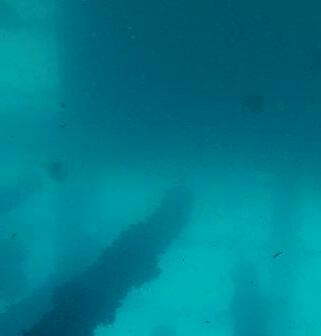
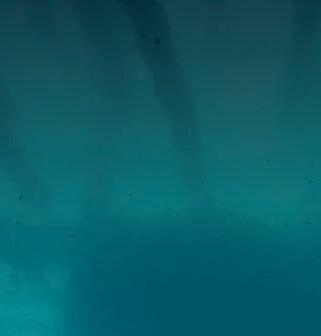

The Whitby Lobster Hatchery 32-33 Shellfish science Mussels on the move 34-35 Canada
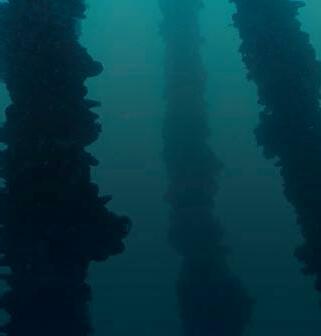
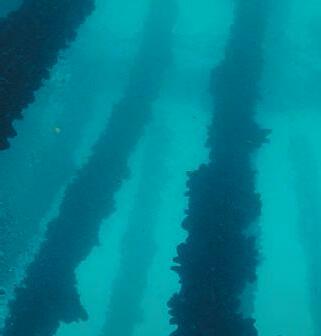

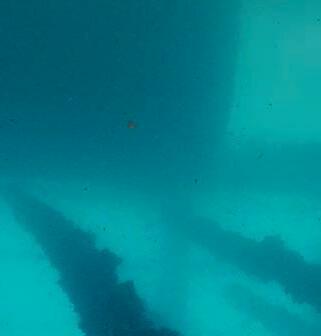
Sandy Neil 36-40 Iceland


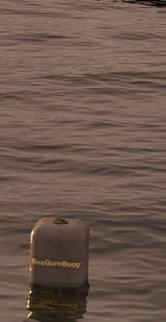
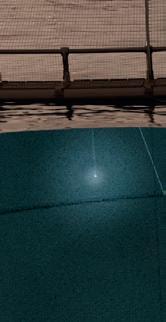
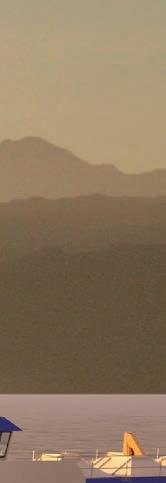


Striving to be your supply partner of choice.
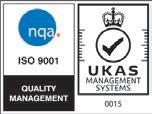





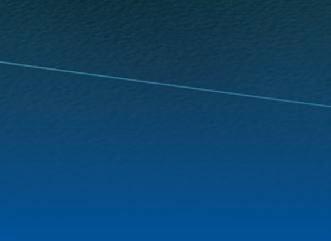

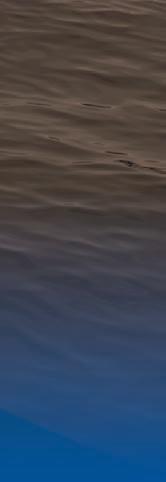
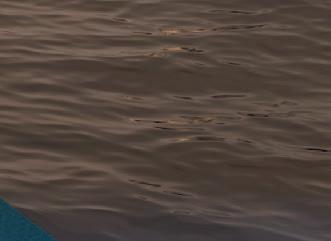

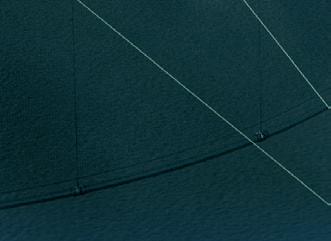

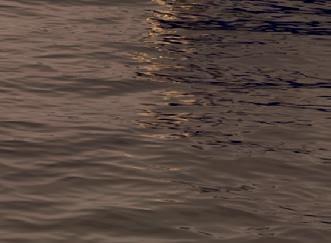
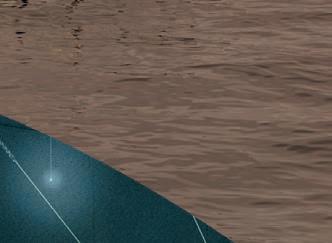
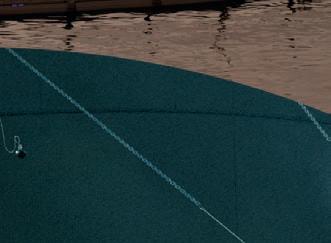

Building stronger and better quality of equipment remains our driving motivation as a supply partner, supporting our customers in their aims for improved safety, security, and sustainability, all of which count towards the growth of a healthy, nutritious, and superior class of seafood.
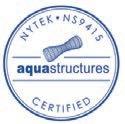



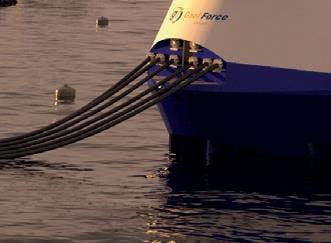
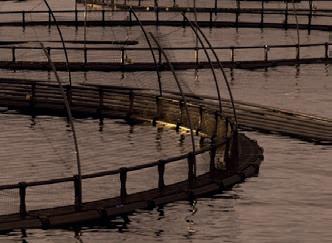


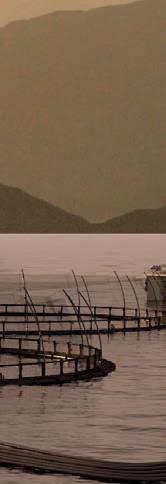

the impact of offshore developments such as aquaculture and renewable energy.
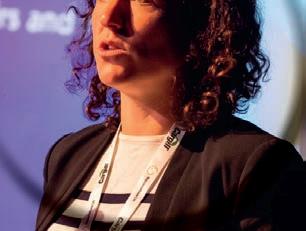
Loch Fyne Seafarms is to receive nearly £133,000 for a new facility to process its farmed shellfish for premium markets in the US and Asia.
Other funded organisations include fisheries and fishing ports, cold storage facilities and processors, seaweed producers and Seafood Scotland, which receives £1,625,000 for a promotional campaign in domestic and export markets, and £300,000 for the Scottish Nephrops Programme, promoting langoustines.
Duplication criticised
SEAFOOD processors, salmon and shellfish farmers, and fishing businesses are among the recipients of the latest round of funding from the Marine Fund Scotland.
The Scottish government-backed fund is distributing a total of more than £13m to 60 projects in the seafood industry, with grants ranging from £7,000 to £1.2m. As well as promoting growth for the industry, the grants are aimed at reducing its carbon footprint and improving sustainability.
Those selected for the current round include Organic Sea Harvest, which will received £1.1m for the installation of innovative full containment facilities at Lochinver. The project aims to reduce the number of wasted sea journeys due to bad weather, reducing fuel use, improving animal welfare and allowing the company greater continuity of supply.
Employee-owned processing business Aquascot will get £1.2m for improvements and modernisation of the salmon and trout processing facilities at its factory.
A grant of £855,000 will go towards the purchase of equipment for Thistle Seafood, which recently acquired the former Dawnfresh processing plant in Uddingston, near Glasgow. The investment, which includes around £2m from the company, is expected to save 40 jobs and create 60 more at the plant. It will allow investment in water treatment and cold storage will enable more efficient distribution, reducing the road miles for its products.
Thistle will also receive £33,000 for a new pastry machine to reduce waste in its en croute products.
Bell’s Seafood, in Scrabster, in the north of Scotland, is to get nearly £170,000 for a new salmon-filleting line, which aims to meet increase in demand by producing more product while also reducing wastage.


Hatchery Landcatch Natural Section gets just over £150,000 for new heat pumps and oxygen generation systems being installed. These will enable the site to meet 100% of energy demand from renewables. They will also improve fish health and growth by optimising water temperature and oxygen content.
Salar Pursuits Ltd, which is developing innovative containment technology to protect fish in net-pens against sea lice, receives £27,671
The Atlantic Salmon Trust will get nearly £623,000 for a project to improve information on the migration pathways of salmon smolts from nine west-coast rivers to the open ocean. The initiative aims to inform the regulatory system regarding
Announcing the recipients of the fund during a visit to a shellfish processing facility at Bellshill, Rural Affairs Secretary Mairi Gougeon said: “I am very pleased for those organisations and individuals whose applications have been successful this year.
“Marine Fund Scotland has enabled some really exciting projects in the past and I’m confident that this round of funding will play an important role in continuing to help our marine and fisheries businesses to develop and move to the next level.
“The Marine Fund Scotland will continue to be key in supporting sustainable development of Scotland’s Blue Economy –investing in Scotland’s seafood sectors, creating sustainable jobs,and helping to protect Scotland's marine environment.”
Earlier, Gougeon criticised the UK government’s UK Seafood Fund, which recently announced its own round of grants.

She said: “The UK government continues to make spending decisions on marine and fisheries in Scotland, which is an area devolved to the Scottish government.
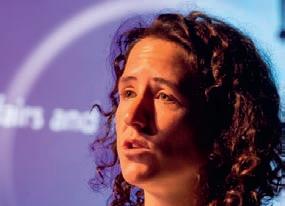
“We have continually pressed the UK government to commit to providing the Scottish government with a fair share of the £100m pot that recognises the size and significance of our marine sectors, to distribute in line with our priorities.
“Instead, what we have is the UK Seafood Fund operating in the same space as our own established Marine Fund Scotland scheme, which already provides vital targeted grant assistance to the Scottish marine and seafood sectors to enhance quality, support innovation and add value. This causes unnecessary confusion and duplication.”
Ronja
18 November.
T he vessel has state-of-the-art life support systems, including highcapacity oxygen production, a carbon dioxide removal system, and a water cooling system to ensure the fish are kept in optimal condition during treatment. In addition, it has an automatic cleaning system, alongside sensors and cameras to monitor fish and water quality.
T he Ronja Star is fitted with dieselelectric propulsion and a battery hybrid solution, which reduces fuel consumption and emissions, as well as generating less noise.
BAKKAFROST S cotland has taken delivery of the largest wellboat to be deployed in the S cottish aquaculture sector.
T he Ronja Star is a hybrid vessel commissioned from Norwegian wellboat operator S ølvtrans. It boasts world-leading technology, with an FLS mechanical sea lice removal system and the capacity to provide freshwater

treatment. It uses a reverse osmosis system for the desalination of seawater, producing freshwater to improve gill health and remove sea lice.
S enior management from Bakkafrost S cotland (formerly T he S cottish S almon Company), A ngus Brendan MacNeil MP and A lasdair A llan MS P, as well as local government representatives, officially welcomed the
Ian Laister, Managing Director at Bakkafrost S cotland, said: “ Our ambition is to become the leading most sustainable salmon producer in S cotland. T he proactive management of the health and welfare of our salmon is at the forefront of our sustainability strategy.
“T he arrival of the hybrid Ronja Star reflects and enhances those ambitions. T he investment in this vessel will allow us to substantially increase the use of freshwater treatments for gill health and, when required, remove sea lice in a single treatment. This will improve fish health and biological performance.”
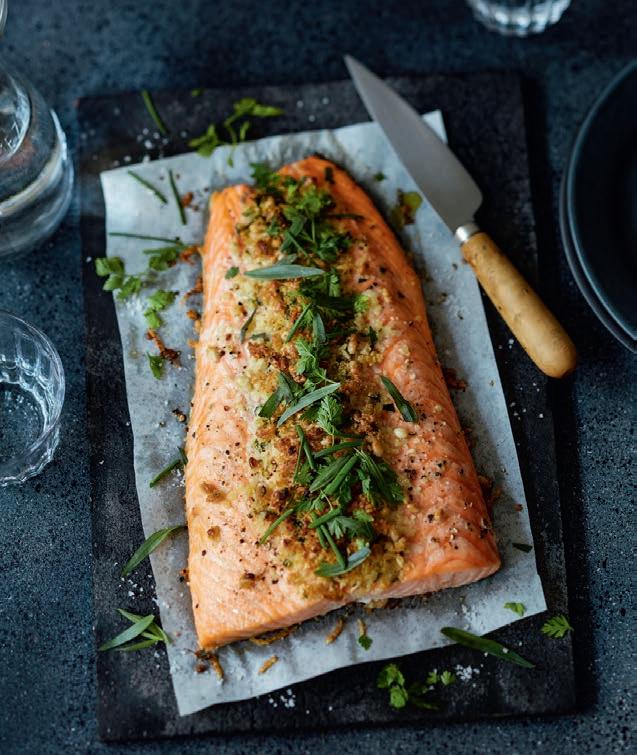
TRADE body Salmon Scotland has been accepted into the prestigious Worldchefs group, which represents chef associations across the globe. Through the partnership with Worldchefs, Salmon Scotland hopes to consolidate Scottish salmon’s position at the top of menus round the world, and encourage more leading chefs to visit Scottish salmon farms to “get their feet wet” and see for themselves where the finest salmon comes from.
Worldchefs Managing D irector Ragnar Fridriksson said: “Producers and chefs have a special, crucial connection. Worldchefs is proud to partner with Salmon Scotland and looks forward to supporting its world-leading standards in aquaculture, community initiatives and ambitious vision for a better future.”
The World A ssociation of
Chefs’ Societies, known as Worldchefs, is a federation made up of 110 national chef associations, founded in 1928 by the venerable Auguste E scoffier.
Salmon Scotland Chief E xecutive Tavish Scott said: “Top chefs across the globe want to cook with the very best ingredients, and that’s why they love cooking with Scottish salmon and serving it to their customers... as a member of Worldchefs we want to bridge the gap between farmers and chefs to increase awareness and understanding of where Scottish salmon comes from and cement its place in the world’s top restaurants.”
IN what is becoming an annual event, Mowi Scotland employees across the Highlands and Islands have chosen to provide a helping hand to over a dozen local community organisations at Christmas. Responding to

the company’s Community Support Committee’s invitation to nominate a local organisation that could benefit from a cash donation for the festive season, employees came forward with many ideas that covered most of the regions where the company does business. A total of 14 organisations were selected by Mowi’s Community Support Committee and offered up to £1,000 each, to be delivered by the nominating employee before Christmas.
PRODUCERS and suppliers from Scotland will have a dedicated pavilion at Aqua Nor, the largest trade show for aquaculture, for the first time since 2017.The event will be taking place in Trondheim, Norway, on 22–24 August next year.The “Team Scotland” presence is being coordinated by the Sustainable Aquaculture Innovation Centre (SAIC), state agencies Highlands and Islands Enterprise (HIE) and Marine Scotland, as well as trade body Salmon Scotland. Scottish businesses active in the aquaculture supply chain have been invited to be part of the collaborative delegation.

Right: Scottish Pavilion, Aqua Nor
SCOTTISH Sea Farms Hatchery Engineering Manager and volunteer coastguard Steven Nicolson has received a commendation for Meritorious Service for his role in rescuing a woman from a cliff edge in Lerwick last year. He was first on the scene and managed to build up

a rapport with the woman – who had been threatening to take her own life – but she slipped and was left clinging on to the grass verge above a 90-foot drop. Nicolson threw her a rope and held her full body weight until his teammates set up their equipment and completed the rescue.
A report into an accident on a workboat operated by Mallaig Marine has highlighted a number of safety issues contributing to the incident.
A deckhand on the workboat Annie E was taken to hospital on 3 April this year after being struck by a falling grid buoy, which the workboat’s forward crane was lifting at a fish farm site off the Isle of Muck on Scotland’s west coast.
The report, from the Marine Accident Investigation Branch (MAIB) of the UK’s Department of Transport, said that Annie E’s skipper had noticed that the grid buoy was out of position and needed to be lifted in order to recover and re-lay its mooring anchor.The workboat’s forward crane was used to lift the buoy and its anchor connection out of the water.The buoy was suspended nine metres above the water when its metal components experienced a mechanical failure, resulting in the buoy falling and striking the deckhand.
The MAIB said: “First aid was administered to the injured deckhand, who was evacuated by a coastguard helicopter to hospital, where he underwent surgery. He has since received further surgery and treatment.”
Mallaig Marine offers a range of services to the aquaculture sector and has an ongoing contract with Mowi Scotland (formerly Marine Harvest), including two workboats, Annie E and Emma C. The key safety issues identified by MAIB were:

• the deckhand was injured when he was struck by a falling grid buoy that had been lifted by Annie E’s forward crane;
• the deckhand was standing near to the suspended buoy, contrary to the workboat owner’s risk assessments, method statements, lifting plan and industry guidelines;
• the risk assessments and method statements did not fully mitigate the risks associated with a suspended load;
• the grid buoy was not certified as lifting equipment and the lifting technique used did not comply with the manufacturer’s recommended procedure, which the vessel’s owner and crew were unaware of;
• the grid buoy’s metal components were worn and the top washer was missing, both of which resulted in its failure; and
• there was no record of the buoy having been inspected before installation or routinely checked in accordance with manufacturer’s guidelines while in service.
The MAIB report said: “In view of the actions taken by the organisations involved in this accident, no safety recommendations have been made.”
The Annie E was built by Neptune Shipyards, in the Netherlands, in 2017.
SALMON was at the centre of an early St Andrew’s Day celebration in Paris in November.
Scottish Rural Affairs Secretary Mairi Gougeon was joined by acclaimed chef Hirose Abe and Tavish Scott, Chief Executive of industry body Salmon Scotland at the British Embassy for a celebration of Scottish food and drink.
The event also marked the 30th anniversary this year of Scottish salmon achieving the coveted “Label Rouge” designation in France, which recognises farmed or food products of superior quality.
The French market for Scottish salmon has boomed in recent years, with exports up from £221m in 2019 to a record £304m last year. France now accounts for half of the value of all the UK’s salmon exports.
Gougeon said: “This week as we celebrate all that Scotland has to offer on our national holiday, St Andrew’s Day, it is fitting that the Scottish salmon success story is high up on the agenda.
“I was pleased to be in Paris to continue the close collaboration between the governments of Scotland
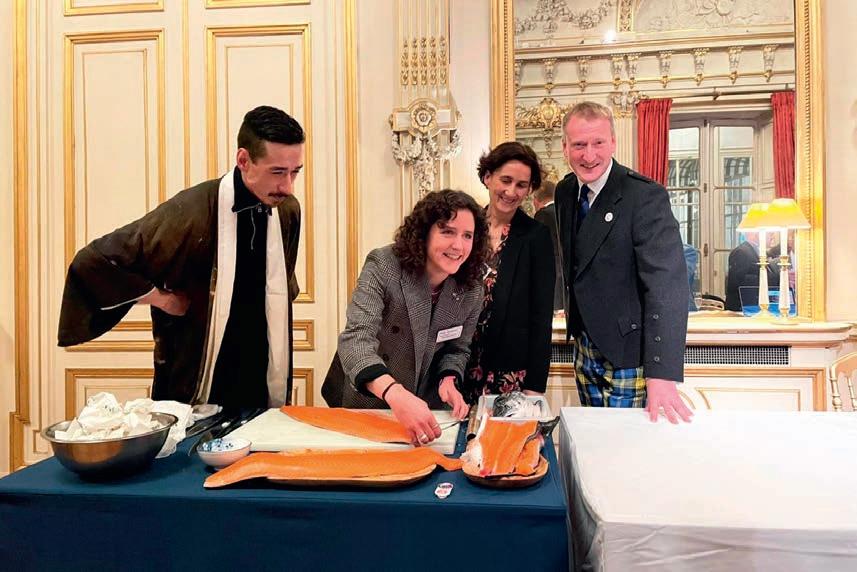
and France, and to consider ways in which we can support exports of salmon to the EU and France in particular.”
Tavish Scott said salmon companies had “overcome the new bureaucratic
difficulties” caused by Brexit to bring salmon to France “as quickly and efficiently as possible”.
He added: “We are immensely proud to be at the heart of this new ‘Auld Alliance gastronomique’.”
MULL -based Inverlussa M arine Services has taken delivery of its new service vessel, the Eloise Eslea . It is the latest addition to its growing fleet of modern, purpose-built workboats for the Scottish aquaculture sector.
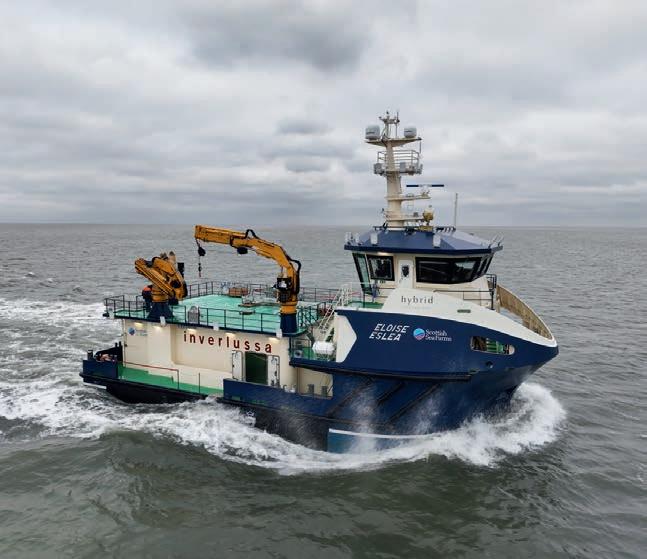
Designed and built at N auplius Workboats in the N etherlands, the Eloise Eslea is equipped with the latest technologies, including dynamic positioning to increase usability out on farm during severe weather and provide a safer working environment for the crew.
The 27-metre workboat is also fitted with diesel-electric
propulsion and a battery hybrid system to lower fuel consumption and emissions during standby or overnight, further cementing Inverlussa M arine Services’ reputation as a leader in greener technologies.
Commenting on the new arrival, Inverlussa M arine Services M anaging Director Ben Wilson said: “The Eloise Eslea is another fantastic addition to our fleet, representing a huge investment both in terms of local job creation and in the future of the Scottish aquaculture sector."
O n contract to Scottish Sea Farms, the vessel will now travel to Shetland, where it will be fitted with a nextgeneration Scale AQ thermo-delousing system, with engineering works by O cean Kinetics, ahead of going into service in 2023.
Scottish Sea Farms Shetland Engineering M anager and project lead Keith Fraser said: "The Eloise Eslea adopts all the advances previously made when designing its sister ship, the Kallista Helen , and builds on those with a number of adjustments and enhancements. The result will be an even gentler, swifter experience for the fish and a safer, more secure environment for the crew."
The Eloise Eslea takes Inverlussa M arine Services’ fleet to 19 and has created a further six jobs within the company, bringing the total number of employees to 110 – the majority of those living in the same remote coastal communities as they work.
Notpla, based in London, has created a material derived from seafood that is environmentally friendly and biodegradable. As the winner in the “Build a Waste-Free World” category, the company will receive £1m.

A UK startup company that has developed a seaweedbased alternative to plastic was named as one of the
winners at the Earthshot environmental awards, held on 2 December in Boston, US.
The Earthshot prizes were presented by HRH William, Prince of Wales. They were the first of a series of awards over the next 10 years dedicated to promoting organisations and businesses with solutions to help repair and restore the planet.
Notpla was founded by Rodrigo Garcia Gonzalez
and Pierre Paslier while they were students at Imperial College London and the Royal College of Art. The material can be used to create a range of packaging products, such as a bubble to hold liquids, a coating for food containers, and a paper for the cosmetic and fashion industry.
Notpla has been used by food delivery service Just Eat in more than a million food takeaway boxes. At the London Marathon in 2019 36,000 Notpla-made Oohos – edible “bubbles” filled with Lucozade – were handed to runners.
THE Aquaculture Stewardship Council (ASC) has reported a 144% increase in Scottish salmon farms applying for ASC certification in the last year.
The ASC programme tests the social and environmental credentials of aquaculture businesses and provides assurance to consumers.
ASC CEO Chris Ninnes commented: “The availability of ASC-certified salmon products in the UK has increased by 61% in the last year alone, and three-quarters of UK consumers associate the ASC label with trust and sustainability. What’s clear is that salmon consumers want products that are in line with their values. They want to know that the fish they’re eating isn’t damaging the planet and has been raised with care for workers and communities. And retailers will follow their consumers’ values.
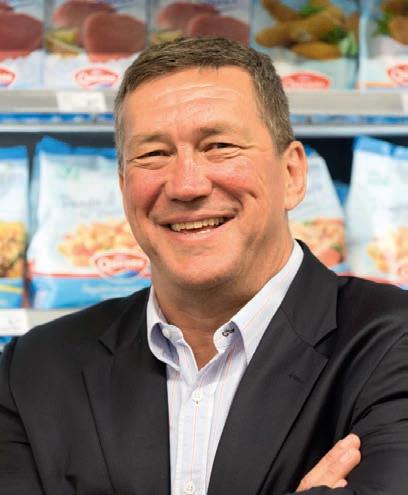
“With 16 more farms going through the initial audit stage right now, by this time next year it is possible that the number of Scottish salmon farmers who have achieved ASC certification will have doubled.”
Mowi was the first company in Scotland to achieve ASC certification for one of its farms. Mowi now has 30 salmon farms certified or in initial audit stage. The company was also recently named as the ASC’s Retail Supplier of the Year for 2022.
Scottish Sea Farms and Bakkafrost Scotland are now also on board – the former with three farms certified and the latter with three farms certified or in the initial audit stage.
ASC estimates that demand for ASClabelled salmon products is growing at 61% year on year in the UK.
AQUACULTURE biotech business Benchmark has reported strong growth in revenue and profit for the year to 30 September 2022, with adjusted EBITDA (earnings before interest, taxation, depreciation and amortisation) up 60%

Revenue for the 12-month period was £158.3m (2021: £125.1m) and adjusted EBITDA was £31.2m (2021: £19.4m).
Adjusted operating profit was down, however, to £9.1m (2021: £10.8m).
This year has seen the roll-out of Benchmark’s sea lice treatment solutions, Ectosan Vet and CleanTreat, and revenue from the Animal Health division was up markedly, from £7.8m to 20.1m.
Benchmark has also announced the terms of its contemplated private placement and retail offering in Norway in connection with a proposed admission to Euronext Growth Oslo.
The company expects to have a dual listing on Euronext Growth Oslo this year, with the intention to uplist to the Oslo Børs in H1 calendar year 2023.
Trond Williksen, CEO, commented: “In FY2022, Benchmark delivered another year of growth and strategic progress, underpinned by four quarters of consistently improved financial results.This demonstrates the success of our restructuring and culture change, the quality and potential of our business, and the talent and commitment of our people, as well as the underlying strength of our markets.
“Our strategic and commercial focus have contributed to strong results. Going into the new financial year, there is good momentum in line with our expectations and positive dynamics in our industry, creating significant opportunities to deliver value for all our stakeholders.”
AFTER its parent, Dawnfresh Seafoods, fell into administration earlier this year, trout farmer Dawnfresh Farming continued to trade solvently – with the help of a £2m loan from one of its directors.
Dawnfresh Seafoods was placed into the hands of administrators, FRP Advisory, in February. The latest accounts for its subsidiary Dawnfresh Farming, published yesterday, show that the business recorded a gross profit of just under £4.48m on turnover of £20.4m for the period to 27 March 2022. Net profit was 2.24m, down 22% on net profit for the period 2020/21.
The fall in profit and turnover is attributed to “a significant environmental event” at the company’s Loch Etive 4 site. The annual report says that personnel were diverted to treat the fish rather than feeding them, which reduced the site’s harvest volumes.
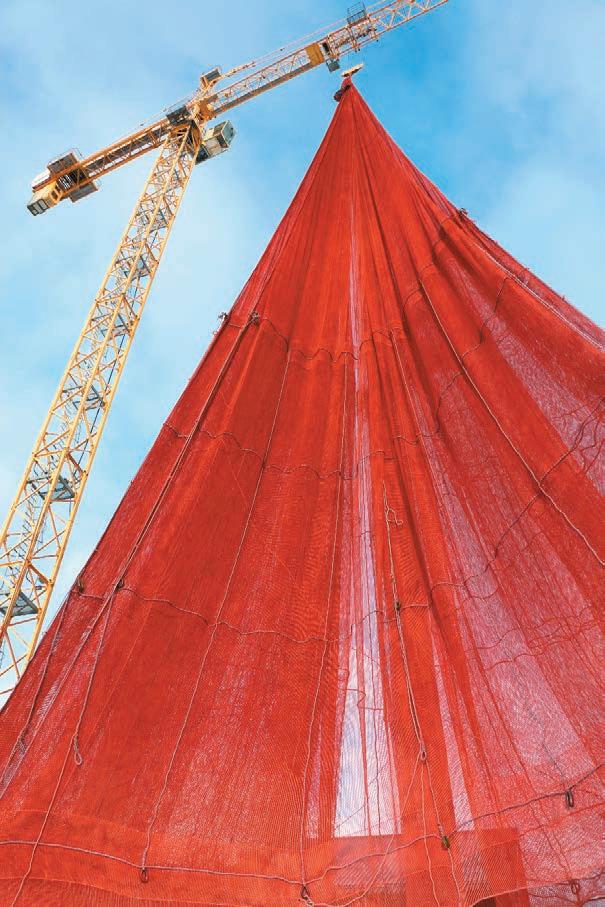

Following the collapse of Dawnfresh Seafoods, the report says, the “vast majority” of sales for Dawnfresh Farming have been made to overseas companies directly. It goes on: “This has been very successful as export sales have largely been at higher prices and the exchange rates have been in our favour.”
The company’s going concern report states: “The directors have effectively managed their cashflow by securing £2m loan funding from a director at March 2022.”
In February, FRP Advisory sold Dawnfresh’s Arbroath processing facility to Lossie Seafoods Limited, part of the Associated Seafoods Limited (ASL) group, and in June it was announced that Thistle Seafoods had agreed a deal to acquire the former Dawnfresh plant at Uddingston, near Glasgow.
The administrators are reportedly confident that they will find a buyer for the fish farming business.

MOWI CEO Ivan Vindheim has published a consultation paper setting out an alternative to the Norwegian government’s proposed ground rent tax on fish farms.
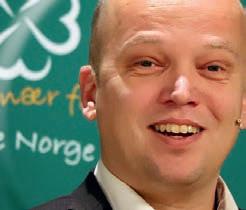


Vindheim says the Norwegian government has formulated its tax model on false premises, but believes a solution can be found to what is becoming an increasingly bitter dispute.
His alternative plan would effectively see a big reduction in the 40% rate.
While the document is critical of the budget proposal, Vindheim’s tone is conciliatory. He says Mowi and the government share the same ambitions for Norwegian aquaculture – in that they want to create jobs and expand the industry along the coast. But the current proposal, he argues, completely undermine such plans.
The document says: “Mowi believes the government’s proposal does not meet academic goals and has been sold on false premises.
“Ever since the government’s press conference on 28 September, we have




calculated how the proposal will turn out for us and the rest of the industry.
“Although the proposed tax model apparently works as intended in the power and petroleum sectors, it is unfortunately not applicable to the aquaculture industry. Our value chain is significantly more complex. In addition, less than 20% of the breeder’s investments will be deducted, while 80% of the profit will be taxed.”
He said the 40% rate was the same as that set for the energy wind power sector, which was quite different from aquaculture in several ways, yielding substantially higher tax revenues than the NOK 3.65bn estimated by the government.
He said Mowi was proposing that the government should set up a special committee to
examine the entire taxation structure on the fish farming industry.
He concluded: “We hope the government is willing to take a step back and contribute to the design of a tax model that is adapted to the aquaculture industry through a broad cross-party settlement.”

Meanwhile, the Norwegian government is looking at setting up an independent body to set standard salmon prices, based on market values, as the basis for its proposed ground rent tax.
The plan was unveiled to the employer organisations Seafood Norway (Sjømat Norge) and Seafood Companies (Sjømatbedriftene), when they met Finance Minister Trygve Vedum and Fisheries and Oceans Minister Bjørnar Skjæran on 18 November.

The government had asked for a meeting with Norway’s big five salmon companies, but they turned down the invitation, claiming it was a move to split the salmon farming industry.
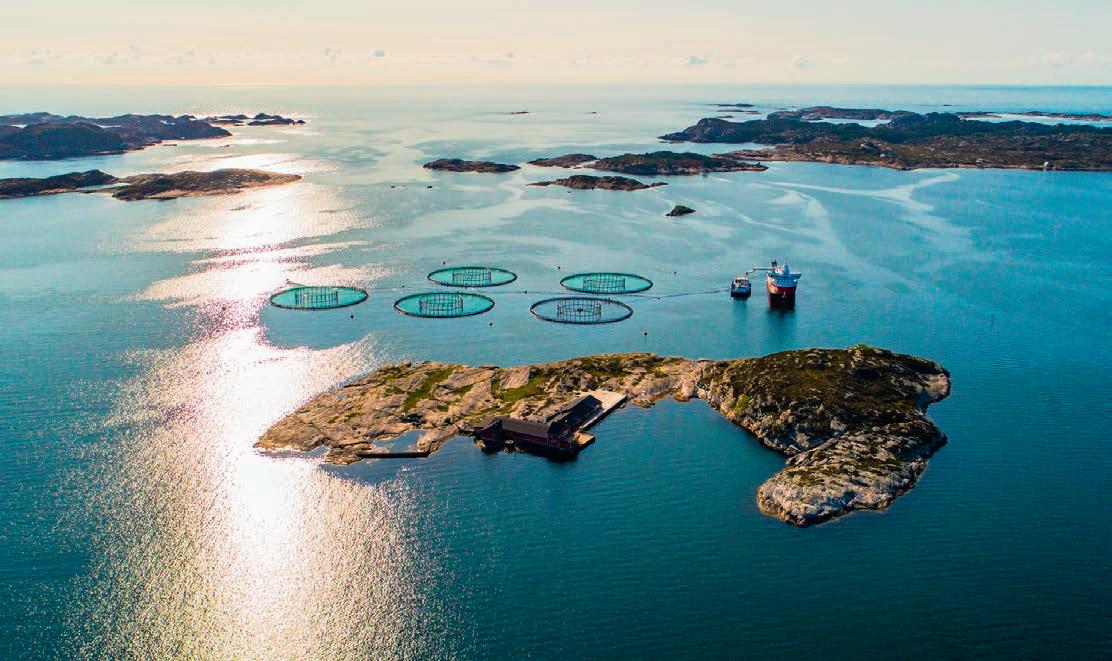
The full details have yet to be set out, but the government’s goal is to try to find the market price for salmon, and Vedum told a press conference after the meeting there were several possible ways to do that.
He said the ruling Labour-Centre Party coalition was considering setting up an independent body to determine standard prices as a basis for the tax.
It is, therefore, real income from the sale of salmon that must be used as the basis for taxation and it should be a fair tax, he contended.





The proposal was to set up an independent standard price council and there would be no tax on further processing, Vedum insisted.
He also repeated that the government would not back down from its plan to impose a ground rent tax on the salmon and trout industry (along with the offshore wind power sector) reminding the public that “the high profitability of the aquaculture industry comes from our shared natural resources and skilled people along the coast”.
So far the industry reaction has been lukewarm, but the idea has not been rejected out of hand. Further talks are expected on the issue.
Some large companies have expressed concerns that a spot price for salmon, which could be the basis for a producer’s assessed tax liability, might well be higher than the prices achieved under contract deals.
Paul Birger Torgnes, Chairman of Seafood Norway, said after the meeting clear views had been expressed on both sides even if even if there were differing opinions on the tax.












“We have received a concrete input today that helps to remove some of the uncertainty, and we appreciate that,” he added. “We must look at their proposal and we believe, along with the ministers, that real income should be the basis.”
Måsøval scraps innovative semi-closed fish pen project, citing tax worries
Meanwhile in November, fish farming company Måsøval announced it had decided to postpone the start of its high profile Aqua Semi project due to the government’s proposed ground rent tax on aquaculture.
Aqua Semi is a semi-submersible, semienclosed salmon production unit built in steel. The unit has tight steel walls down to a depth of 25 metres and has all operating functions integrated. It is designed to significantly reduce the risk of escapes, lice and other waterborne infections. Måsøval has said the system will contribute to better fish health and faster growth.
Apologising for the impact the decision will have on suppliers, the company said: “As a










result of the proposed ground rent tax, Måsøval has chosen to postpone the implementation of the Aqua Semi concept.
“Aqua Semi is designed to open up new areas for salmon farming, reduce lice and disease contagion and improve fish health. The preproject is now finalised and the unit is ready to be built.

“The government’s proposed resource tax on aquaculture represents an unacceptable risk for the project. Måsøval AS has therefore decided to postpone a decision to start the project.”
Aqua Semi was due to be located at Fagerholmen in the Frøy Fjorden when it has been built, an area that has strong ocean currents, ensuring a good supply of fresh and nutrient-rich water.
The area has climatic challenges that make it unsuitable for small, traditional facilities. Aqua Semi is constructed to withstand weather and wind, but the industry has found that large facilities can have unique challenges.
Some politicians have expressed scepticism regarding the industry’s tax-related job cuts and are calling for state subsidies for redundancy pay-outs in the aquaculture sector to be ended, arguing that it is not as risky an industry as catch fishing (for more, see Processing News, page 22).
FORMER Mowi CEO Alf-Helge Aarskog has taken on a new role in aquaculture leading business development at Norwegian salmon company Eide Fjordbruk.
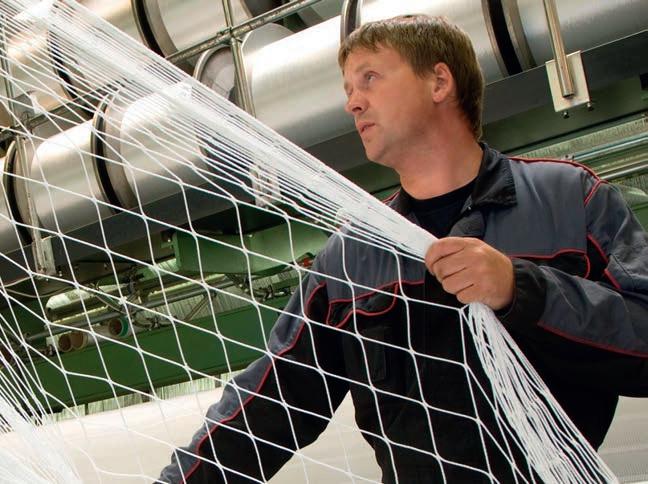

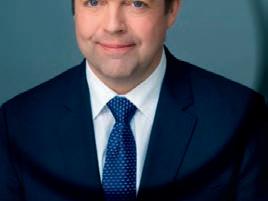
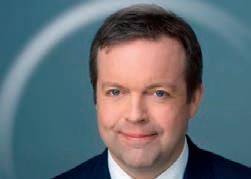
Aarskog starts in his new
post on 1 January. He has been taken on to continue with the development of the company and its Watermoon project, which involves the futuristic “Salmon Eye” aquaculture visitor centre.
Aarskog left Mowi in November 2019 after 10 years with the salmon giant. Since then, he has joined the board of Samherji, Iceland’s largest fishing and seafood business, and, in August, he joined a new business venture headed by NTS founder Helge Gåsø.

Left: Alf-Helge Aarskog
FORMER Salmon Evolution CEO Hakon Andre Berg has announced he will be joining Skeie Group as CEO next year. He left the land-based fish farmer earlier this year, citing family reasons.
Skeie Group is a family-owned investment company located in Kristiansand, focused on real estate, capital investment and technology. Berg said: “As one of the most successful serial entrepreneurs in Norway, Bjarne Skeie has an extremely impressive track record from industry and technology development, and I am privileged to get the opportunity to work closely with him and his excellent team.”
AFTER two years of disruption through Covid, the North Atlantic Seafood Forum (NASF) is set to make a physical return next year. It will be held at the Radisson Blu hotel, Bergen, between 7 and 9 March 2023.
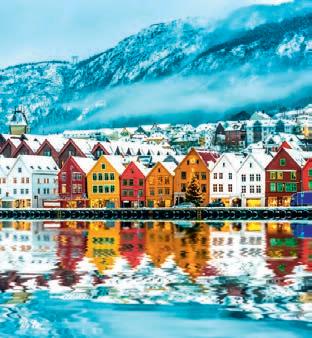
This prestigious event has in the past attracted the leaders of global fishing and aquaculture industries. The organisers said: “After a couple of years with digital and postponed conferences, we are now pleased to be back on track.
“We have the privilege of inviting the leaders of the global seafood
industry back to Bergen at the usual time in March.
NORWEGIAN net and mooring business Mørenot is to join its Icelandic equivalent, Hampiðjan, in a merger
owns both
name.
FSN Capital V, the investment fund that owns a controlling interest in Mørenot and Hampiðjan, said: “The combination of Hampiðjan and Mørenot will create a leading global player and enable significant synergy potential due to increased product availability, optimisation of production, integration and a stronger position within core markets.”
The FSN statement added that an increased geographic footprint will enable the combined group to cross-sell products in their respective market areas. Hampiðjan has operations in 15 countries around the world and Mørenot has operations in eight countries. In some regions, the businesses are such that it would be suitable to combine them, FSN said, and in other regions, it will be possible to offer a greater breadth of product range to the customers.
The transaction will be paid in new Hampiðjan shares to FSN Capital V and the other shareholders in the Mørenot Group.
Following the transaction, the Hampiðjan Group aims to seek admission of its shares, which are currently listed on Nasdaq First North, to trading on the Main Market of Nasdaq in Iceland in the first half of 2023.
FSN said it is assumed that in conjunction with the listing, Hampiðjan’s share capital will be increased in order to diversify the shareholder base, optimise the capital structure and to secure capital for additional investments in the Group’s production activities in Lithuania, allowing the company to expedite the realisation of synergies through the sale of products within the group.
The combined group will employ over 2,000 people in 18 countries, and have a turnover of over €300m (£259m). Current Mørenot shareholders will hold approximately 9% of the combined group. No cash proceeds will be distributed in connection with the share transaction.
Ulrik Smith, Co-Managing Partner at FSN Capital Partners (investment advisor to FSN Capital V), commented: “During the last few years, Mørenot has continued its sales growth by developing into a more structured company with improved production, organisation and product portfolio. The combination with Hampiðjan will create a global leader and is a natural next step on this industrialisation journey of which FSN Capital V is excited to be a part.”
The transaction is subject to approval from applicable authorities.
FSN V is one of the funds operated by the Oslo-based FSN Capital Group, which describes its approach as “positive capitalism”.
THE Chief Executive of the Norwegian Seafood Council, Christian Chramer, has warned that the industry is facing tougher times ahead.
Three weeks ago, the industry hailed October as another recordbreaking month for both salmon and other fish exports.
However, last month, Chramer reminded Norway’s fish farmers and fishermen that global economies were tightening, which he said was worrying.
He said: “So far this year, a record high export value has been achieved for a number of species, such as salmon, cod, trout, pollock, haddock and prawns, but there is a gloomy veil over the strong growth.
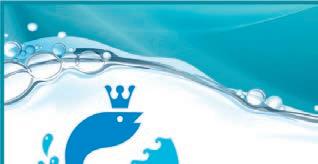
“We live in a demanding and troubled time, with high food inflation and a fierce battle for proteins all over the world.
“This has led to historically high prices for Norwegian seafood. In addition, a weaker Norwegian krone in October helped to lift the export value. The price, in Norwegian krone, will be higher with a weaker Norwegian krone.”

Chramer said other challenging factors included changes in seafood consumption and tighter private household finances in the major markets.

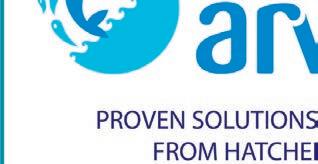
LAND-based salmon farmer Andfjord Salmon has reported a third-quarter operating loss of NOK 14.7m (£1.2m), up from a loss of NOK 11.4m (£950,000) on the same period last year.
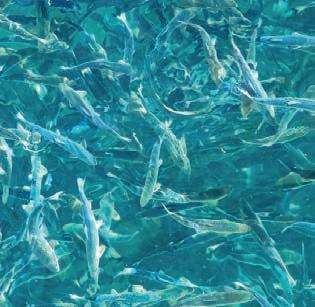

But the company has also reported continued good biological conditions at its first land-based pool at Kvalnes, Andøya, Norway.

Andfjord Salmon reports holding cash and deposits of approximately NOK 117m (almost £10m), which did not include further loan and undrawn credit facilities totalling NOK 30m (£2.5m).


Andfjord is developing a land-based salmon farm at Kvalnes, on the island of Andøya in the Vesterålen archipelago, which has a licence to produce 12,600 tonnes and rights to expand to an additional 77,400 tonnes. It operates a flowthrough system.
The Q3 report says that at the end of November the average weight of the salmon was 1,350 grams, a



















healthy gain from 560 grams at the end of September. The average weight of the smolt was 120 grams when it was released in June.
The salmon’s survival rate remains high, standing at 98.7% at the end of last month.
CEO Martin Rasmussen said: “The foundation is strong biological conditions and a pool ecosystem that is as close as possible to the salmon’s natural habitat in the ocean outside Andøya.”
The company’s first operating revenues will be generated next year following the first harvest.


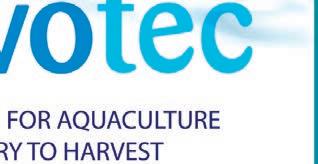
MÅSØVAL Eiendom has said it is exploring the potential of taking on a strategic partner in Icelandic salmon company Ice Fish Farm, which it says has the potential to outgrow its parent.
is the main shareholder in the business, which, unusually for a fish farm, is based on Iceland’s east coast. The majority of aquaculture businesses are located in the Westfjords region.
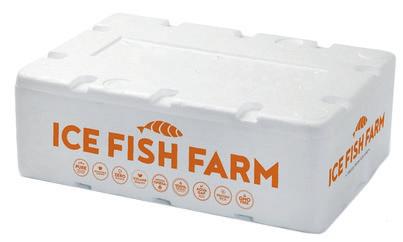
It is thought Måsøval has already received enquiries from a number of possible players.
Lars Måsøval, Chairman and CEO, Måsøval Eiendom, said: “Ice Fish Farm is the largest salmon farmer in Iceland in terms of licence capacity,and is the only salmon farmer on the east coast.
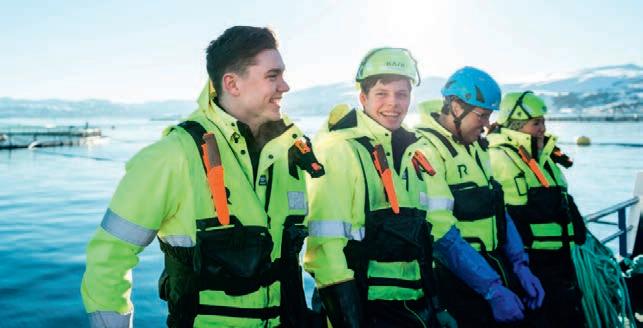
“The company has licences and applications, and additional capacity within its many fjords, to become a significant player in the global salmon farming industry and be much larger than Måsøval’s Norwegian farming operations.”
He added: “Furthermore, the company has just started this growth
journey and will be stocking about six million smolts this year.
“Hence, we believe it is the right timing for Måsøval Eiendom to explore the possibilities of bringing in a strong partner, alongside ourselves, to support the upcoming growth phase of Ice Fish Farm.”
He stressed that any establishment of a partnership would not change the fundamental objective of Måsøval Eiendom, which is to continue as a long-term shareholder of Ice Fish Farm.
The initiated partnership process is expected to be concluded by the first half of 2023.
Måsøval has also just announced its third-quarter operating profit, which is halved from NOK 121m (£10.05m) last year to NOK 62m (£5.15m) this time.
The company said it was hit by demanding biological challenges during the period, mainly linked to sea lice. The harvest volume dropped from 7,265 tonnes a year ago to 4,863 tonnes this time.
THE NTS group has unveiled a reduced third-quarter operating profit, or EBIT, of NOK 78.5m (£6.5m). The operating profit in Q3 last year was NOK 98.3m (£8.1m).
The results were announced as it emerged that SalMar is now making a bid for all the shares in the business, not just a majority holding.
The Norwegian and EU competition authorities approved SalMar’s planned acquisition of NTS during the summer, with the deal completed earlier this month.
The NTS group’s total operating income for the period was NOK 615.3m (£51.5m)
against NOK 453.8m (almost £38m) in the same period last year. Most of the farming operations, which have been sold to SalMar, are not included in these results and have been classed as discontinued operations.
NTS is feeling the impact of higher inflation, which is affecting all aquaculture businesses. It said salary costs had increased by NOK 4.5m (£375,000) over the past 12 month.
The NTS group has unveiled a reduced third-quarter operating profit, or EBIT, of NOK 78.5m (£6.5m). The operating profit in Q3 last year
was NOK 98.3m (£8.1m). SalMar has made a NOK 9.5m (£790,000) bid for all the outstanding shares in NTS. The offer is lower than expected because of the impact the salmon tax will have
on Norwegian aquaculture businesses.
It is also expected that SalMar will have to sell Frøy in order to reduce the debt burden incurred acquiring Norway Royal Salmon and other parts of NTS.

Norwegian, Scottish and Canadian subsidiaries – the opportunity to purchase shares in the company at a discounted price.
Based on that figure, eligible employees were presented with three alternative offers*:
• Alternative 1: Purchase 48 shares at a value of approximately NOK 7,500, with a taxable discount of NOK 1,500 and a purchase price around NOK 6,000.
• Alternative 2: Purchase 96 shares at a value of approximately NOK 15,000, with a taxable discount of NOK 3,000 and a purchase price around NOK 12,000.
• Alternative 3: Purchase 193 shares at a value of approximately NOK 30,000, with a taxable discount of NOK 6,000 and a purchase price around NOK 24,000.
MOWI
The offer is based on the average purchasing price for the company’s shares on 1 December 2022 of NOK 155.3365 per share.
The Board of Directors of Mowi ASA had approved an offer giving all permanent employees in the company – and its
Mowi said it had received acceptances of these offers from just over 970 employees for a total of 175,342 shares to a total value of around NOK 27m (£2.27m).
These shares will now be sold on to the employees who have agreed to participate in the offer.
Last month, Mowi recorded record high third quarter results including an operating profit of €240m (£207m).
*Current exchange rate NOK 11.9 = £1 sterling
NOVEMBER proved to be another record month for Norwegian salmon exports, with overall seafood sales rising by 19% to reach NOK 14.4bn (£2.2bn).
So far this year, the country’s recorded farmed and catch fish exports have totalled NOK 123bn (£10.25bn) – NOK 29.2bn (£2.4bn) more than over the same period in 2021.
Salmon export volumes fell marginally last month to 125,234 tonnes, but the value was up by 28%, reaching NOK 10.1bn (£840m), making it another record month for the pink fish.
Once again, Poland, France and the US were the largest markets, with North America recording the largest increase. Sales to the US rose by 87% to NOK 431m (£36m).
Christian Chramer, Norwegian Seafood Council CEO, said: “The export value in November is the third highest ever in a single month and confirms that Norwegian seafood still has a strong global position.
“It is nevertheless worth noting that the increase in demand is not from greater volume, but in increased prices.
“In general, we have a situation with high food inflation and increased costs, which are driving up prices throughout the value chain.”
He said price growth alone accounted for almost NOK 3bn of the total seafood exports of NOK 14.4bn in November. It was a particularly strong month for salmon, trout, pollock and cod, all of which achieved export records compared with November last year.
Farmed trout volumes were down by 25% to 4,897 tonnes, but the value rose by 7% to NOK 454m (£37.8m).
The main markets for Norwegian trout are the US, Thailand
and Lithuania. The latter bought 622 tonnes, a volume almost 1,000% higher than 12 months ago.
November was also a good month for fresh cod exports, which increased by 43% to NOK 178m (almost £15m).
Farmed cod export figures are being published for the first time, accounting for 500 tonnes worth NOK 28m (£2.3m). Spain was the largest market, taking 200 tonnes.
Frozen cod exports fell by 33% to NOK 234m (£19.5m). Shrimp exports rose by 40% to NOK 112m (£9m).

A group representing 25 environmental and sports fishing organisations has called on the Icelandic government to ban open-net farms in the country.

The demands comes just days after the Icelandic company Arnarlax was fined a record ISK 120m (£705,000) for allowing 80,000 fish to escape into a fjord. It has appealed the penalty.
The group, known as the National Association of Sports Associations, said it was issuing the challenge because Arnarlax could not account for the fate of so many salmon.
It said it wanted to see credible legislation that completely bans fish farming in opensea and fjord pens.
The statement continued: “The wild salmon population in Iceland numbers about 50,000 salmon. The accidental release is a grave environmental disaster for which Arnarlax has been fined ISK 120m and will have a serious genetic impact on wild salmon populations in Iceland.
“The accidental release is further confirmation that the beautiful promises of companies in fish farming are false and it also reveals the company’s indifference to the interests of nature when it has decided to protest the payment of the fine.”
Arnarlax has apologised for the incident, stressing that it had done everything it
could to prevent such an occurrence.
Mast, Iceland’s food and veterinary authority, said the administrative fine was for failing to report the loss of the fish.
Mast said: “During the slaughtering of sea pen 11 at Haganes in Arnarfjörður last October, it became clear that the company could not account for the fate of at least 81,564 salmon.
“A total of 132,976 salmon had been placed in the hatchery in October 2020 and July 2021.
“Recorded discards were 33,097 fish, but in October 2022, when the hatchery was slaughtered, the number that came out of the hatchery turned out to be only 18,315 salmon.”
Mast said that Arnarlax, which is owned by the Norwegian salmon giant SalMar, announced in August last year that a hole had been found in one of the pens.
The response was in accordance with requirements.
But when the numbers from the slaughter last October were revealed, it was clear that it was not possible to account for the fate of more than 80,000 salmon.
“MAST immediately started an investigation and… demanded, among other things, an explanation of the discrepancy in feeding, including the stated number of fish in the hatchery.
“It was then revealed that there had been significant deviations in the feeding of pen 11 since June 2021, or two months before the announcement of a hole in the pen last summer, which should have raised strong suspicions in the company that something serious was afoot.”
Below: Arnarlax farm
COMMERCIAL net-pen fish farming will be effectively banned in Washington State following an executive order from Commissioner of Public Lands Hilary Franz.
Washington, on the north-west Pacific coast of the US, had already turned down applications to renew the leases for the state’s last two remaining netpen fish farms, both operated by Cooke Aquaculture.
Franz’s announcement, made on 18 November, makes it clear that net-pen fish farming will not be permitted by Washington’s Department of Natural Resources (DNR) on state-owned aquatic lands, effectively closing down the industry permanently.
The order will align Washington’s net-pen salmon aquaculture policy with policies already in place in Alaska, California and Oregon.
Franz said: “Commercial finfish farming is detrimental to salmon, orcas and marine habitat. I’m proud to stand with the rest of the west coast today by saying our waters are far too important to risk for fish farming profits.”
Cooke’s US west coast subsidiary issued a statement saying: “The order is short-sighted, and the Commissioner’s position neglects extensive scientific analysis and judicial rulings, which found that there are no significant adverse environmental impacts arising from marine fish farming.”
Commissioner Franz said, when announcing the policy, that she had been in discussion with Cooke regarding land-based aquaculture. The company vehemently denied this and
said that no meetings on this subject had taken place with the Commissioner.
Licences not renewed
Earlier in November, the state’s Department of Natural Resources (DNR) decided not to renew steelhead trout farming licences for Cooke’s steelhead trout farms. The sites, in Rich Passage off Bainbridge Island and off Hope Island in Skagit Bay, were the last remaining net-pen finfish farms in the state.
Cooke was given until 14 December to finish operations and begin removing its facilities, repairing any environmental damage.
The DNR’s letters to Cooke confirming that the leases would not be reauthorised were highly critical of Cooke’s record in maintaining and managing the sites. In 2017, there was
a major escape from the company’s Cypress Island farm following a catastrophic net-pen collapse, resulting in a fine of US $332,000 (£280,000).
A court case is still ongoing regarding Cooke’s lease at Port Angeles, which the DNR alleges was operating in an unauthorised area and inadequately maintained.
The letters from the DNR also noted that Cooke had relocated a net-pen array to a new location without first obtaining a permit.
The DNR concludes: “The risks to the State’s aquatic lands from renewal of Cooke’s lease on this site are high, and therefore that Cooke’s proposed renewal is not in the best interests of the state.”
Cooke contests this, arguing that since the collapse of a steel cage system on its fish farm at Cypress Island in 2017, the company “has worked collaboratively and transparently with regulatory agencies to identify areas of improvement and implement regulatory and monitoring processes to ensure that our operations meet and exceed the highest standards”.

Cooke also said: “From an animal welfare perspective, with this decision, Commissioner Franz is forcing Cooke Aquaculture Pacific to kill 332,000 juvenile steelhead that were planned to be stocked at Rich Passage and Hope Island in 2023. This is a tragic outcome for fish that should have been healthy, sustainable food for our communities.”
The indigenous community in the state has been divided over the issue,

just as the First Nations in British Columbia have been split over fish farming’s future.
Swinomish Indian Tribal Community Chairman Steve Edwards said: “We are very pleased that Commissioner Franz rejected Cooke Aquaculture’s lease application. Removal of the existing net pen will restore full access to the tribe’s culturally important fishing area in northern Skagit Bay. Swinomish are the People of the Salmon and fishing has been our way of life since time immemorial. Cooke’s net pens have interfered with the exercise of our treaty rights for far too long. We look forward to the day when the Hope Island net-pen facility will be a distant memory.”
Supporting the Commissioner’s statement, Leonard Forsman, Chairman of the Suquamish Tribe, said: “Ending commercial finfish farming in our ancestral waters is an important step towards protecting marine water quality, salmon populations and the endangered southern resident killer whales. The impacts of commercial finfish farming put all of that at risk, and threatened treaty rights and ultimately our way of life and culture.”
Representatives of the Lummi Nation, Tulalip Tribes and Samish Indian Nation also spoke out in favour of the ban.
In contrast, W. Ron Allen, Chairman of, the Jamestown S’Klallam Tribe, which operates Salish Fish as a joint venture with Cooke, said the tribe: “…was seriously disturbed by the unilateral decision announced today.”



He added: “This action is an irresponsible denial of what science has proven: marine netpen aquaculture is safe for the environment and the most sustainable, climate-friendly way to feed the world… today’s DNR announcement was political; crafted to placate ill-informed activist groups who refuse to admit the vast array of scientific studies show us that well-regulated aquaculture is not a threat to the environment, or wild salmon.”
He also noted that the Commissioner had chosen to overturn bipartisan legislation passed in Washington State that explicitly
recognised a place for farming native species such as steelhead trout.
Allen concluded: “We urge the DNR to reverse this ill-informed order, follow science instead of politics, and continue to allow wellregulated and environmentally safe marine net-pen aquaculture in Puget Sound.”
Cooke said that it had been in talks with tribes in Washington regarding integrating a wild salmon restocking programme into its production, enabling wild smolts to grow bigger in pens and therefore enhancing their survival chances once released.
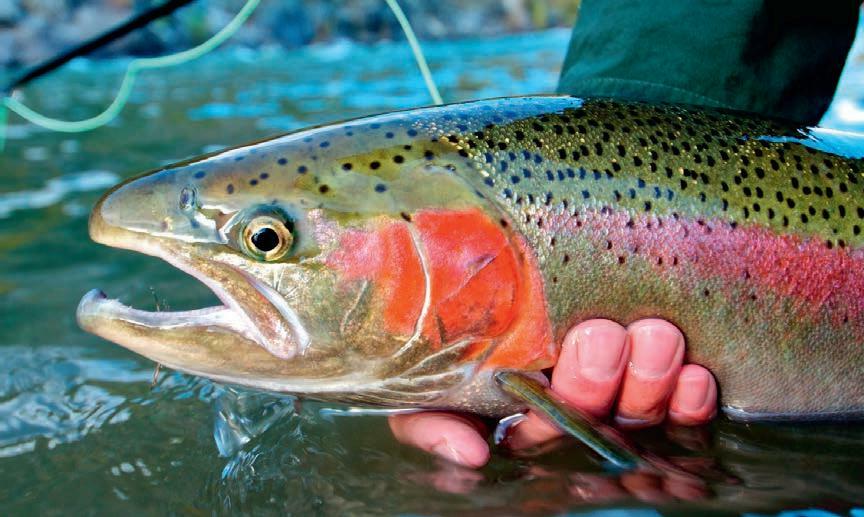
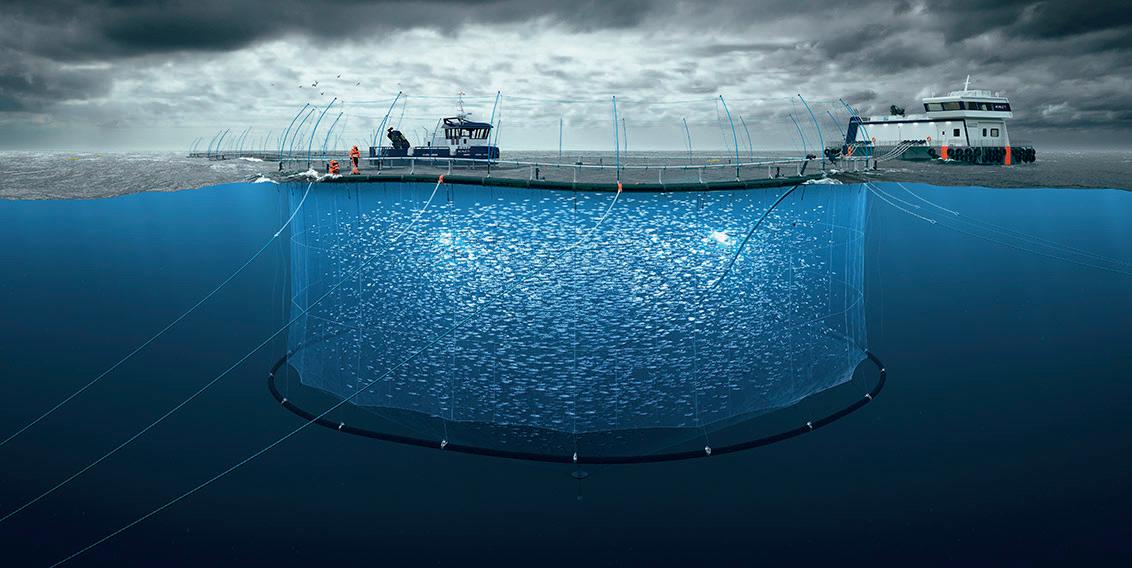
would be to study the decision and associated conditions before coming up with an implementation plan and investment options.
Earlier this year, New Zealand King Salmon reported that it had suffered high levels of mortality during 2021, which it attributed to exceptionally high sea temperatures. The company announced at the time that it would be fallowing three farms in New Zealand’s Pelorus Sound. The move meant the company would see its production fall, but it was hoped that it would reduce mortalities.
NEW Zealand King Salmon has been given the green light to begin farming the first openocean finfish site in New Zealand.
Following a hearing in Blenheim
last year, commissioners have announced their decision to approve the Blue Endeavour application.
“This is a first for New Zealand
and is a significant decision for the aquaculture industry,” said Acting Chief Executive Graeme Tregidga.
He added that the next step
COOKE Aquaculture has sealed the deal for its acquisition of Australia’s Tassal Group, in the completion of a process that was agreed in principle in August this year.
Cooke’s Australian subsidiary, also called Cooke, has acquired all outstanding shares of Tassal for AUD $5.23 (£2.93) per share in cash by way of a scheme of arrangement that values the total enterprise value at approximately AUD $1.7bn (£950m).
This followed a Tassal shareholder vote held on 3 November, which overwhelmingly approved the scheme. Final approval of the scheme was ordered by the Supreme Court of New South Wales on 8 November.
Tassal is Australia’s largest vertically integrated seafood producer, with operations from southern Tasmania to the north of Queensland. The company harvests 40,000 tonnes of Atlantic salmon annually in five marine farming zones, supported by four land-based freshwater hatcheries and four processing facilities.
Tassal also farms 5,500 tonnes of Australian black tiger prawns from two hatcheries, three pond farms and processing facilities.
The company domestically and internationally distributes and processes salmon, prawns and other seafood in fresh, smoked and frozen categories. Tassal’s brands – both for its own produce and the seafood it distributes in Australia – include Tropic Co. The Aussie Prawn, De Costi Seafood, Superior Gold and Tasmanian Smokehouse.
The Tassal purchase is Cooke’s first investment in Australia and the largest ever for the family-owned seafood and nutritional products company since it was founded, in 1985, in New Brunswick, Canada.
Mark Ryan, CEO of Tassal, said: “Producing healthy and nutritious seafood comes with great responsibility. Whether we are farming prawns on land or salmon in the sea, our commitment
New Zealand King Salmon’s General Manager of Aquaculture, Grant Lovell, said open-ocean farming made logical sense for both the environment and for the species in the long term.
is to be a responsible business respecting our people, the environment and communities we operate within as we deliver our vision of sustainably feeding tomorrow, which aligns perfectly with Cooke’s core purpose.
“We’re looking forward to becoming part of the Cooke family of companies and sharing the best of what our industry has to offer.”
Tassal had initially rejected Cooke’s bid, which came after Cooke had lost out in a bidding war for Tasmania-based Huon Aquaculture. Huon was eventually acquired by Brazilian meat group JBS.

YELLOWTAIL producer The Kingfish Company has passed the last test for its project to build a land-based fish farm in Maine, in north-east US.
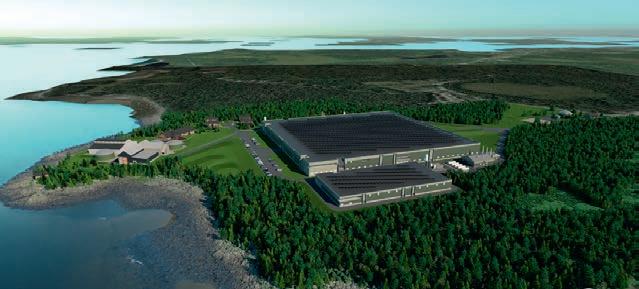
In October, the Jonesport Planning Board gave initial approval to Kingfish’s local building permit. The permit conditions were formally approved and adopted in a final meeting this week.
Kingfish Maine is now fully permitted by local, state and federal regulatory agencies, the company said.
Kingfish Maine is a wholly owned subsidiary of The Kingfish Company, which already operates a recirculating aquaculture systems (RAS) farm producing yellowtail kingfish in the Netherlands.
Once the Jonesport facility is fully operational, the company said, Kingfish Maine will be the largest producer of yellowtail kingfish in the US.
Ohad Maiman, founder of The Kingfish Company, said: “From the introduction of our project to the town three years ago to the final building permit approval this week, we have received overwhelming support from Jonesport residents.
“We are excited for what the future holds in Maine – bringing our sustainable land-based technology to the US in a community where we can partner for growth.”
Last month, Maiman announced he was stepping down from his role as CEO of the company to take up an advisory position. He pledged that would continue to support Kingfish as “an active founder”.
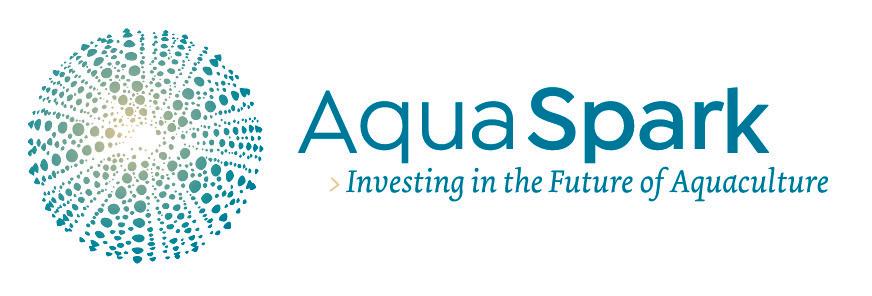
SINGAPORE-based impact investor Silverstrand Capital has announced an additional €15m (£12.9m) investment in Netherlands-based aquaculture investment fund Aqua-Spark, bringing its total investment to €25m (£21.5m).
Silverstrand is a single family office with an impact-investing mandate focused on combating the biodiversity crisis, and is focused on advancing regenerative food systems and natural climate solutions.
Silverstrand’s Principal, Kelvin Chiu, will take a seat on Aqua-Spark’s advisory board while Patti Chu, Silverstrand’s Head of Impact, will join the investment committee.
With more than 300 investors in over 25 countries, Aqua-Spark has grown the amount under its management to over €450m (£386m) since its inception in 2013. The fund’s portfolio comprises companies such as eFishery and Calysta, among other notable leaders in the space.
Aqua-Spark calculates that it has reduced the use of wild resources in feed by the equivalent of 58.6 million fish, upcycled 49.3 million kg of industry waste, and improved the traceability for 40.4 million kg of food.
Amy Novogratz and Mike Velings, co-founders of Aqua-Spark, said in a statement: “Fish supply 17% of the world’s protein, and by 2030 the planet is expected to eat nearly 20% more fish. With our ocean approaching the brink of species collapse, this increase must come from sustainable sources: namely aquaculture. With its initial investment, Silverstrand Capital had already committed to a better future for responsible aquaculture and with this next round [it is] doubling down. We are honoured to work with [Silverstrand] and to keep advancing a commercial aquaculture system that puts our planet and its population’s health first.”
GRIEG Seafood British Columbia (BC) has agreed to decommission a number of salmon farms in a territory run by the shíshálh First Nation Community.
The company said the move was in line with its process of ongoing site restructuring in the region.
The statement affirmed: “Grieg Seafood BC Ltd fully supports the First Nations in whose territories it operates, including recognising and honouring the rights of First Nations to self-determine what aquaculture development they choose for their Nation.”
The shíshálh Nation’s territory, located around Sechelt Inlet near the Sunshine Coast of BC, held eight Grieg seawater licences.

Six of those farms have previously been removed from Grieg’s production planning cycle and have been inactive as they were older, smaller sites that were difficult to farm due to location (relatively shallow locations with warmer water temperatures and higher salinity).
Grieg said: “While some sites have been decommissioned, harvesting in the region has now been completed, and plans are in place to finish decommissioning all sites by early 2023.”
Grieg BC said the work was in line with its ongoing process of site restructuring, where the company seeks to develop sites that are well suited for salmon farming, and phase out older and smaller sites with more challenging biological conditions.
The aim of this process was to improve both the environmental footprint and fish welfare, while also reducing costs.
THE grant will be used to modernise the plant, including funds to buy equipment that will rapidly process fish and improve despatching of Mowi’s premium salmon.
The investment is aimed at:
• Increasing throughput from 65,000 tonnes to at least 95,000 tonnes per year.
• Reducing the number of single-use polystyrene boxes by 40% by 2026. This is a substantial contribution to reducing the carbon footprint of this product.
• Introducing automation to reduce manual labour, contributing to the health, safety and wellbeing of employees on the site.
Mowi has already invested in expanding the processing plant at Blar Mhor over the past two years. The facility has continued to operate while construction has gone on.

The grant for Blar Mhor is part of a £20m funding round for the UK government’s £100m Seafood Fund, which was set up to support
the long-term future and sustainability of the UK fishing and seafood industry. The infrastructure strand of the fund helps to pay for upgrades to ports, processing and aquaculture facilities. Other successful bidders in the latest round include:
• HSH Coldstores, which is investing in a cold storage and logistics facility to further expand seafood processing in Grimsby and generate new jobs in the area;
• Scottish company Denholm Seafoods, which is installing equipment to increase production of mackerel and herring landed at Peterhead;
• Cornish-based Falfish, which will invest in new technology to grade, freeze and pack pelagic fish in support of building two purposebuilt sardine fishing vessels; and Shoreham Port on the south coast of England, which is transforming a historic dry dock into a modern facility for local and visiting fleets.
Fisheries Minister Mark Spencer said: “Fishing communities are an important part of the


UK’s heritage and they make a valuable contribution to our economy, so we are backing them with funds to boost growth and opportunities across the industry.
“This funding will ensure seafood businesses throughout the supply chain are well equipped to keep pace with increasing demand at home and abroad, boosting production and sustainability, and building a resilient sector for the future.”
The second round of the UK Seafood Fund infrastructure scheme, which is worth £30m, opened on 25 November. Businesses will have until March 2025 to deliver their transformational projects, so a wider range of organisations will be able to apply. For more information see www.gov.uk/guidance/uk-seafood-fund
Mowi Scotland’s processing facility at Blar Mhor, Fort William, has been awarded a grant of just over £2m from the UK Seafood Fund.“We are backing them with funds to boost growth and opportunities across the industry ”
ICELAND Seafood International (ISI) has signed a “letter of intent” with a prospective buyer for the sale of its UK business.
ISI announced on 17 November that it was looking to dispose of the business, citing uncertainty over Brexit as the reason for withdrawing from the UK market. The decision placed a question mark over the future of its Grimsby-based value-added seafood business, with around 90 jobs at risk.
ISI’s latest announcement does not identify the purchaser, but says it is “a respected industry player”. While the letter of intent is a legally non-binding document, ISI said its provisions would serve as key terms in the event of the potential transaction.
The parties have agreed to run a swift due diligence process with the aim of reaching a binding agreement before the end of December.
Although ISI has extensive and highly successful salmon operations in Ireland and Spain, the UK business has been struggling for some time. The company said the
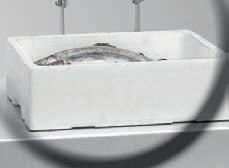
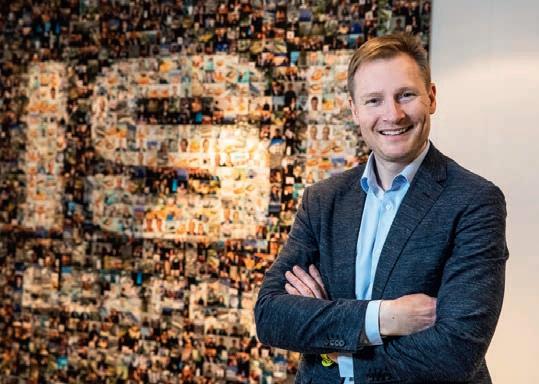
FOOD processing equipment business MARELEC Food Technologies has been acquired by Duravant, a global engineered equipment company based in Illinois, US.
MARELEC, headquartered in Nieuwpoort, Belgium, designs and manufactures high-tech portioning, weighing, grading and control systems for the food industry, including poultry, meat and seafood.
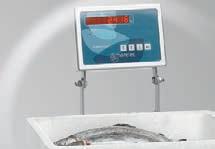
MARELEC has sales and service centres throughout Europe, the US and Asia, along with a network of distributors across six continents and in over 50 countries.
Piet Rommelaere, founder and Executive Chairman of MARELEC, said: “We are excited to enter our next phase of growth with Duravant and to collaborate with its world-class brands. We share a culture of unwavering commitment to customers and by joining forces we are able to accelerate our innovation investments, leverage Duravant’s extensive service infrastructure and deliver more solutions to our customers and partners.”
Mike Kachmer, President and CEO of Duravant, said: “Our new partnership further enhances Duravant’s front-line position in the growing food processing segment. MARELEC’s intense focus on providing outstanding service and continuous innovation has been the foundation of its success, and its legacy of market leadership makes it a perfect addition to the Duravant family.”
subsidiary was eroding profitability and the board no longer felt justified in continuing with it.
The ISI statement on 17 November said: “Iceland Seafood UK invested in operating facilities in Grimsby and merged its operations from Bradford and Grimsby into this location.
“The investment and decision of the merger was completed in March 2020, just before
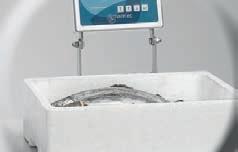
Covid-19 started, and the renovation and installation of the factory was very much affected by Covid and later Brexit along with difficulties in overall operations.
“Iceland Seafood has now decided that it plans to exit this market from a valueadded perspective and has mandated MAR advisors to support the process. Although it has been concluded that the UK operation is not a strategic fit for Iceland Seafood anymore, the excellent facilities and strong management team in Grimsby can be a great addition to other companies in the sector.”
Chief Executive Bjarni Ármannsson said: “Although it has been concluded that the UK operation is not a strategic fit for Iceland Seafood anymore, the excellent facilities and strong management team in Grimsby can be a great addition to other companies in the sector.”
For Q3 of this year, the ISI group generated profit before tax of €2.3m (£2m) in the quarter and €0.5m (£0.43m) in the first nine months.

LABOUR and two other Norwegian left-leaning parties have said they want to reform redundancy rules in the aquaculture industry.
More than 1,000 salmon process workers were handed layoff notices over the past couple of weeks, with the companies making it clear these are the consequences of the Oslo government’s ground rent tax proposal. This was in spite of the fact that the tax will not apply to the processing sector.
However, existing legislation means it is the state, not the industry, which picks up most of the tab for this action.
Tuva Moflag (Labour), a member of the Labour and a Social Affairs committee at the Storting, told the left wing newspaper Klassekampen: “This is something we have to look at.”
Last year, the Norwegian Trade and Industry Workers’ Association (NNN), which organises employees in the fishing industry, passed a national meeting resolution that stated that the farming industry “is a profitable and forward-looking industry that should receive special treatment”.
NNN Association Secretary Yngve Hansen said: “We believe there is reason to look at whether that exception should apply to the salmon industry.
“Activity in the salmon industry is, in contrast to the wild fish industry, more predictable, and the [sector] has had such good earnings that [it has] the backbone to bear redundancies.”
Moflag said to Klassekampen: “When we see how systematic the layoffs in aquaculture have been over so many years, we have to look at whether the degree of unpredictability that is used as a basis for the layoffs is sufficiently justified.”

Christmas is coming. As well as being a celebration of the Christmas story, this time of year is a time for family feasts, with farmed salmon often playing a key role.

Christmas has always been the peak time for selling salmon even though increased availability throughout the year has meant the peak is no longer as great as it used to be. To paraphrase the famous saying: “Salmon is not just for Christmas.”
Christmas has provided food designers a real opportunity to develop new presentations of fresh and smoked salmon that can sparkle on the festive dinner table. At one time, the opportunities seemed endless. However, around the early 2000s, the range of not only Christmas products, but of added-value products in general, began to diminish. Salmon prices had begun to rise, and more costly salmon meant that developing new products became less viable. The price for the consumer simply became too high for many to pay.
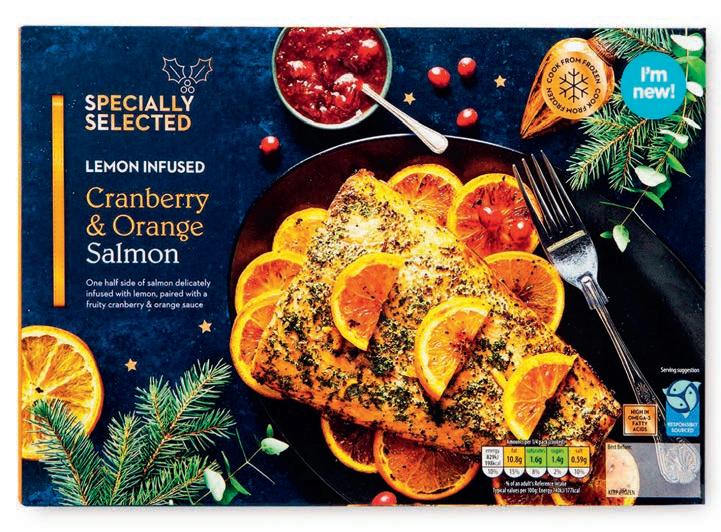
I recently came across a presentation from a leading financial analyst who spoke about the benefits of salmon farming for the
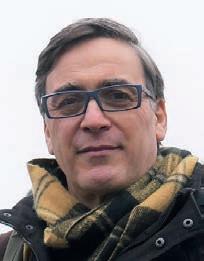

investor. One graph he displayed showed the EBIT (earnings before interest and tax) for farmed salmon. Prior to the early 2000s, the EBIT was relatively stable, but then the EBIT increased rapidly and has stayed high ever since. This makes salmon farming an attractive proposition for investors, but in my opinion a poor deal for consumers.
High prices and high revenues are exactly what the investor wants to see as the share price will also rise. Investors have the potential to make a lot of money, but I suspect that this comes at a cost to the consumer. This begs the question whether salmon farming is principally for the benefit of the investor or the consumer.
Salmon remains the consumer’s fish of choice, dominating fish counters and chillers. Most retailers would struggle to sell many other fish species such is salmon’s domination of the sector.
Yet I can’t help thinking that there is much more to salmon than a standard fillet – and, of course, there is. Salmon is available in other formats including a few recipe dishes, cold- and hot-smoked salmon, flavoured smoked salmon, terrines and canapés.
I can’t help thinking that there is much more to salmon than a standard fillet
”
Salmon’s premium status means it is less likely to feature in “added value” products. By Dr Martin JaffaAbove: Salmon at Christmas Left: Aldi Cranberry & Orange Salmon Opposite: Lidl whole salmon side
Salmon used to be available in a much wider range of added-value recipe dishes, but the higher prices meant that these products were just not commercially viable. We are now left with the remnants of what salmon used to be. New products, especially for Christmas, are few and far between with stores sticking with a few tried-and-tested choices.
This year, the picture is even more complicated. Having had a couple of years when choice was further reduced by the Covid pandemic, soaring inflation has pushed up prices, not just of salmon but most fish and other foods in general.
Consumers are making difficult choices about buying food basics, let alone treats for Christmas. I don’t expect to see much innovation in salmon products this year. Last year, even the premium retailers stuck with the same products and I predict that their ranges will remain similar this year.
A foretaste of how the salmon market at Christmas is changing comes from budget retailer Lidl. It will have fresh salmon on sale in the week before Christmas, but

frozen products are already beginning to appear in store. The frozen salmon offering is a whole side with a choice of garnishes. These are lemon and dill or garlic and herb butter, with sprigs of rosemary. These are simply whole 600g sides that have had value added by topping with some garnishes. The price this year is £9.99, which remains unchanged from last year.
By comparison, Lidl’s main value-added fish dish is made from sea bass. This is a sea bass stuffed with salmon mousse, spinach, cracked black pepper and hollandaise sauce. The 535g product costs £12.99.
This year, Lidl’s main competitor, Aldi, has stuck with a salmon product: Specially Selected Lemon Infused Cranberry and Orange Salmon, costing £8.99 for a 534g pack. Cranberry and orange is a popular choice, with Morrisons likely to offer a fresh option weighing 870g at £13.00.
Aldi will also be offering whole salmon and salmon sides in the run-up to Christmas and these are expected to cost £8.99/kg and £14.29/kg respectively. This
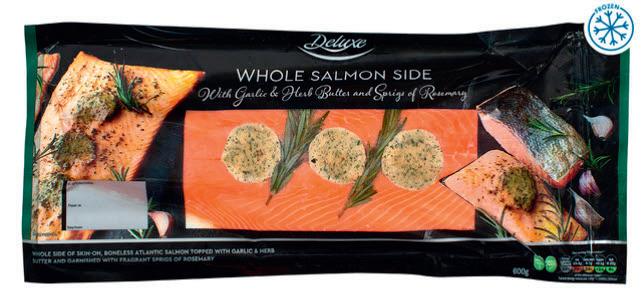
year, Aldi is requesting that shoppers pre-order these fresh choices to guarantee availability.
The salmon retail sector is proving difficult to predict. As I write this in the last full week of November, stores are running promotional offers at the same time as increasing the process of other options. The best deal at the moment comes from Lidl, which is offering a fresh salmon side at £12.99/kg.
Other stores have slightly smaller presentations on offer, including Morrisons at £13.98/kg, Asda at £15.20/kg and Sainsbury’s at £17.49/kg. I guess the message for this Christmas is that you pay your money and take your choice.
It is one of those quirks of politics that a catchy phrase can be attributed to someone without them actually saying it, and before long everyone believes they said it.
Donald Dewar, the Labour architect of Scottish home rule, was supposed to have described devolution as “a process, not an event”.
His SNP rivals used this time and again to claim that even Labour accepted that devolution was not the “settled will” of the Scottish people, but a changeable system that would adapt, develop and grow – ultimately towards independence.
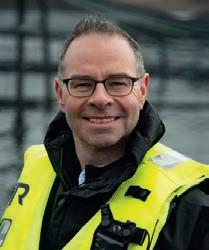
When I was a political journalist I searched and scoured the archives, but could not find any record of Scotland’s first First Minister actually uttering those words. That didn’t matter, though, as far as the political world was concerned. He said it and that was that.
I don’t actually remember any of the main disrupters in the Brexit drama describing the UK’s exit from the EU as a “process, not an event”. In fact, they usually liked to characterise Brexit as a “clean break” – a simple process that would see the UK cast off the dreaded shackles of bureaucracy and red tape that membership of the EU imposed.

Yet, here we are, almost two years from that “clean break” and the Brexit changes keep on coming. Indeed, there is no doubt that
this is not only a process, but also one that shows no sign of slowing down.
If anyone doubts that, just wait until we get into the meat of the Northern Ireland Protocol. This will bring significant changes to the Brexit settlement and cause disruption to the uneasy truce between the UK and EU.
On the ground, for our members, one of the latest and most disruptive of the recent changes has been the decision by the French border authorities to adhere to strict sampling rules.
This means that they can – and often do –take a sample of fish from every 20th box or consignment and test it, just to make sure nothing nasty is coming into the continent on our salmon.
But this doesn’t just involve taking a swab from the skin or slicing a tiny part of the gills for microscopic analysis. What the authorities are doing is taking a chunk, often 500g in size or more, testing it and returning the now mutilated fish to the box, which is then re-sealed and sent on to the customer.

Unsurprisingly, customers tend to get upset when they open a box to find a fish with a chunk taken out. They complain to the producers, we complain to the UK government, which then takes the issue up with the French – and nothing gets done.
This is partly because the French are perfectly within their rights to sample fish in this way, and partly because of politics. This little spat gives the French leverage in trying to sort out some of the many other issues that are bubbling up between the UK and the EU.
Meanwhile, the buyers have to deal with mutilated fish, our members have to deal
Above: Sampling premium seafood can reduce its value
Left: Brexit: could it be a better fit?
The UK’s exit from the EU was just the start of a process that will demand flexibility and understanding on all sides. By Hamish Macdonell
with grumpy customers and UK government officials are caught in between our demands that they sort it and shoulder-shrugging French resistance.
Every example like this – and there are dozens of others across other export sectors – helps undermine the certainty in Westminster that Brexit is hard, fast and unchangeable.
Indeed, I would argue that the everchanging nature of Brexit, on the ground, demonstrates not just that the system is flexible, but that it needs flexibility from both sides if it is to work at all.
What this should mean is that all of us –including hard-line Brexiteers – accept that Brexit is a process not an event. This means there has to be room for adaptability and change on all sides.
What is astonishing is how that realisation has not filtered through into public political debate. Politicians on all sides appear to realise that Brexit has not delivered the benefits that were supposed to flow from it. Everyone knows that Brexit has reduced trade, made exporting more expensive, cut the size of the labour market, and added costs and burdens to businesses that were never there before.
This has helped push the UK towards a recession, drive up inflation and widen the gap between us and our international competitors.
After accepting that, it would be logical to think that the result would be a proper political debate on what should be done to rectify the situation. But no. Labour won’t open the Brexit debate again for fear of alienating those Red Wall voters they need to lure back and the Tories won’t do it in case they rupture the party over Europe once again.
Last month someone in government dared to suggest that perhaps the UK might try to enter into the sort of relationship with the EU that Switzerland enjoys (outside the bloc, but enjoying key aspects of free trade and free movement).
It took all of a few minutes before that suggestion was completely shot down by official sources within the government.
The result of this political omerta is that the export-led Scottish salmon sector, like many others, finds itself in a state of limbo. Our members keep battling through every change, problem and hurdle that Brexit throws at them, officials in government do their best to offer support, yet the politicians do nothing to change the situation.

Brexit will not be reversed. That much is clear to even the most optimistic of Remainers but if it is indeed a process – and all the evidence suggests it is – then perhaps it is time we made it work to our advantage.
There should be a discussion – a proper, grown-up discussion – about getting the best from Brexit. This doesn’t necessarily mean adopting the Swiss model or the Norwegian option; it means finding ways to make it easier for our exporters to export to the EU.
By not even considering a flexible approach, all our politicians are doing is displaying their own insecurities. If they were really confident about Brexit and its advantages, then they would know it is not going to be abandoned, however detailed the discussions are about making it better.
Brexit is indeed a process not an event. Isn’t it time, therefore, that we made that process work for us?
They usually liked to characterise Brexit as a clean break
”
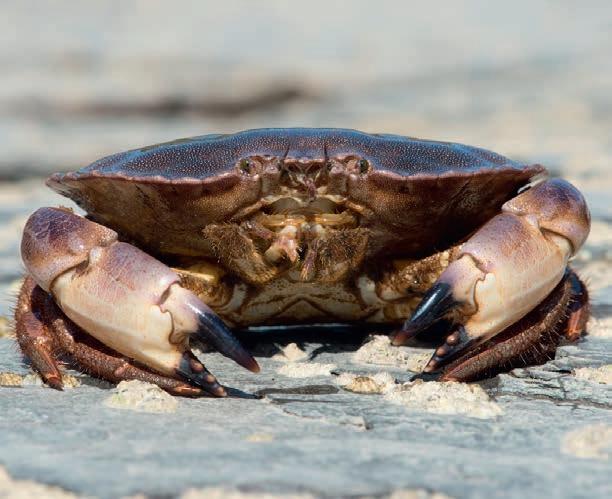


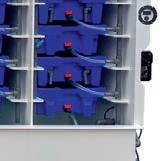




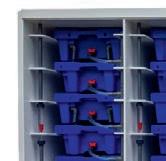
Todd Fish Tech has developed a new, unique, stacking bivalve purification system. The Oyster Pod uses less than half the floor space of purification tanks and between purification cycles the seawater can be drained into the integrated sump at the turn of a valve. This means no more siphoning water, spare tanks or puddles creating a slip hazard. The Oyster Pod has been very popular with customers, with a large number of repeat sales and fantastic feedback. It can be used for oysters, mussels, clams or razors. Sizes range from 1,000 –6,000 oyster capacity.
See www.toddfishtech.com for more information.


Mussel farms can help encourage biodiversity, according to a study by researchers at the University of Plymouth. At a farm in Lyme Bay, Devon run by Offshore Shellfish the mussel clumps growing beneath the ropes increased over 18 months and their presence led to increased numbers of Atlantic horse mackerel, European lobster and edible crab. Both the latter species were not expected to be found in this area, as it is highly degraded from years of bottom towed fishing. The study is part of the Offshore Mussel Farm Ecology project, which is funded by Offshore Shellfish Ltd, however no-one from the company is involved in the project’s design or analysis.
For more than 15 years, Marinove has been raising shellfish from the larvae to T8. Thanks to our experience and know-how, we produce and deliver gigas oyster spats, edulis oyster and manila clam spats all over the world. Our micro-spats are raised in a hatchery to provide them with the best health and safe conditions of growth. Then the spats keep growing in our nurseries, thanks to the production of phytoplankton with the best quality water. Based at the heart of an exceptional natural site and close to our customers, we aim to be innovative and traditional.
www.marinove.fr/en
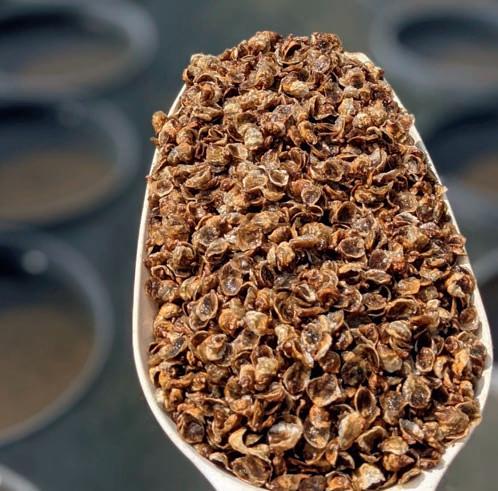
 By Nicki Holmyard
By Nicki Holmyard



The thorny issue of Brexit killing the export trade in live bivalve molluscs is still a major issue for shellfish growers in the UK, despite two years of promises from the government that it will “fix it”.
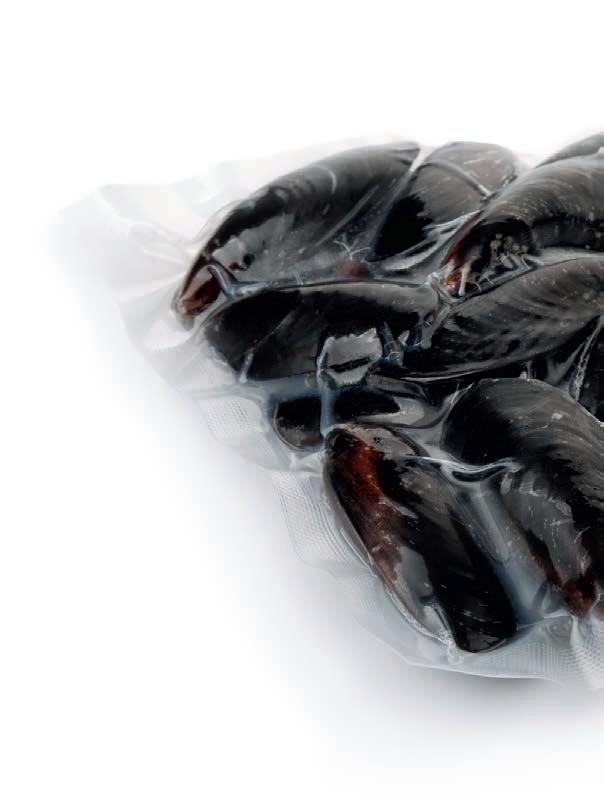
We are, unfortunately, in the mess we are in – with shellfish farmers unable to export live bivalves to the EU from anything other than class A waters – precisely because government assured us that a fix had been put in place before the UK left Europe.
As exporters, we were faced with a rude awakening on 1 January 2021, when we discovered that the fix was unworkable, just as we had feared it would be.

The solution according to Westminster, was and is simple: just depurate bivalves before exporting and everyone will be happy. There are already some operators offering depuration – Fife-based Todd Fish Technology with its Oyster Pod stacking purification system is one example – but prior to Brexit demand for this was limited.
The UK government even targeted depuration facilities for special funding with a dedicated funding round under the Fisheries and Seafood Scheme, run by the Marine Management Organisation.

In total, 21 applications were received, of which 13 were approved with a grant amount of £557,071.61. The total project value was £747,835.






A few smaller-scale operators took advantage of this to upgrade their facilities, but not operators targeting bulk exports. One major company that applied for funding found that it could not adhere to the development timeline required by the scheme, so had to withdraw.
Depuration facilities are used to purify bivalve shellfish from class B harvesting areas in tanks of seawater to purge any microbiological contamination they may have bio-accumulated while in the environment. However, purifying cockles, mussels and oysters is only suitable for product that will immediately be placed on the market in consumer packaging.
Below: Mussels in net Opposite from top: Vacuumpacked whole-shell mussels; Water quality is a problem not of the industry’s making; Mussel farm
For bulk exporters of mussels, which trade with processors in the EU and pack in 1-tonne bags, depuration in the UK is not an option. When mussels are harvested, they are subjected to the stress of mechanical sorting and grading, which removes many of the byssus threads they produce to attach themselves to the growing ropes and to each other. Once in the tanks, the mussels immediately start to produce more byssus, which means they need to be graded again before placing back into bags for transportation to the EU.
The mussels have now undergone two sets of grading and been subjected to two different temperature environments. Transportation adds a further temperature stress.
On arrival at an EU processor, the mussels are always placed into bulk depuration tanks, as part of the due diligence process, to provide customers with complete reassurance that the product is food safe. Customers such as major supermarket chains, top-class restaurants and major wholesalers have exacting requirements.
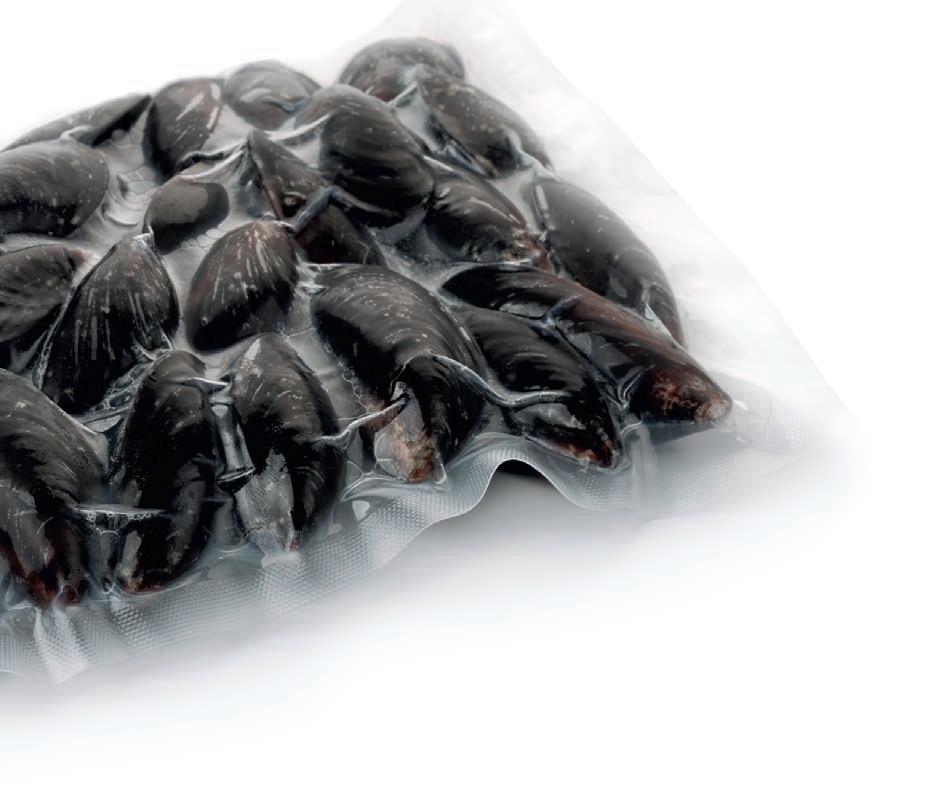
Before packing, the mussels undergo a final grading and chilling process and by this point they are unlikely to be in prime condition. In short, EU processors want mussels straight from the sea and not subjected to additional processes in the UK.
The issue arises purely and simply because the UK government did not specifically include live bivalves from class B waters in the Brexit deal. Instead, the negotiators asked the wrong question. It is not a matter of food safety, because class B mussels are always depurated before sale; the problem arises simply from the fact of no longer being part of the EU.
Various discussions and projects are ongoing, including one that aims to bring the UK’s water classification regime into line with other countries in Europe. The UK government is also raising with the EU the restriction on exports of live bivalve molluscs from class B waters, through the Trade and Cooperation Agreement (TCA) Specialised Committee on Sanitary and Phytosanitary Measures, but progress is painfully slow.
In the meantime, the English and Welsh mussel industry is heading into terminal decline. This is in spite of mussel production being lauded as a saviour in the English Aquaculture Strategy and aligning well with many of the government’s policy objectives for future foods and the utilisation of nature-based solutions.
None of these problems have been caused by the shellfish industry, yet we are severely impacted by poor water quality and government policy that disables rather than enables. It is hard to
match this with DEFRA’s overarching policy position on aquaculture, which is to support sustainable, industry-led growth. This is particularly frustrating. What is constraining the sector is not in the control of industry, so industry cannot lead on growth.
UK aquaculture production figures compiled annually by Cefas show that mussel production shrank by around 60%, from almost 22,500 tonnes in 2013 to just over 9,000 tonnes in 2020 – Scotland by 17%, Wales by 99.5%, England by 35% and Northern Ireland by 80%.
Pacific oyster production was 1,800 tonnes in 2013, and peaked in 2019 at just under 2,700 tonnes. The combined value of mussels and oysters dropped from £41.4m in 2013 to £14.5m in 2020.

How do we fix all the issues? We need action not rhetoric, a reasoned and proportionate permissive structure that allows for growth, and politicians and regulators who deliver, rather than promise.

The All Party Parliamentary Group (APPG) on Shellfish Aquaculture, set up last year with the Shellfish Association of Great Britain (SAGB) as secretariat, is working to help MPs understand the enormous potential in the sector, as well as the constraints that are preventing industry from growing, but there is much work to be done and the clock is ticking.
We also need government to apply the principle of “the polluter pays” and set up a scheme that ensures shellfish farmers are compensated for loss of business when water companies discharge untreated sewage into the sea. Surely such a scheme would incentivise the water industry to reduce sewage spills to the benefit of the whole coastline.


The industry fears that if major changes are not made in the very near future, any hope of a burgeoning aquaculture industry delivering jobs in coastal communities in England and Wales will be lost.



Can the UK’s shellfish industry grow by keeping mussels in the UK and processing them as a partial fish replacement into a range of consumer-friendly products such as fish cakes and fish fingers? This is a major project being worked on by Nomad Foods and Dr David Willer leading a team at the University of Cambridge.
Willer acknowledges that bivalve farmers produce one of the most sustainable meat products on the planet and that they are also good to eat from a nutritional perspective.

The theory sounds good, but in practice it may be difficult to make the economics stack up.
Producing rope-grown mussels at scale requires space, and that space cannot be found close to the shore. Farming offshore is expensive: it needs big boats, substantial anchoring and rope systems, and a lot of investment. That’s not to say it should not be tried, but it will need out-of-the-box thinking and some brave investors to start the ball rolling, but where there is a will, and a food security need, anything is possible.

None of these problems have been caused by the shellfish industry
 By Robert Outram
By Robert Outram
The North Sea coast of England is famous for its lobsters and crabs, producing some of the best in Europe. However, a healthy population of crustaceans is not something to be taken for granted.
Last year, there was great concern over a mass mortality event that saw thousands of dead crabs and lobsters washed up on beaches along the Yorkshire coast. While many locals blamed chemical pollution or toxic metals dislodged by dredging operations, a combined investigation in November by UK government agencies concluded there was a “possible linkage” with algal blooms in the area.
The event underlined the importance of ensuring that crustacean numbers are replenished, not only for the sake of biodiversity, but also for local crab and lobster fisheries.
That’s where Whitby Lobster Hatchery comes in. The hatchery, staffed by a mix of employed staff and volunteers, is running a project to grow 100,000 juvenile European clawed lobsters for release annually into the wild.
Co-founded by a group including manager Joe Redfern and local businessman Terry Pearson, its doors opened to the public for the first time in October and it has started its hatching programme using eggs from locally caught females.
Lobsters produce up to 20,000 eggs per cycle, which are released into the water as larvae, but in the wild, only 1% survive. Growing the eggs in a hatchery eliminates many of the early risks until they reach the juvenile stage. The hatchery estimates this intervention
This page from top: Giles Cadman (right) with Joe Redfern at the hatchery; The first stage-4 lobster Opposite from top: How the final development of the Whitby Lobster Hatchery will look; European lobster
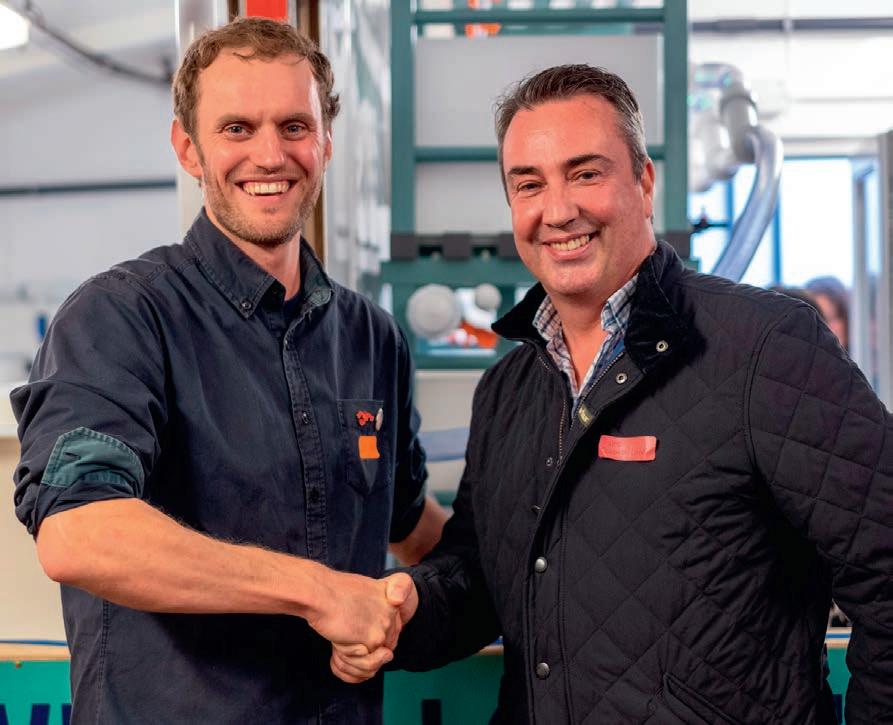
alone will dramatically increase the larval survival rate to 30–50%.
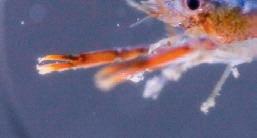
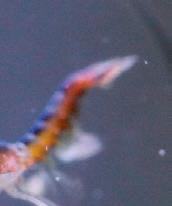


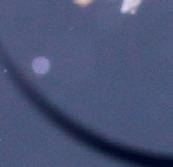


















For a while, however, the hatchery’s chances of survival were not much better than the lobsters’. Fortunately, a donation from Giles Cadman, an ecopreneur with a passion for restorative aquaculture and several businesses within the sector (including Ocean on Land Technology), helped to make the hatchery a reality.
He told Fish Farmer: “I went to see Joe [Redfern] and Terry [Pearson] and I could see they had a connection to the water and a passion for the project. I wanted it to work for them. The energy in Whitby was so strong – I knew that once they built the hatchery, it would be successful.”
Three years ago, Whitby Lobster Hatchery’s founders approached Ocean on Land Technology to see whether its technology could be applied to European clawed lobsters (Homarus Gammarus). It was a good fit. The Ocean on Land Technology Aquahive system is designed for growing juvenile crustaceans in a beehive-like system of individual compartments, which is ideal for European clawed lobsters, as they are notoriously aggressive and have a reputation for cannibalism in confined spaces.
Ocean on Land Technology provided an estimate and some outline design ideas, but in the absence of outside funding for the project, that’s where it ended. Or so it was until Cadman visited the team in Whitby



in 2021, where he decided the hatchery was well worth supporting. So with equipment and expertise from Ocean on Land Technology, the hatchery is finally up and running.
Ocean on Land Technology developed the “Hatchery in a Box” system for growing a variety of marine species, including native oysters, soft shell clams, Dungeness crabs, slipper lobsters and Caribbean spiny lobsters, which the company farms in the British Virgin Islands.

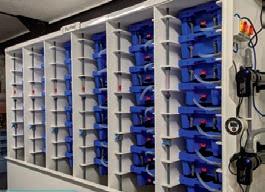




The hatchery has a series of incubators. It starts with captured wild hen (female) lobsters, which release their eggs. The hatchlings are placed in incubators and then the compartmentalised Aquahive when they get bigger.

When the lobsters reach “stage 6” and are large enough to find and survive in a safe habitat, they are released by divers onto the seabed.

Cadman says: “Whitby’s target is to produce 100,000 annually over the next couple of years, but it could eventually, easily be 250,000 or more.”

As well as attracting paying visitors and school visits, Whitby is a popular tourist destination, and the hatchery is actively seeking to attract donations and sponsorship. One idea is to target seafoodloving diners with a campaign encouraging them to “buy one, set one free”. It’s a model already successfully adopted by the National Lobster Hatchery in Padstow, Devon.
Redfern commented: “We are extremely grateful for the support and assistance received from Giles. While we have full belief in our project and its long-term success and impact, without the assistance we received from Giles, we would have seriously struggled to get to the stage we are at today. Opening our lobster hatchery in Whitby Fish Market will have wide reaching positive impact for our coastline and fishery, boosting the sustainability and ensuring the marine environment is protected for future generations.”
Meanwhile, Ocean on Land Technology is building a hatchery on the west coast of Scotland to produce native oysters for restoration projects and for farmers.
Cadman says: “We should be producing 150 million spat within 16 to 18 months.”
The company is also building a new farm in Puerto Rico to raise spiny lobsters and expanding its original farm in the British Virgin Islands.

Could we see commercial lobster farming in the UK?









Cadman believes: “It will happen at some


Cadman believes: “It will happen at some point. You would need to have a location with access to cheap or zero-cost energy –for example, a wind farm or a heat exchange system.”

It certainly can’t be ruled out. After all, before Cadman’s Caribbean venture started growing lobsters, he was told that couldn’t be done either.
For more information about the Whitby Lobster hatchery, see www. whitbylobsterhatchery.co.uk


I could see they had a connection to the water and a passion for the project
”

Researchers have identified how mussel larvae move, giving mussel and other shellfish farmers important insights into where and how to grow them.
The University of Stirling’s Institute of Aquaculture used genetic testing of mussels at sample sites along Scotland’s west coast combined with mathematical modelling to understand where mussels grow well – and it’s all about the current.
PhD researcher Ana Corrochano-Fraile says: “Mussel growing has been a bit of a black box. The larvae float in the water, we put ropes at sea and larvae appear there. If the stock goes down, we don’t know why. If the quality goes down, we don’t know why.
“Our model shows us how the larvae move in the currents, from south to north. We found that in 30 days a cloud of larvae can move from the Scottish border near Stranraer up to Islay, for example. They then attach to substrate – anything solid in the water, which could be ropes – and grow for one and a half years until they start reproducing. The next generation of larvae is carried on the current from Islay to the Outer Hebrides in 30 days
– that’s a lot further, because the current is faster there.

“For example, we found that 90% of the mussels in Loch Roag on Lewis have come from Barra. Knowing where mussels come from and where they go tells us a lot about the best and worst locations for farms.”
The researchers worked with the Scottish Association of Marine Science, as well as mussel farms at different west coast locations, through the Fishmongers’ Company, Scottish Sea Farms Ltd and the



Association of Scottish Shellfish Growers. They discovered, for example, that larvae from Loch Eil farm leave the loch, but no new larvae come in, so although Loch Eil has a self-sustaining population, it also contributes to populations at other locations, such as Loch Linnhe.
Ms Corrochano-Fraile’s supervisor, computational biologist Dr Michaël Bekaert, says: “We were surprised by how fast the larvae moved in a short amount of time, and also how fragile and vulnerable they are.

“The research shows that if we were to block the current in some way between Scotland and Northern Ireland, or slow it down, we would lose larvae. Similarly, if we were to pollute the sea there, or somewhere like Loch Linnhe, where many fresh larvae are washing in, that would have
a huge impact. To breed quality mussels, like with anything else, you need maximum diversity in the genes, so you don’t want to lose fresh genes by messing with the current or polluting.
“We will need to understand the effects of climate change better, but if the current were to move much faster, for example, the larvae might be swept past the Outer Hebrides without stopping at all!”
As many as 40% of the UK’s mussels are produced in Scotland, with half of these growing along the west coast and the rest around Shetland. Mussel farming has a low impact on the environment, as they require no food, grow on ropes and, by nature of being bivalves, they even clean the water around them.
“This does mean they are vulnerable to pollution, though,” explains Dr Bekaert. “They will absorb heavy metals, for example. If we give them rubbish to eat, they keep it. But if these fastflowing waters are clean, the mussels are clean.
“It is possible to produce a lot of mussels at very low cost – environmental and economic. The most expensive part is harvesting and processing them.”
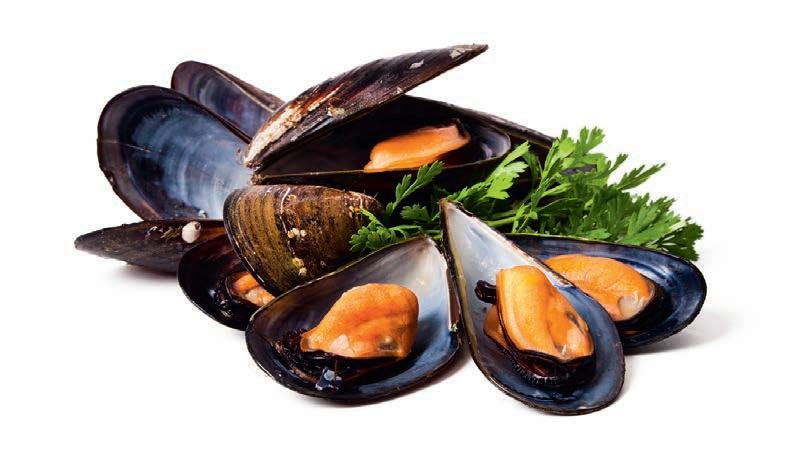
Increasing mussel production is part of industry organisation Scotland Food and Drink’s ambition to double Scotland’s food production by 2030.
Dr Bekaert says: “This level of detailed oceanographic information is also relevant to other valuable bivalves such as scallops and oysters and, being at a scale of metres rather than kilometres, is even useful for the salmon industry.”
The paper, “Predictive biophysical models of bivalve larvae dispersal in Scotland”, is published in the journal Frontiers in Marine Science
SIZE , quality and destination are key factors for the price of oysters produced in the European Union.

Oysters in the EU (November 2022), a report from the European Commission’s European Market Observatory for Fisheries and Aquaculture Products (EUMOFA) focuses on three major producers: France, Ireland and the sNetherlands.


With a total production of almost 98,000 tonnes in 2020, the EU-27 was the world’s fifth largest oyster producer. EU production has been relatively stable between 2011 and 2020 (+1%) but fell by 7% between 2019 and 2020.
In 2020, almost 83% of EU oyster production took place in France (circa 81,000 tonnes). Ireland followed at a distance, with a production amounting to 9.475 tonnes (10% of the EU production). Other main producers include Portugal (4%) and the Netherlands (2%).

The EU’s exports to third countries are higher than imports. In 2021, the EU trade surplus amounted to €54.4m. France is the main exporter and main destinations are the Asian markets, mainly China and Hong Kong.
Europeans shuck and slurp their way through 0.20kg of oysters per capita.
EUMOFA’s price structure analysis shows:
• ex-farm prices range from €1.80/kg to €5.50/ kg, depending on size and quality;

• the retail price (ex VAT) of oysters varies from €6.58/kg in France to €19.32/kg in the Netherlands; and
• the prices of Irish oysters in the export market show significant differences based on the destination: Irish packed oysters are soldat €9.50/kg in the French market (ex-packer stage) and at €11.50 EUR/kg on the Chinese market (exwholesaler stage).
(Source: EUMOFA. Note: €1 = £0.86 at time of writing)



The salmon is an important icon on Canada’s Atlantic and Pacific coasts, connecting peoples on opposite sides of the world’s second largest country.



Canada stretches 3,500 miles from Newfoundland and Labrador in the east to British Columbia in the west. But while salmon unites these peoples, it’s also at the heart of an issue that divides them.
“People care about and benefit from salmon for many different reasons,” explains a spokesperson for the government of Canada. “It is fished for food, social and ceremonial purposes by First Nations and many Indigenous communities. Moreover, salmon angling is a valued recreational activity by both local residents and non-residents. Salmon are considered an indicator of environmental quality, an animal of respect and an attraction for eco-tourism, and have an importance beyond economic returns.”
Canada’s Indigenous communities comprise three distinct peoples – the First Nations, Métis and Inuit – each with unique histories, languages, cultural practices and spiritual beliefs. The 2021 census counted over 1.8 million Indigenous people, making up 5% of the country’s population. Most, just over a million, belong to the First Nations. Of the 630 First Nation governments across Canada, a third live in the Pacific Northwest province of British Columbia, where we focus our story this month.

The five species of Pacific salmon found in British Columbia and the Yukon are: Oncorhynchus nerka (sockeye), O. kisutch (coho), O. tshawytscha (chinook), O. gorbuscha (pink) and O. keta (chum). Pacific salmon are an intrinsic part of many First Nation cultures.
“Native Nations of the Pacific Northwest define themselves as ‘Salmon People’,” according to the Smithsonian National Museum of the American Indian, which goes on: “There are many geographic regions that distinguish Native Nations or language groups from one another in the Pacific Northwest. Despite physical








Above: Swimming salmon, depicted in north-west coast na�ve style
Below: Wild chinook salmon

Opposite from top: Fish farm, the Deserters Islands, BC; Chief Darren Blaney, Homalco First Na�on
distance and cultural diversity, salmon is a unifying factor.”
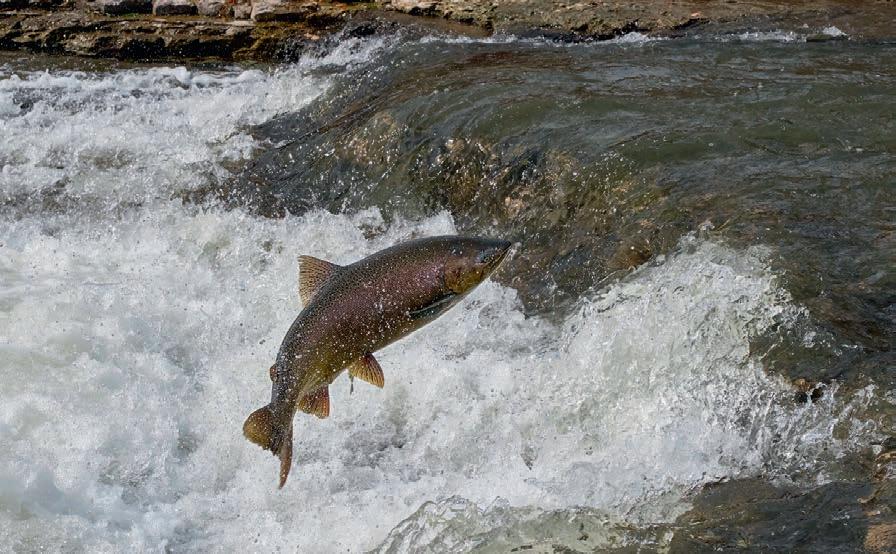






One such region, surrounding the cities of Vancouver and Seattle, comprises the Georgia Basin in British Columbia, and the estuarine Puget Sound in Washington State. At its heart are the Straits of Georgia and Juan de Fuca, sometimes called the Salish Sea, in honour of the native peoples who have lived there for thousands of years.
The Coast Salish is a group of ethnically and linguistically related Indigenous peoples who, long before colonisation, depended on salmon as a source of staple food, wealth and trade. Traditional fishing is deeply tied to Coast Salish culture. Salmon were seen as gift-bearing relatives and treated with great respect. They are a cultural symbol in totem poles, canoes and oars, representing life, abundance, prosperity, nourishment, dependability and the renewing cycle of life: through their death salmon sustain coastal forests, and they return every year, nourishing humans, bears and other animals over and over again.
Another region is the vast Columbia River Basin, reaching from the Rocky Mountains in British Columbia, down across the US border and into the states of Washington, Oregon, Idaho, Montana, Wyoming and Nevada. The First Nations of the Columbia River Basin “could rightly be called Wy-Kan-Ush-Pum, or ‘Salmon People’, for how completely these sacred fish shaped our cultures, diets, societies and religions, and continue to do so today,” writes the Columbia River Inter-Tribal Fish Commission
To call salmon a staple of the tribal diet would be an understatement
The “Salmon People” of Canada’s Pacific coast are divided over the future of fish farming.
“To call salmon a staple of the tribal diet would be an understatement. The First Salmon Feast is part of the traditional tribal religion of the Columbia Basin. The feasts move upriver with the fish. Known by various names including Washut, Longhouse and Seven Drums, this religion continues to guide tribal people and connect them with the Creator and the gifts He has given them. It also connects followers to the land and to the culture practised by their ancestors.
“Fishing for salmon is just as integral an aspect of tribal culture as consuming it. Salmon are worth our time, energy and sometimes even risking our lives. That is why it was troubling when the number of salmon that returned up the Columbia River each year grew smaller and smaller. By the 1960s, the numbers had dipped so low that tribal concern turned into alarm that we might lose our sacred fish. The tribes did not have the political voice or power to fight the decline. Fortunately, those days are past.”
“Pacific salmon stocks are declining to historic lows,” agreed Canada’s Department of Fisheries and Oceans (DFO) in its 2019 State of Pacific Salmon report. “Recent marine heatwaves, changes to marine food webs, warmer freshwater conditions, more extreme rain and drought, and various human activities are all contributing to current trends in salmon numbers.”




Tensions over plummeting wild salmon populations have simmered for decades. In British Columbia (BC), 2020 saw a recorded low for sockeye salmon returning to the Fraser River at an estimated 283,000 fish, down from a high of 28.2 million in 2010. First Nations and other campaigners have argued open-net fish farms have contributed to the collapse because sea lice and other pathogens transfer from them to migrating juvenile wild salmon.
In September 2020, 101 BC First Nations and their supporters called for the removal of salmon farms in the Discovery Islands, a major salmon migration corridor in the north of the Salish Sea,
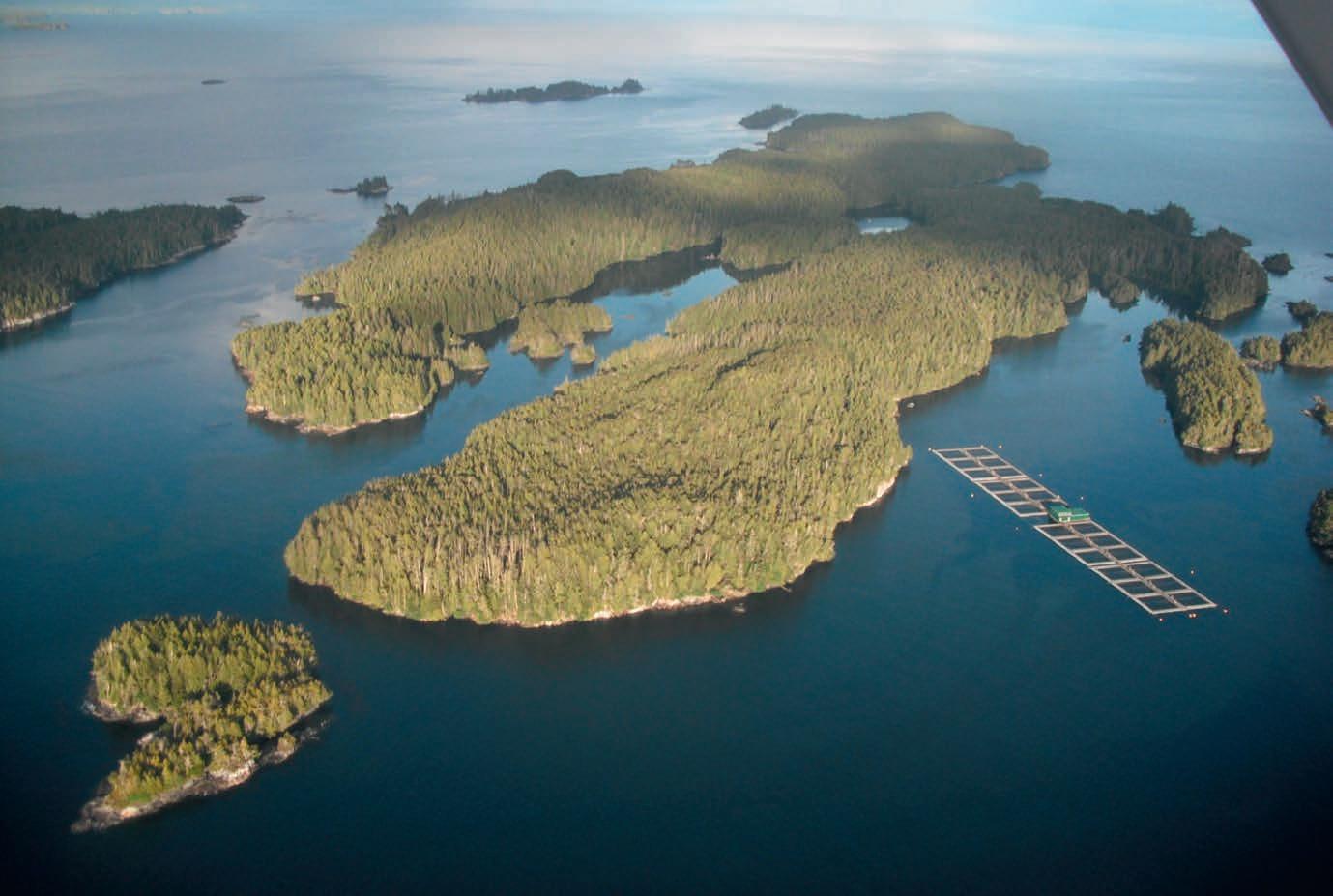
asking that the farmed salmon be moved to land-based closed-containment systems.
Prime Minister Justin Trudeau had directed the former Fisheries Minister, Bernadette Jordan, to transition away from open-net fish farming by 2025. As reported in this magazine, in a shock decision in December 2020, Ms Jordan announced a shutdown of fish farming in the Discovery Islands. All 19 farms had to be free of fish by 30 June 2022, when their renewed 18-month licences expired, and no new fish could be brought in. She expected 80% of the fish to go by April 2021 in time for the next Fraser River out-migration period.
The decision was difficult, she added, but reflected consultations with seven First Nations: the Homalco, Klahoose, K’ómoks, Kwiakah, Tla’amin, We Wai Kai and Wei Wai Kum.
Jordan said: “We heard overwhelmingly from First Nations in the area that they do not want these fish farms there. They feel that they should have a say in their territorial waters and I absolutely agree with them.”

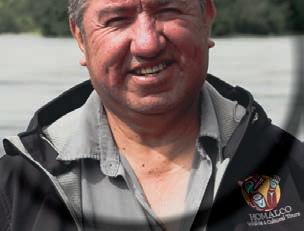
Chief Darren Blaney of the Homalco First Nation told broadcaster CBC: “[Wild, local] stocks have been declining over the years. Salmon are pretty resilient. I think if we give them an opportunity, they will start to rebuild.”
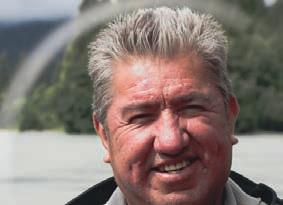
The impact would be hard, argued the BC Salmon Farmers Association trade body. Salmon farming in the province, it said, is a CAN $1.6bn (£1.1bn) annual industry that employs 6,500 British Columbians, has participation agreements with 20 First Nations, and generates $89m (£55m) each year in tax revenue.
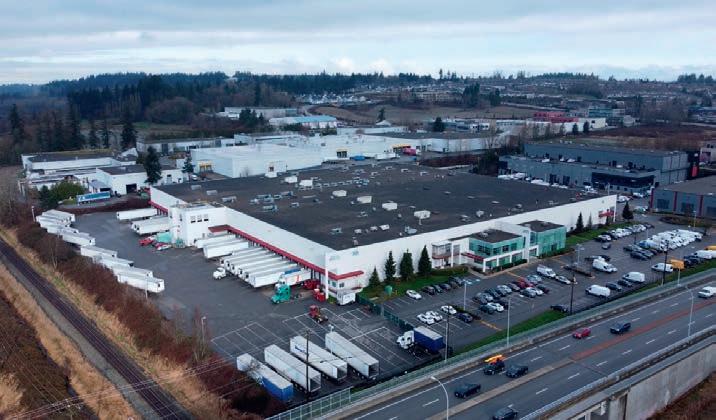

The majority of the 19 Discovery Islands salmon farms are owned by three companies: Mowi Canada West, Cermaq Canada Ltd. and Grieg Seafoods Ltd. BC salmon farmers said at the time there was no business case for entirely land-based salmon farming.

Plans surged on. “Pacific salmon need our help, with many runs on the verge of collapse,” the DFO said in June 2021, as it launched “the largest, most transformative investment Canada has ever made to save wild salmon”, the $647.1m (£400m) Pacific Salmon Strategy Initiative (PSSI). “The decades-long declines are due to a complex combination of climate change, habitat degradation and harvesting impacts, and bold action is needed now to stabilise and rebuild the stocks before it is too late.”

The DFO quickly announced long-term commercial closures and a Licence Retirement Program. It said: “These plans are outlined in the 2021–2022 Salmon Integrated Fisheries Management Plan and will result in closures to nearly 60% of commercial salmon fisheries for the 2021 season.”


“We are pulling the emergency brake to give these salmon populations the best chance at survival,” Ms Jordan added. “The decisions were not easy, as they impact people, communities and livelihoods. But with fewer and fewer returning every year –disappearing before our eyes – we have to act now. Together, we will turn the corner.”
Consequences followed quickly. In January this year, BC’s largest salmon producer, Mowi, announced it would close its 23,000sq ft fish-processing plant in Surrey, which employed around 80 people. Surrey lies outside the Discovery Islands, but Mowi said losing 30% of its production in BC meant the plant was no longer viable.
Rupinder Dadwan, human resources manager at Mowi Canada West, said: “This is what happens when politics overrides science-based evidence. Our federal government doesn’t have to do this – it can choose fairness and engagement over
divisiveness and exclusion.”

Suppliers to the fish farming sector formed a new campaigning organisation, the Canadian Aquaculture Suppliers Association (CASA), to lobby against the industry shutdown. “Those who supply our nation’s aquaculture sector directly employ thousands of Canadians, including in communities where jobs are scarce and economic opportunity is limited,” said CASA President Ben James.
“Aquaculture provides Indigenous Canadians with economic opportunities and well-paying jobs, drastically reducing unemployment in many small, coastal communities,” added Richard Harry, Executive Director of the Aboriginal Aquaculture Association, former Chief of the Homalco First Nation and owner of a company that provides net-cleaning services to a salmon farm.
He warned: “Without aquaculture, and specifically farmed salmon, I know many people who will have difficulties in finding work.”
An organisation of First Nations, the Coalition of First Nations for Finfish Stewardship (FNFFS), demanded they be allowed to farm fish on their own terms –and shouldn’t be stopped from doing so by the federal government. They called on the government to re-issue salmon farming licences in their territories.

“Many Canadians have been led to believe that all BC First Nations are actively opposed to salmon farming, but this is not the reality,” the FNFFS said. “Seventeen First Nations have a variety of relationship agreements with finfish aquaculture companies, with the longest going back over two decades. Altogether, these Nations’ territories make up most of the south coast of British Columbia.
“In total, BC’s farmed salmon sector is estimated to generate $29.2m [£18m] in economic activity within First Nations, $16.7m [£10.3m] in GDP and 247 jobs earning $12.8m [£7.9m] in wages per year. Further benefits are generated outside of
Pacific salmon stocks are declining to historic lows
First Nations communities, amounting to $54.2m [£33.5m] in economic activity, $31m [£19m] in GDP and $23.8m [14.7m] in wages for 460 workers. Some of these benefits accrue to First Nations members living outside their communities.
“Every First Nation is taking their own approach to these relationships. Some are in favour of industry and others have decided not to have salmon farms in their territories. While it isn’t clear what the federal government’s definition of ‘transitioning’ the sector is, this coalition is firm that it should not mean reducing or taking away salmon farming in their territories.”
Then, in a last-minute reprieve, the DFO gave the go-ahead for open-net pen salmon aquaculture to continue for the next two years at 79 farms off the coast of British Columbia. The decision, which came just days before the existing licences expired on 30 June, only represented a stay of execution – the DFO remained committed to its pledge “to transition from open-net pen salmon aquaculture in British Columbia’s coastal waters in a manner that protects wild salmon, the environment and the economy”.
A draft framework would be shared, the FDO said, and a consultation would run until early 2023, with publication of the final transition plan expected next spring. The new Fisheries Minister, Joyce Murray, who replaced Bernadette Jordan after the latter failed to win re-election in 2021, said: “Ottawa’s transition plan for the aquaculture industry will include new technology, while reducing or eliminating interactions with wild Pacific salmon.”

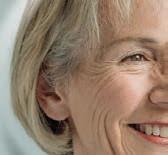


A separate consultation process is under
Opposite from top: The Maiden of Decep�on Pass, a Na�ve American Statue from a legend of the Samish Tribe, Washington State, US; Mowi’s Surrey processing plant, which the company closed following the Discovery Islands shutdown order This page from top: Members of the Gwa’Sala-Nakwaxda’xw
Na�ons hos�ng Canada’s DFO Minister Joyce Murray on a fish farm in their tradi�onal territory on 14 October 2022 off Vancouver Island; Joyce Murray
way with First Nations and licence holders for 19 fish farms around the Discovery Islands, where licences are not being renewed.

Ms Murray said: “As the world’s appetite for high-quality fish and seafood continues to grow, we need to find better and innovative ways to farm fish and protect wild Pacific salmon stocks. A well-developed transition plan is the first step to growing a viable and sustainable industry in British Columbia.”
Welcoming the reprieve, Grieg Seafood CEO Andreas Kvame said: “Our industry is in continuous development with new technologies and innovations, and we are committed to improvements that strengthen biological control and reduce interactions with wild salmon.”
CASA reacted: “While the transition period will not be without obstacles, including issues of financial compensation, the association is buoyed by the government’s commitment towards the industry, including salmon farming. There’s a great deal at stake here.”
Following a meeting with the minister in October, the BC Salmon Farmers Association Interim Executive Director Ruth Salmon said: “Salmon farming is continuously evolving, improving and innovating, which can come as a surprise to those outside of the farming community. It was heartening to hear that the minister is seeking to work with us to support the development of the transition framework.
“In order to successfully drive further innovation and technology adoption, there needs to be flexibility to allow for various pathways. The ecosystems in which we operate, as well as the priorities of the Nations in whose territories we operate, are diverse. We need to have a full suite of tools and options available to ensure we are meeting the expectations of the Nations, protecting wild salmon populations, and providing healthy and sustainable meals.”
So, what should happen next?
Ben James, CASA President, says: “The government must offer financial compensation and proper retraining to those who will lose their livelihoods, including the operators of small businesses who supply the industry, due to its decision to not reissue salmon farm licences.
“It is our strong recommendation the federal government places science and common sense ahead of politics. It needs to listen to the industry and its own scientists and researchers over its
unrealistic expectation for land-based farming. Our industry is innovative and is leading the way in protecting BC’s wild salmon stocks. This include advancements is semi-closed pen technology, disease detection and treatment.









“Unfortunately, wild salmon stocks in BC are still declining due to continued commercial and recreational overfishing, human encroachment into salmon habitat and climate change. The Liberal government in Ottawa has made salmon farming a politically expedient scapegoat, instead of addressing the real issues behind our declining wild salmon stocks.”
The BC Salmon Farmers Association says: “While we are encouraged to work with all levels of government to clarify what the elements of transition will be, transition is not new to our sector. We have been transitioning for decades through the development of cutting-edge technologies and innovations to continuously reduce our impact on the environment. We are looking for a flexible science-based pathway that supports regional characteristics and First Nations priorities.
“Current science shows that salmon farming in British Columbia doesn’t adversely impact wild salmon, meeting the federal government’s definition of ‘minimal risk’. Nevertheless, we are committed in this transition process to doing even more to minimise risk and protect wild stocks.”
Dallas Smith, spokesperson for the Coalition of First Nations for Finfish Stewardship, tells us: “For the government of Canada to truly recognise the rights, title and self-determination of Indigenous peoples, the transition of finfish farming in British Columbia must be led by the First Nations in whose territories the farms are located.
“First Nations will determine if, when and how salmon farms are operated in their territories. Some Nations are choosing to remove farms from their territories, as is their right. Many others wish to continue to partner with the sector to continue to benefit from the many economic, social and capacity-building opportunities.









“Above all else, wild Pacific salmon are the priority for coastal First Nations, and the transition of salmon farming in our territories must be done with the conservation and protection of wild salmon top of mind. This includes technology that minimises or eliminates risk, full transparency on operations, and increased oversight and monitoring by First Nations.”
But the fish that unites First Nations continues to divide them too. Clayoquot Action, a conservation society in Clayoquot Sound, says: “It is clear that open-net pens are harming wild salmon by spreading deadly pathogens, parasites and pollution. This is why 75% of British Columbians want fish farms removed from ocean waters. As do over 100 First Nations.”
Its Executive Director Dan Lewis says: “The DFO is seeking your input. But its online survey has a predetermined outcome: that fish farms will remain in BC waters – indefinitely! Do not wade into the DFO’s tricksy online survey. There are no in-water fish farm technologies that protect wild salmon. Land-based systems are being built around the world right now, while floating in-water systems require up to five years of further review.

“Wild salmon don’t have time to wait while the salmon farming industry tinkers with experimental technologies. Government must require the industry to get out of the ocean – by 2025 at the latest.”









This page from top: Dallas Smith (third from right) with other members of the Coali�on of First Na�ons for Finfish Stewardship in O�awa; Mt Menzies, Discovery Passage, Bri�sh Columbia
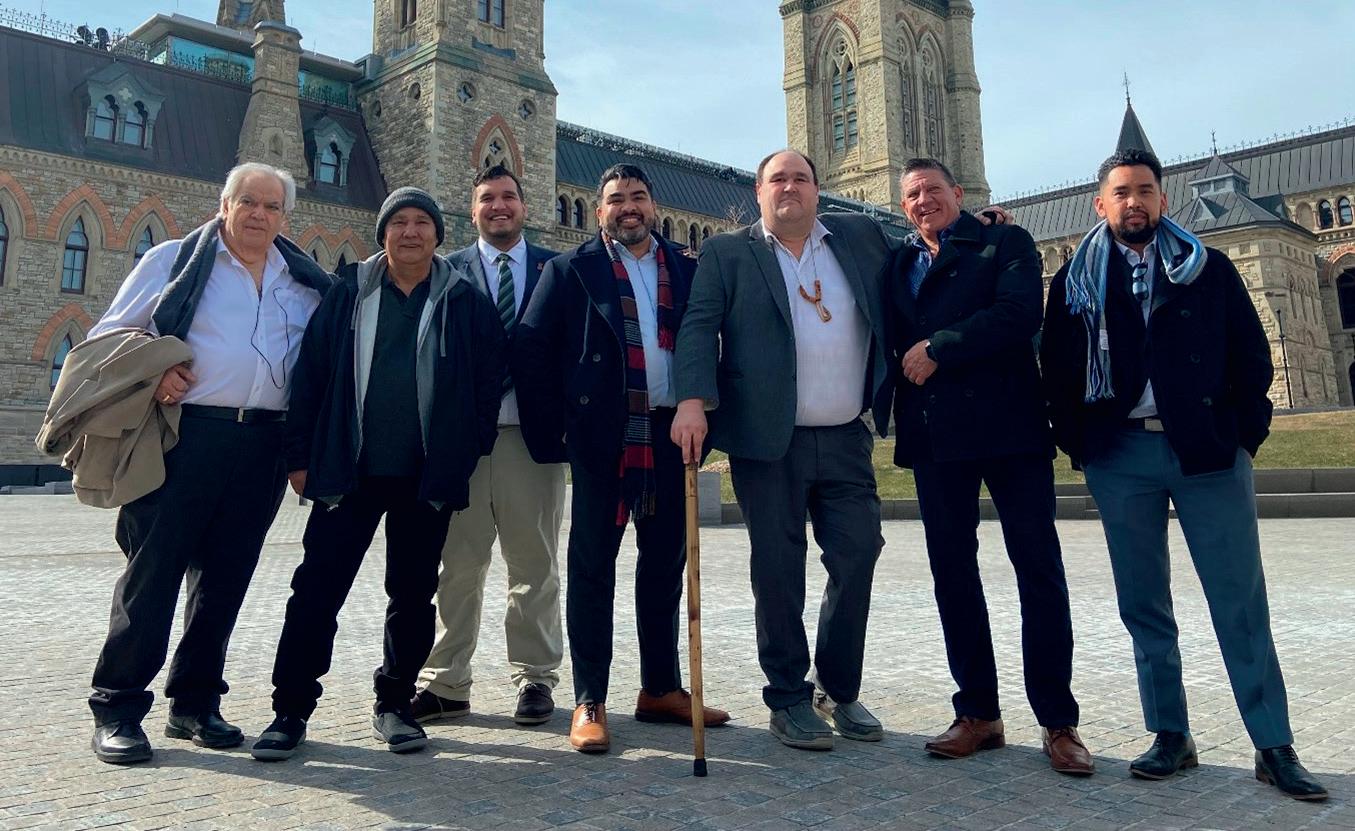
Every First Nation is taking its own approach to these relationships
”

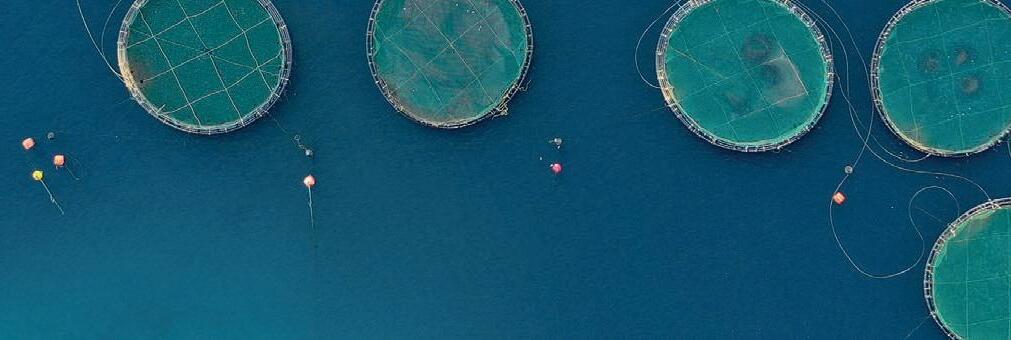
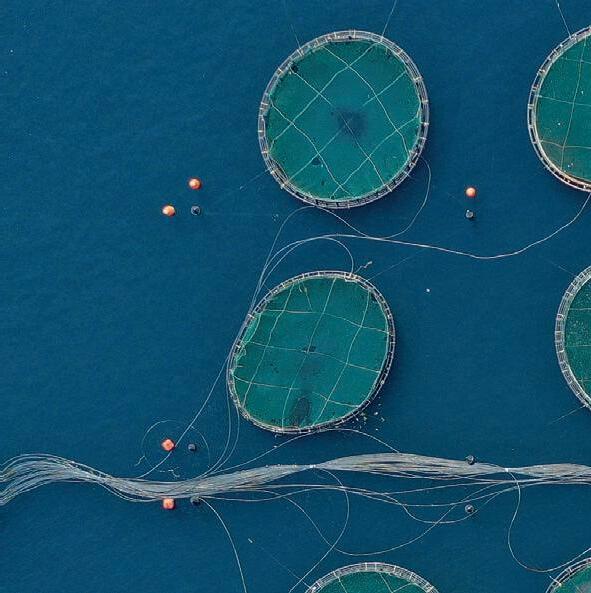
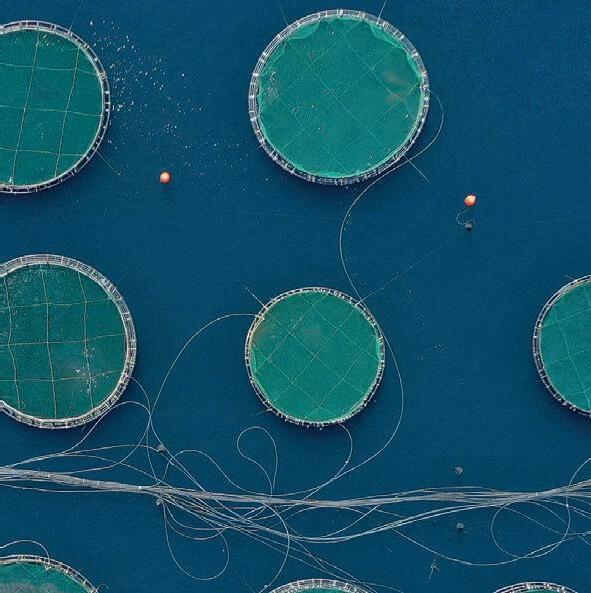







Scan this QR code to reach out to our Aquaculture experts to learn more or visit Dyneema.com






 By Vince McDonagh
By Vince McDonagh
Iceland’s fish farmers are the latest group to fear a tax steamroller could be heading their way.
SFS, the seafood industry watchdog organisation, has warned that, if certain government proposals go ahead, the impact could be even greater than that which threatens to hit Norwegian producers next year.
SFS had published a discussion document on the tax issue for aquaculture calling for a fairer and more moderate approach.








Alarm bells were set ringing a few weeks ago when the government announced in its budget plans for 2023 a proposal to raise the aquaculture tax rate from 3.5% to 5%, as well as changing the reference period to a calendar year.
This, SFS maintains, is equal to a 43% increase in fees on those
Above: Sudureyri fish farm in Suganda�ordur, Wes�jords, Iceland Opposite: Aerial view of Beru�ordur �ord with fishing farms in Iceland
companies that have a licence to farm fish. It describes the measures as both premature and excessive.

Iceland’s aquaculture fee system is loosely based on the former Faroese model. However, the Faroese government has since submitted more flexible proposals to its parliament to increase the number of fee rates from three to five. Mostly importantly, the proposed new Faroese system would take production costs versus market prices into account.
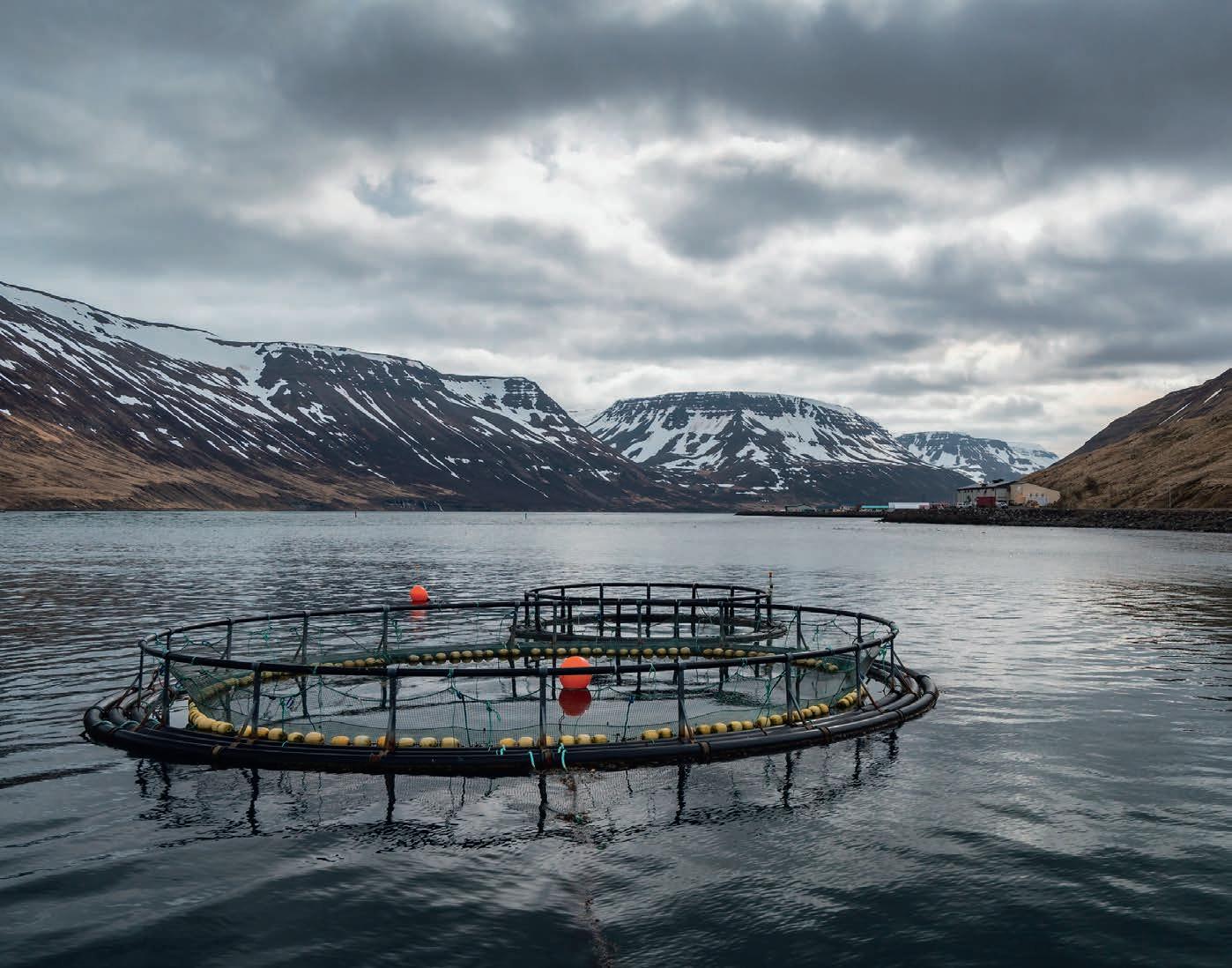
The proposed measures in Iceland,



meanwhile, create a possibility that its home producers would be paying tax at a higher rate even than those in Norway, despite all the controversy over Norway’s ground rent tax.
SFS reminds its members that the Oslo proposal created uproar and led to largescale share losses, with one company after another announcing the postponement or cancellation of large-scale investment plans.
Yet it believes that what Reykjavik is planning would place an even greater tax and fee burden on Iceland’s aquaculture industry.
“For this reason, it is seriously misleading to suggest when [the issue] is discussed that, in this country, taxes or resource charges on fish farming are insignificant or even non-existent,” says SFS.
“It is simply far from right. This situation is indeed of particular concern when you consider that aquaculture in Norway not only has significant economies of scale, but has other operating conditions that are more favourable.”


SFS says that in Norway, the greater the profit the more salmon companies pay to the state in taxes and fees, but when profits are down, they would pay less in resource taxes.
It goes on: “The reality is not the same in Iceland, where the aquaculture tax is a turnover tax that is paid regardless of the operating results at any given time.

“In that context, it can be mentioned that if the Norwegian method of resource tax collection in aquaculture had been used in this country, the amount paid would be insignificant, since the operating performance in aquaculture has been negative during the industry’s recent development years.”

The Icelandic tax is a levy based on the volume of production of salmon or rainbow trout by each licence holder, with a value calculated with reference to the average international market price for the period leading up to the point at which the tax liability is determined. It does not take account of costs or profits/losses in production.



The association argues: “SFS is not opposed to moderate charging for access to land and sea resources, including the use of marine areas for fish farming.
“However, it would be preferable to see more equality in charging with industries that use the country’s resources.”
SFS believes that what is being planned will hit Icelandic society more than foreign-owned businesses.

“The association has also emphasised that the so-called aquaculture fee is only one element in the overall picture of the industry’s tax, fee and operating environment.
“It is important to pay special attention to the whole picture when discussing the specific charging of aquaculture compared with other countries.”
It says the major task for the government is to set a clear strategy for the future and development of aquaculture, which is to be completed in the spring months of 2023.
If the government plans to build aquaculture in an ambitious and responsible way, moderate fees are one of the factors that must be taken into account, the association says: “Aquaculture in Iceland is a growing industry that has created enormous opportunities for value creation. The number of jobs has increased rapidly as a result of greater activity and investments, and the export value of agricultural products has never been higher.”
The industry is still very much at the development stage, although investment is continuing to grow and create value.
SFS says: “In this context, it should be noted that the Norwegians were engaged in profitable fish farming for at least 40 years before the discussion about resource (ground rent) tax started in that country.
“Similarly, salmon farming in the Faroe Islands began freely before 1980, but tax collection in its current form was not established until nine years ago.
“Faroese and Norwegian farming companies were therefore given decades of scope for investment, development and marketing before specific tax collection was undertaken.”
SFS is warning the government that “Immoderate tax collection” will put an end to individual entrepreneurship and thus the social benefits created by the industries affected.
The Norwegian and Faroese governments took a cautious approach to tax in the early days of fish farming, and that is a strategy the politicians in the Althing, Iceland’s Parliament, should also take into account, SFS stresses.




It is seriously misleading to suggest… that in this country taxes on fish farming are insignificant
All those who work on and with the sea – such as fish farmers – pay close attention to the daily weather forecast. But with biological hazards a key factor for fish health, why don’t we also have a “bio-forecast”?
This is the aim of two projects in Scotland, which seek to provide an early warning for finfish farmers of threats such as harmful algal blooms (HABs).
As a biological threat, algal blooms, caused by a proliferation of phytoplankton, do not have the public profile that sea lice have, but they are arguably more serious when it comes to fish health and mass mortalities.
Phytoplankton are part of the marine ecosystem – and essential to it – but blooms on a large scale can spread toxins harmful to fish and humans, and can reduce dissolved oxygen to dangerously low levels. Some phytoplankton, such as spiny diatoms, as well as zooplankton such as hydrozoans (“microjellyfish”) are also associated with serious gill health problems.

Advance warning of biological threats could help farmers to take appropriate action, whether that is drawing fish down to lower
levels, boosting oxygen levels in the pens, moving the fish or simply bringing forward a harvest schedule.
Two projects currently under way involve the Sustainable Aquaculture Innovation Centre (SAIC), working with other bodies including the Scottish government’s Marine Scotland and the Scottish Association for Marine Science (SAMS). Both come under the overall remit of the Farmed Fish Health Framework (FFHF), an ongoing joint initiative between the Scottish government and the trout and salmon sectors to promote fish health and welfare over a 10-year time horizon.
The first has focused on standardising protocols for sampling and identifying potential HABs, while the second seeks to create an online early warning system modelled on the one already in place for shellfish farmers.
Finfish farmers realised that the challenges arising from climate change needed to be identified and asked SAIC to coordinate some work in this area. The climate change sub-group of the FFHF was chaired by Heather Jones, Chief Executive of SAIC,


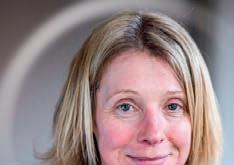
Farmers have been carrying out their own sampling for many years now, but that has been on a company-by-company basis. As SAIC’s Director of Innovation and Engagement, Sarah Riddle, explains: “The aim is to get consistency between apples and apples.”
The project has developed a framework of standard operating procedures (SOPs) for sampling to ensure this consistency, and also a taxonomy for the identification of phytoplankton species. Together, this means that monitoring at different points along the coast by different operators can be put together to show a more complete picture.
Riddle adds: “The next step is how to onboard the SOPs, which means training will be a priority.”
A future project is likely to focus on similar protocols for sampling dissolved oxygen levels in Scottish coastal waters.
Meanwhile, work is ongoing to develop an early warning network for HABs. Professor Keith Davidson, Associate Director for Science and Education at SAMS, explains: “SAMS has been carrying out a regulatory role for Food Standards Scotland, monitoring biotoxins in shellfish that could be harmful to consumers.



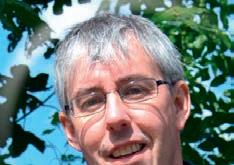
“We felt that incidents relating to, for example, HABs and anomalous wind and current conditions could be better predicted, so we created a shellfish bulletin, initially as a PDF (this was in 2015) covering factors such as cell counts [algae cells logged at around 40 representative farm sites, weekly], toxicity data, currents, wind etc and our interpretation of those factors – in the form of a ‘weather forecast’.”

Now there is a website, www.habreports.org, covering Scotland and, in more detail, Shetland. The site includes a hydrodynamic model that can be used to see how cells at a given site could be spread by wind and currents over time.
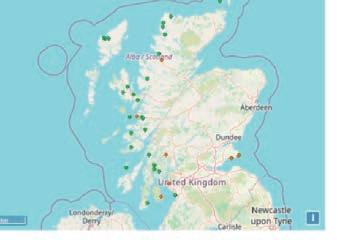

Davidson adds: “The most useful aspect is that the website can synthesise data in a form that is easily accessible and can be interpreted from data that was formerly held in separate spreadsheets.”


Detection of potential HABs has been helped by the deployment of two Imaging FlowCytobots (IFCBs), one funded by a National Environment Research Council grant and owned by SAMS, and one funded by Highlands and Islands Enterprise and operated by the University of the Highlands and Islands, Shetland.
The cytobot is an autonomous device that scans water samples for phytoplankton using flow cytometry, lasers and cameras. The IFCB then beams this data to the cloud for specialist analysis, allowing the monitoring and detection of phytoplankton.
The device is submersible and can work unattended in situ at an aquaculture site or monitoring station. It is an expensive solution, however, so installing a string of cytobots along the coastline is, so far, not a likely prospect in Scotland, at least.
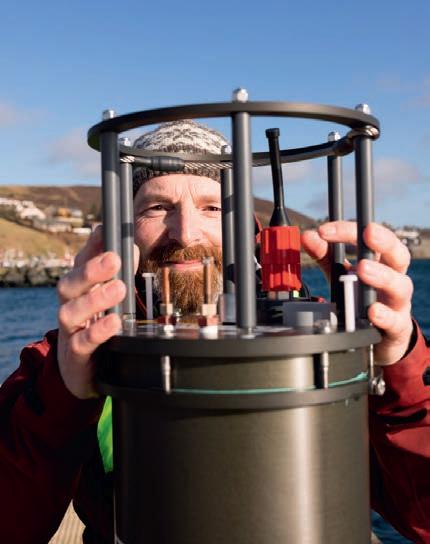
The potential benefit to fish farmers of an early warning system is clear, although there are differences in terms of the threats and potential action. For the shellfish farmers, the key issue is the presence of toxins. While in most cases the shellfish are able to process and eventually eliminate them, these toxins can be harmful to humans. Shellfish farmers, therefore, simply need to postpone harvest until the threat has passed. For finfish farmers, the range of threats, and potential actions to deal with them, is much more complex.
SAMS and SAIC are working with two fish farmers, Mowi Scotland and Scottish Sea Farms, to stress-test a version of the early warning system that has been adapted for finfish. This project is due to be completed by January 2024.
There are reasons to believe that biological threats are increasing thanks to climate change. Sarah Riddle notes that fish farmers used to only sample for HABs between April and October, when the seas are warmer, but recently blooms have
also been encountered in Shetland in February.
She adds: “It’s evolving and there are new species challenging gill health, for example.”
The Marine Conservation Society, in a survey published in November, reported an increase in the abundance of jellyfish types around the UK and Ireland, including species normally found in warmer waters. While larger jellyfish don’t pose a specific problem for fish farmers, their smaller relatives do. Certainly, anything that can give farmers more warning of threats will help to safeguard fish welfare.
SAIC’s Jones adds: “SAIC is delighted to partner with both the Scottish government and Scotland’s finfish sector to deliver independent, science-led evidence. We hope that will inform emerging best management practice and enhance the understanding amongst policymakers of the challenges arising from climate change effects.”


Opposite from top: Lion’s mane jellyfish; Sarah Riddle
This page from top: www. habreports.org screenshot; Professor Keith Davidson; Gregg Arthur, Aquaculture Manager, UHI Shetland, with FlowCytobot, Shetland
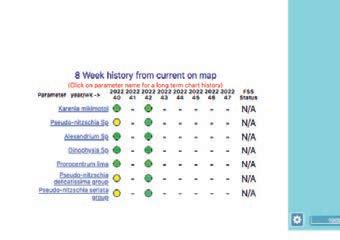
”
who secured funding from Marine Scotland for a “deeper dive”, including the standardisation project.
Energy costs have been a problem for fish farmers throughout Europe ever since Russia invaded its neighbour, Ukraine, in February this year.
Now imagine that, as well as spiking energy and feed inflation, you are also contending with frequent power blackouts as a result of missile attacks on your country’s infrastructure by a hostile power. That is the situation, right now, for Ukraine’s aquaculture sector.
Fish Farmer spoke to two people from Ukraine’s beleaguered industry: Andrey Goncharov, CEO of the Khmelnitzky Ukrainian Fish Farming Company LLC, and Grigoriy Smityukh, CEO of FishSmak/Forel, a producer and research establishment.

Even before the war, Ukraine was far from being a major player, in volume terms, in this sector. Recorded production was 16,882 tonnes in 2021, compared with catch fishing, which produced 73,611 tonnes in the same year.

Ukraine imports far more fish than it produces. As Laszlo Varadi,




President of the Network of Aquaculture Centres in Central-Eastern Europe (NACEE), puts it: “Rich aquatic resources are not efficiently exploited and Ukraine is importing significant amount of aquatic food to satisfy market demand.”
As in most of Eastern Europe, aquaculture in Ukraine is dominated by freshwater pond farming. Maritime aquaculture, despite Ukraine’s Black Sea coast, is not very developed at all.
Yuri Sharilo, Director of the state-financed Methodological and Technological Aquaculture Centre in Kyiv, says: “Ukrainian aquaculture was modern and developed by the standards of the socialist camp. However, after the restoration of
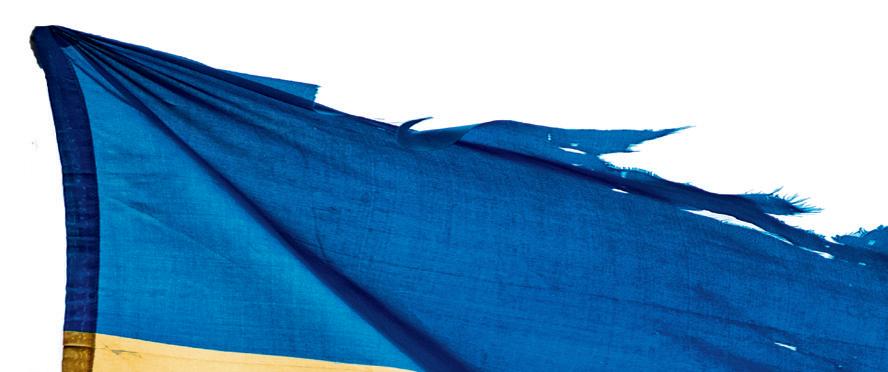
The potential of Ukraine’s fish farming sector is under threat from the war. By Robert Outram
independence in Ukraine, in some sectors no reforms followed.
“Due to the predominance of microenterprises (usually family businesses) with small volumes of production and, accordingly, their poor financial capabilities, it is very difficult to introduce modern fish farming technologies and create strong producers’ associations for accelerating of modernisation and market change.
“Moreover, the lack of targeted state support for business, complex and costly registration procedures, bureaucratic pressure, underfunding, inefficient management and marketing problems resulted in decline of fisheries science.”

Sharilo stresses that aquaculture still plays a serious role in the production of food in Ukraine and that specialists see significant potential in a number of areas of agricultural production, including aquaculture.
The war has hit Ukraine’s economy hard. NACEE’s Varadi says: “Aquaculture farms in most regions of Ukraine, where hostilities are taking place, suffered significant property damage. In particular, ponds, hydrotechnical installations and warehouses, production equipment, fish and other property have been damaged or looted. In some territories, access and conducting of technological operations have been made impossible by land mines.
“Statistical data on aquaculture production in 2022 are not yet available, but, according to government estimates, the war-related losses of the entire fisheries and aquaculture sector could amount to over US $40m (£33m).”





Russia’s invasion, launched on 24 February, saw devastation for cities such as Mariupol and a huge population displacement as many citizens fled the fighting. As of now, a significant portion of the country is occupied by Russia.
Ukraine’s Methodological and Technological Aquaculture Centre for Aquaculture has gathered input from farmers to assess the impact of the war. Three factors stand out as the biggest challenges, as Sharilo explains. First, at the start of the war (March–May 2022), there was a shortage of feed.
Sharilo says: “Feed prices increased to extraordinary levels, fish farmers (in particular, sturgeon and salmon farmers)


Opposite: Khmelnitzky fish farm in the snow
This page from top: Sturgeon fingerling rearing at Kherson Sturgeon Hatchery; Forel fry
simply did not have enough funds to purchase them. Even before the beginning of the full-scale invasion, in Ukraine there were no effective financial instruments for aquaculture, and after February 24 2022, the banking sphere stopped working in this direction.”

Secondly, logistics difficulties occurred because the cost of transportation increased by several times. The problem of logistics is especially acute in the occupied and front-line territories.
Thirdly, there is a problem of sales for fish products. Sharilo says: “Manufacturers have been forced to adjust the price of their own products, taking into account the increase in the price of feed and logistics, but the purchasing power of citizens has not improved since the beginning of the war. Only a few consumers can afford buying fish products at the offered price.”
In addition, the industry has been coping with the destruction of infrastructure and a shortage of personnel.
Sharilo says: “It is difficult to estimate the total cost of damage caused by Russia to Ukrainian aquaculture: there is no communication with the occupied territories, and active hostilities on the front line and near-front territories prevent both economic activity and research. A full assessment of the consequences of the war will be carried out after the end of the war, and for now we are only working with the data of our surveys.”
Of the surveyed aquaculture subjects in the north of Ukraine, 88% reported material losses; as have 100% in the central and 50% in the southern regions of Ukraine. The western region has fared


Russia has been actively destroying our energy system
better, with only 36% of the farms suffering losses, but the scale of the industry in this region is smaller.
Forel, otherwise known as the Trout Research and Production Centre LLC, was founded in 2011 as both a research centre and a producer. It sells – under the FishSmak brand – trout, sturgeon, carp and silver carp, as well as fry and fertilised eggs.
The organisation’s facility uses the pure waters of the Okonsk Springs National Park in the north west of Ukraine.
CEO Grigoriy Smityukh says: “Before the start of the war, our business was developing at a rapid pace.
“The water resource was only enough to cultivate 150–170 tonnes of fish per year. Therefore, in 2017, we aimed at intensive aquaculture with the construction of closed-loop water supply facilities (CWS), and already now we can cultivate about 1,000 tonnes of fish per year – and even more in the future. Of course, CWSs slightly increase the cost of fish farming due to the increase in energy intensity, but this is fully compensated by the increase in the farmed fish volume.”
Production and sales have actually increased and Forel is aiming for a record of over 200 tonnes of fish sold per year, but as Smityukh stresses: “This is not the volume we planned… the potential of our enterprise has been realised by barely 20%.”
He adds: “For me personally and for my family, the war has had a significant psychological impact. You never know what will happen tomorrow and you live in constant fear.
“As for all normal and civilized people, this is a tragedy for me personally. I think there are no indifferent people among my colleagues in Ukraine either. Our century opens up new, until now even unheard of, opportunities in the field of technology that humanity should use for the development of the humanitarian sphere, overcoming if not poverty in the world then at least preventing hunger. Aggression against Ukraine, which is not provoked by anything and from the point of view of common sense is not justified by anything, is a significant obstacle to this.
“One should not fight, but do business. But we did not attack, we were attacked. We are not the aggressor, we are the victim of aggression and we should defend ourselves.”
Andrey Goncharov is CEO of Khmelnitzky Ukrainian Fish Farming
This page from top: Carp; Refugees arrive in Lviv, western Ukraine Opposite from top left: Kherson sturgeon farm; Forel trout; Forel tanks; Forel sturgeon
Company, which operates in Letychiv district in the Khmelnitzky region, around 345km south west of Kyiv.
He says: “Before the war, we made plans for 10 years ahead. We restored the breeding stock and we successfully managed to reproduce pikeperch. We built an incubation centre, thanks to which we grew carp, and grass and silver carp. We have learned how to work with pike and to produce caviar (eggs) from pike.
“Last year, we increased fish production by 30%. We are now getting two tonnes per hectare of ponds. Our task at the moment is to reach a productivity of three tonnes per hectare. Up to today, we are using only 30% of the ponds of our farm for production purposes, and we plan to increase this figure and put 50% of the area into operation.”
The company has been investing in modernising the facility. It hopes to eventually have its own feed plant and to further develop its processing capacity.
Goncharov adds: “The main task is to enter international markets and increase production to 20,000 tonnes by 2035.”





Meanwhile, the war has taken its toll. Goncharov says: “Russia has been actively destroying our energy system: electricity, communications and the internet are no more than three to four hours a day.
“There were no active hostilities on the territory of our enterprise, but many employees went to the war zone as soldiers and officers voluntarily and on conscription. There was a significant staff shortage.
“With the beginning of the resettlement, our company provided its buildings and premises for internally displaced persons. People, running away from the war, lived with their families at our enterprise. Many whose houses were destroyed still live with us today.”
In the early stages of the war, the company harvested its stock of fish to provide canned food for refugees and other families in need. The team produced and distributed 70 tonnes of canned food with the aid of volunteers and the Ukrainian military. For the first three months following the invasion, Goncharov


difficult to
and his colleagues were working a sevenday weeks with little time for sleep.
He adds: “The thought that Ukraine had withstood and turned the tide of the war of occupation gave hope for victory. And after the victory, you need to rebuild and restore everything that was destroyed and broken. It is with thoughts of peace and further work for the benefit of the country that every day the entire team of the enterprise begins a new working day.”
What can the international community do to help Ukraine’s fish farmers?
Sharilo says: “Since the beginning of the war, many countries of the European Union, Asia, America and Africa, as well as international public organisations and ordinary citizens, have been helping Ukraine withstand the onslaught of the Russian army. This is really wonderful and I think that all Ukrainians are infinitely grateful for the care shown. “European colleagues – representatives of national fisheries and aquaculture associations, as well as international unions and associations – did not stand aside. In particular, NACEE took an active position in this matter. Collected funds were and are being sent to Ukraine and other aid is coming. Our centre [the Methodological and Technological Aquaculture Centre for Aquaculture] was also involved in the formation of international aid for Ukrainian aquaculture at the beginning of the war.”
There were fears that Ukraine’s fish farmers would not be able to obtain ova for the March-April spawning season, but with coordination and international help, the spawning season did take place, albeit at a smaller scale than normal.
NACEE’s Varadi says: “NACEE is not a donor organisation, but it is ready to assist its Ukrainian members and, in general, players of the aquaculture sector
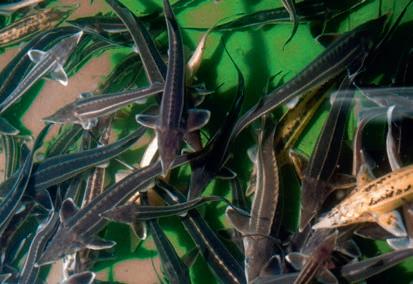
in the current difficult situation, including the provision of professional assistance through innovation-oriented expert work and training, as well as mediating between Ukrainian colleagues and EU partners, or potential investors for the improvement of feed and seed supply.”

NACEE, in cooperation with the Food and Agriculture Organization of the United Nations (FAO) and the World Sturgeon Conservation Society, also helped several Ukrainian colleagues to attend the EAS 2022 conference in Rimini, Italy.
However, the war is far from over. Sharilo says: “The enemy is still trampling our land, killing Ukrainians, and destroying our homes and industry. We are still in the process of achieving our goal: victory! And after it, we will begin a reconstruction of destroyed cities and villages, and economic and industrial facilities. We will restore an economic sphere, including aquaculture.
“Not only material and financial, but also consulting support from international organisations and associations of specialists, such as NACEE in particular, will come in handy with the aim of not just restoring the fishing industry of Ukraine, but also rebuilding it on a more modern basis, introducing new technologies and new aquaculture facilities, taking into account the fact that this industry ensures food security.”
There is still plenty to be done, however. Goncharov says the Khmelnitzky farm received funding from USAID to buy a freezer, but otherwise he has seen no direct help.
He says: “There is a declaration of support, but so far there have been no practical steps to help Ukrainian fish farmers. I really hope that this will happen in the near future, and we will not be left alone with our problems and challenges of today.”

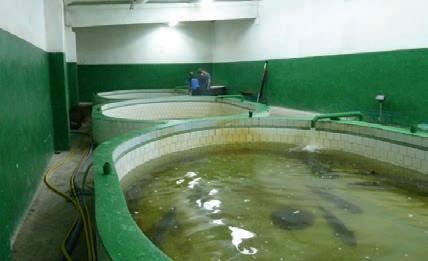
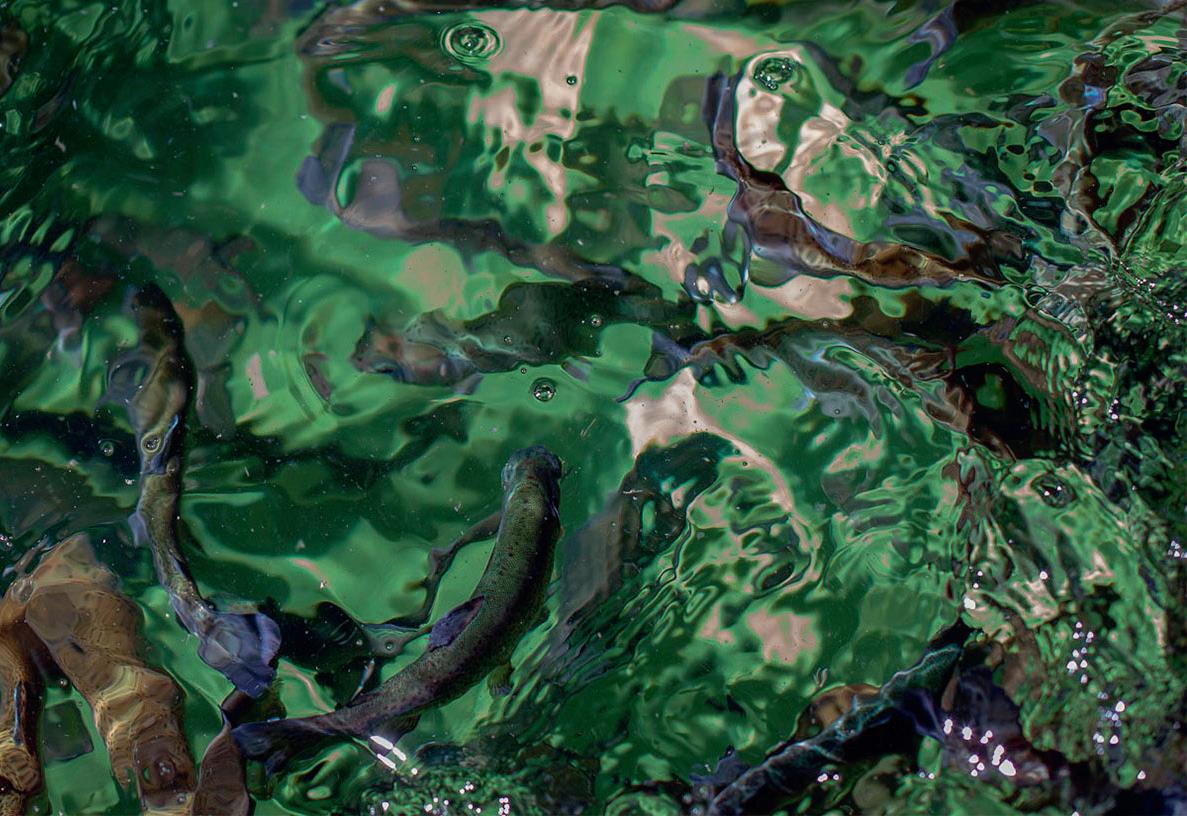
In 2021, the aquaculture production of Ukraine equalled 16,882 tonnes. The importance of the aquaculture sector is secondary compared with capture fisheries, which produced 73,611 tonnes in the same year.
Since the dissolution of the Soviet Union, aquaculture showed a decreasing trend over the last decades. In 1988, Ukraine produced 96,182 tonnes of fish in aquaculture, but after 1991, there was a strong drop in production. By 2000, production had dropped to 30,969 tonnes and by 2010 it was 22,865 tonnes. In 2018–2020, production stayed around 18,500 tonnes, decreasing further to 16,882 tonnes in 2021.
The decline in production for freshwater fish species is not unique to Ukraine, however, and has been a factor throughout Central and Eastern Europe.
The main aquaculture species is common carp, with a production of 7,411 tonnes in 2021. Chinese carps (bighead carp, silver carp, grass carp) also have an important share in the production, equalling 6,040 tonnes in 2021. The Ukrainian aquaculture production also includes trout (312 tonnes), catfishes, including wels catfish and channel catfish (284 tonnes), sturgeons (77 tonnes) and a number of other species, such as crucian carp, pike, pikeperch and tench.
Source: NACEE/UN Food and Agricultural Organisation statistics


 By Euan Paterson
By Euan Paterson
It’s early 2022 and former Scottish Association for Marine Science (SAMS) student Yuliia Buhlak is making waves in the aquaculture industry.

The creator of the online business portal Aquaculture Ukraine and the founder of the Ukrainian Aquaculture Society, the mother-of-one is also completing a business course in preparation for starting her own company, FISkin, which uses discarded fish skin to create leather products. Meanwhile, the 32-year-old is undertaking a PhD project to help identify potential expansion in Ukrainian aquaculture and is growing lavender at commercial scale on recently acquired land.
Then, on February 24, everything stops. Two days before she is due to complete her business course, her entrepreneurial ambitions are instantly replaced by a need to survive as Russian forces invade her home country.
For the next month, Yuliia and her three-year-old daughter, Sofia, are effectively confined to their flat and community shelters in Kyiv while her husband, Ievgen, contributes to the war effort. Air raid sirens and explosions are a constant soundtrack, as sleep becomes impossible. The young family lives off savings in the hope that the next day will bring peace.
“Everyone said to run away to Europe, but it was not so easy,” Yuliia recalls, speaking from Norway, where she now has refugee status. “I had a daughter to look after and, although I had a car, the queues to leave Kyiv were huge. You could run out of petrol and the situation was changing so quickly that you could
be driving into a battleground without knowing. We didn’t know how long the war would last.
“Every day was the same. We lived in a multi-story block of apartments and would go down to the shelter every time we heard the air raid siren, which could sound eight to 12 times a day, often during the night.


“The worst part was lying down each night and not being able to sleep. Sleeping with one eye open as the bombs fell and thinking that if a bomb hits a certain side of the room: “Can the glass from the window hit my child where she is sleeping? Is there a way I can lie down to cover her?”
The atrocities in the Ukrainian town of Bucha, where bodies of civilians were left strewn in the streets, mark the turning point for Yuliia, who decided escape was the only option left.
“I didn’t expect Russians to be capable of that,” she said. “I knew then that when the chance came, we had to leave.”


Above: Yuliia Buhlak with her daughter Sofia at Romsdals�orden, Norway
Left: FISkin bracelets and pack

Opposite: FISkin straps and purse
With men unable to leave the country, she and Sofia left Ievgen in Kyiv and travelled to Kiel, Germany, with a friend, Lena, and her young daughter.

Their destination was a deliberate choice. During the desperate first month of war, Yuliia received the most surprising of emails: an offer from Germany to translate online content for an aquaculture course. It is not the job of her dreams but in that moment, it was a lifeline. The family had some much-needed income and for Yulia,
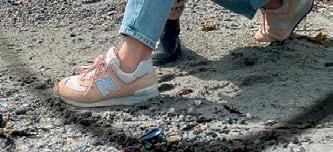
I knew then that when the chance came, we had to leave
her return to SAMS.
it was a sense of purpose beyond day-to-day survival.

Little did she know, it was also a platform from which she could start to rebuild her career in aquaculture. Four years after finishing her studies at SAMS, a partner of UHI, where she gained a Joint Master’s Degree in Aquaculture, Environment and Society (ACES).


Yuliia has now reconnected with the Oban institute. Working with SAMS scientist Dr Adam Hughes, she will develop her FISkin products during a three-month paid internship through the EIT Food RIS scheme, an EU-funded programme involving SAMS, which aims to overcome European food system challenges.
Yuliia will work remotely, looking at public perceptions of fish skin discards from processing plants and restaurants being used as an attractive and surprisingly durable source of leather for high fashion accessories such as watch straps and belts. Fish is a more sustainable resource than the conventional cattle leather, because fish farming produces lower emissions compared to cattle farms.
She says: “I don’t think I will be able to travel to Scotland, but I spent six months there during my studies and I loved the place and the people. I’m so happy to be working with SAMS again. Getting the internship is such a relief, as it will allow me to restart work on my FISkin project.”
Dr Hughes says: “Yuliia was an exceptional student at SAMS and since she completed our international Master’s in aquaculture, I have followed her career with great interest. When I first heard about her situation in Ukraine following the invasion I was deeply concerned.
“When the opportunity came to work with Yuliia again, and to help support her as she restarts her career and develops her business through this scholarship scheme, it was brilliant to be able to do something positive. Fish skin leather is very beautiful and really sustainable, so I am sure Yuliia’s business will be a huge success.

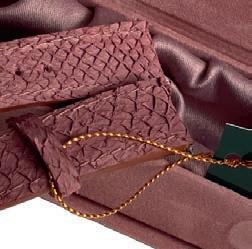





As for the future, Yuliia has hopes to return to Ukraine to rebuild her aquaculture dream. “I was such a happy and busy person before the war,” she says. “I like doing many things; it motivates me.”
Back home, in between supporting troops on the front line, husband Ievgen tends to the lavender crop, which has so far avoided damage and remains a site of hope for the family.
Through sheer ambition and determination, the seeds remain for a prosperous post-war future for the Buhlak family of Kyiv.

Euan Paterson is Communications and media officer with the Scottish Association for Marine Science.



For more on the Joint Master’s Degree in Aquaculture, Environment and Society (ACES) see www.emm-aces.org/



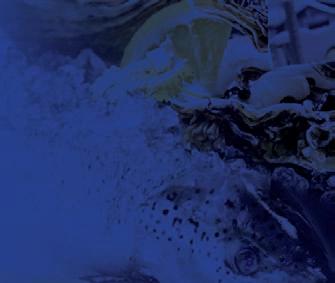




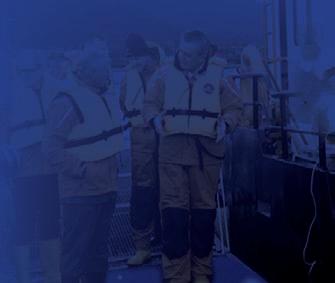

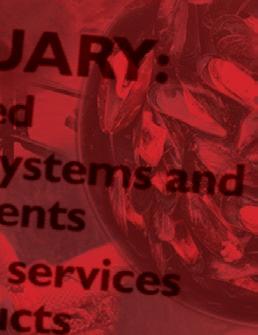


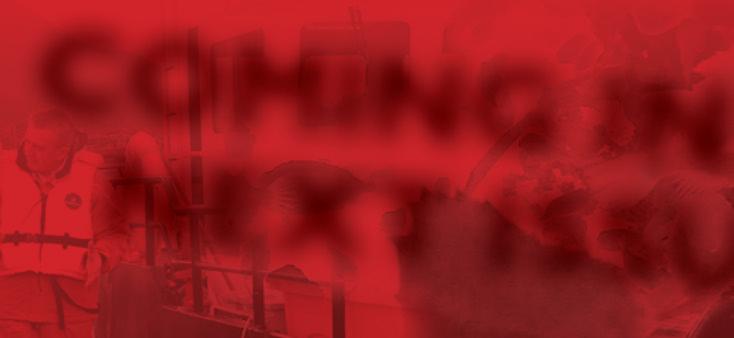

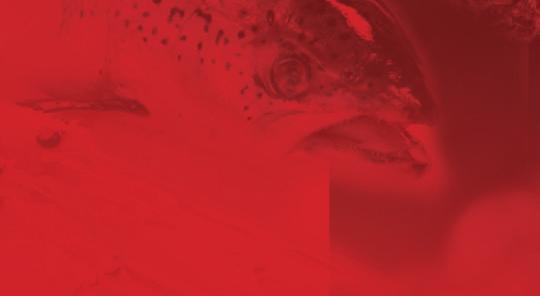

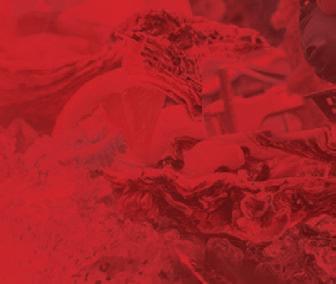





The discussion around the tightness of the labour market has not gone away. Many sectors continue to face difficulties in recruiting suitably qualified staff, particularly those industries such as the marine economy that often operate in remote or rural locations.
The Scottish government has attempted to offer a solution to the issue of labour shortages, while also providing a lifeline for many rural communities. In September 2022 the Scottish government published its proposal for a Scottish rural visa pilot. The premise of this is that local communities and businesses would come together to offer visa sponsorship to individuals who would then be required to live and work in the local area for a minimum of four years.
businesses can continue to grow.
For the brief moment that Liz Truss was Prime Minister, there were some soundings coming out of Westminster that she was in favour of loosening the reins on immigration to allow more workers to come to the UK. With the change in Prime Minister and return of Suella Braverman to the Home Office, this position is unlikely to gain any momentum as Ms Braverman was reported to be opposed to such moves.


This page and opposite: Fishmongers fish filleters and fish processors are now classed as skilled workers

Inset: Ashley Fleming

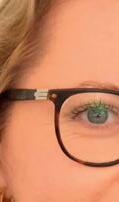
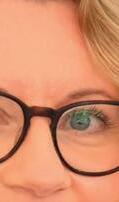

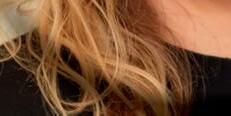
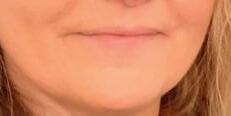



The partnership between industry and the local community was offered as a solution to staff shortages, and a way to mitigate against the depopulation affecting some remote and rural areas. Immigration matters are, however, reserved to Westminster and a UK government spokesperson gave a less-than-positive response to the proposal, reportedly stating that the current immigration system works in the interests of the whole of the UK.
When faced with calls to make it easier for companies to hire staff from overseas, the Westminster government has pushed for more investment from employers in staff training and development, and automation. However, these changes take time and there need to be options available to employers in the interim to ensure that

It was not, therefore, surprising that was nothing of note in the Chancellor’s Autumn Statement with regards to immigration, despite migration being a key component for economic growth.

That, therefore, leaves industry with the current immigration system, which by all accounts does not offer sufficient flexibility to deal with the issues in today’s labour market.



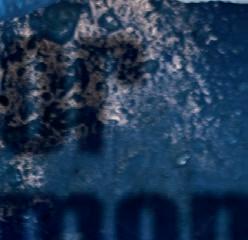
Lord Wolfson, the Chief Executive of retail giant Next, has recently called for more visa routes to be opened to allow lower skilled workers to come to the UK to tackle current
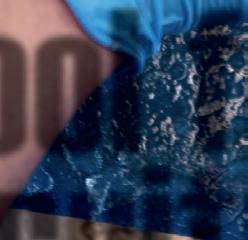
recruitment struggles. Lord Wolfson noted that the retail sector was struggling to fill vacancies and was missing the unfettered access to EU workers that free movement provided.
There are, however, some solutions available to employers under the existing immigration system. The most commonly used is the skilled worker route. This is a method that may be known to, and used by, some employers for their more senior hires, but it is also an option available for other positions, including those within the fish processing side of the business.
Prior to the end of free movement, the sponsored work route was rebranded from the Tier 2 (General) route, to the Skilled Worker route. Aside from the new name, there were some significant changes resulting in a relaxation of the rules. In light of these changes, organisations that have previously considered and discounted visa sponsorship would do well to reconsider it as a viable option.
Some of the red tape surrounding visa sponsorship has been lifted. Most notably is the requirement to carry out a resident labour market test. This test required employers to advertise positions, usually for a minimum 28-day period in
prescribed media, before being able to hire foreign workers. This often led to frustration for employers who needed to be able to recruit immediately or for those who found themselves having to repeat the process if it had not been carried out to the Home Office’s exacting standards.
As well as scrapping the resident labour market, both the skill level and the minimum salary threshold for visa sponsorship have been reduced. This means more roles that previously would have been considered too low-skilled or low-paid are now within the scope of sponsorship.
While there are some exceptions, the minimum salary for any particular role will generally be the highest out of the following three options: £25,600 per year, the “going rate” for the role or £10.10 per hour. The minimum salary can be reduced to £20,480 in certain circumstance – for example, if the role is in a “shortage occupation” or if the individual is classed as a “new entrant”. New entrants include visa applicants who are under the age of 26 at the date they make their visa application.



When it comes to the marine economy, positions such as fishmonger, fish filleter and fish processor have all been assessed as sufficiently skilled to warrant sponsorship under the skilled worker route. Therefore, provided an individual is being offered a salary at the right level and can speak English to a decent standard, visa sponsorship is possible.
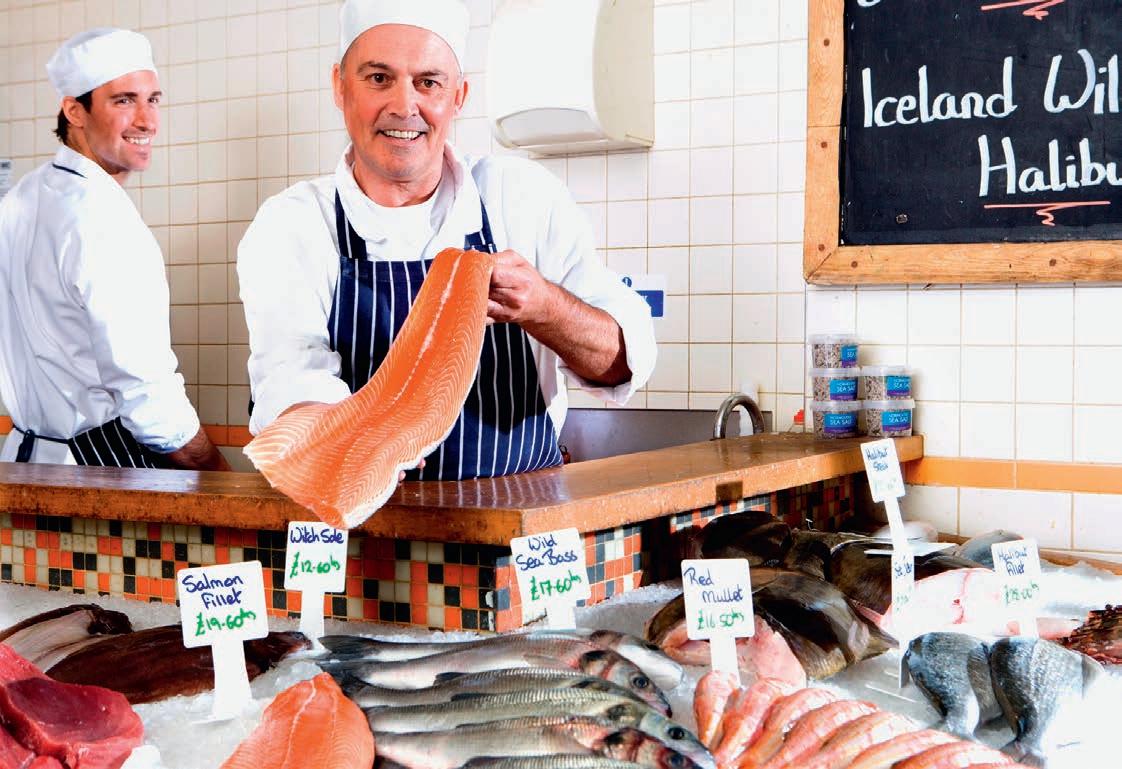

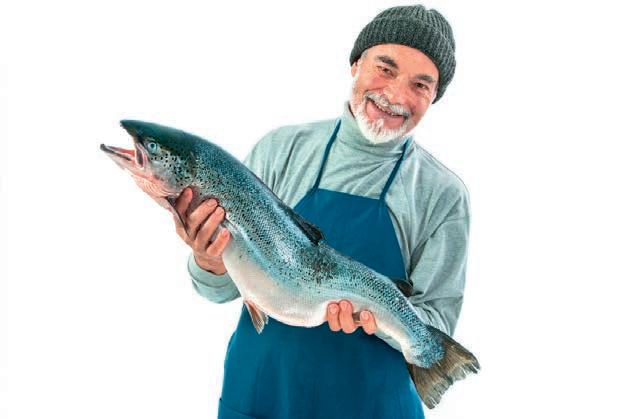
In order to make use of the skilled worker route, employers will first need to apply for and obtain a sponsor licence from UK Visas and Immigration. The current processing times for licence applications is up to eight weeks. It is therefore advisable for employers considering this route to plan ahead and secure their licence. Once issued, a licence is valid for a renewable four-year period.
While there are undoubted benefits to using immigration to meet current recruitment challenges, it is not without its difficulties, particularly for smaller businesses. Using sponsorship may lead to rises in employment costs through wage increases and payment of the associated government fees, but for those businesses struggling to function and to grow, it may be a price worth paying.
Ashley Fleming is a senior associate in the immigration team at law firm Harper Macleod




Some of the red tape surrounding
sponsorship has been lifted
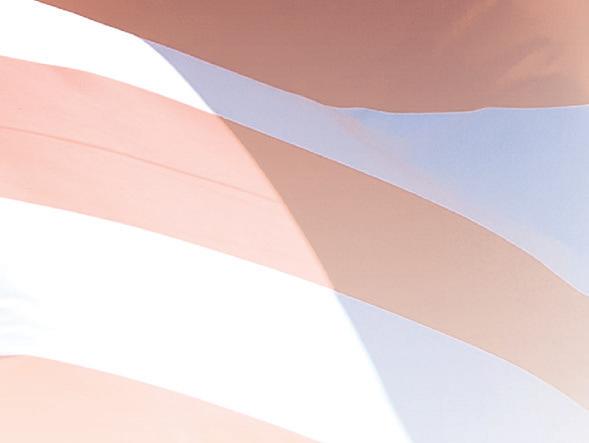 By Vince McDonagh
By Vince McDonagh

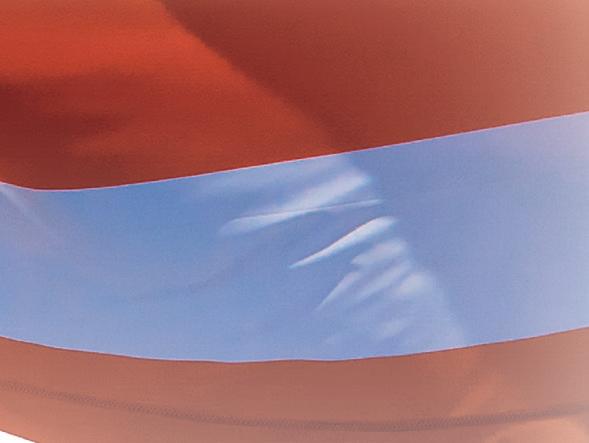









Fish farming in the United States, for so long trailing behind the rest of the world, could be about to take off.
The National Oceanic and Atmospheric Administration (NOAA), the government agency that looks after the environment from the sea floor to the edge of space, has published its first five-year strategic plan for expanding aquaculture in US waters.


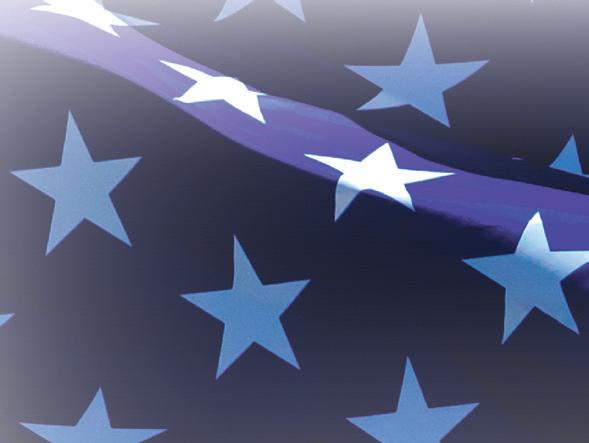
NOAA says there is an urgent need for the country to increase its seafood production and fish cultivation is one of the best ways of achieving that goal.
The plan will run from 2023 to 2028, and was developed by the NOAA Aquaculture Programme and related branches within the organisation. However, it lacks much specific detail.
It is a strategy that appears to focus on coastal or at-sea fish farming, with little mention of recirculating aquaculture system (RAS) or landbased farming.


NOAA Fisheries Assistant Administrator Janet Coit says: “Through this plan, the NOAA will support a thriving, resilient and inclusive US

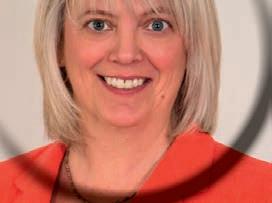

aquaculture industry as part of a competitive domestic seafood sector.








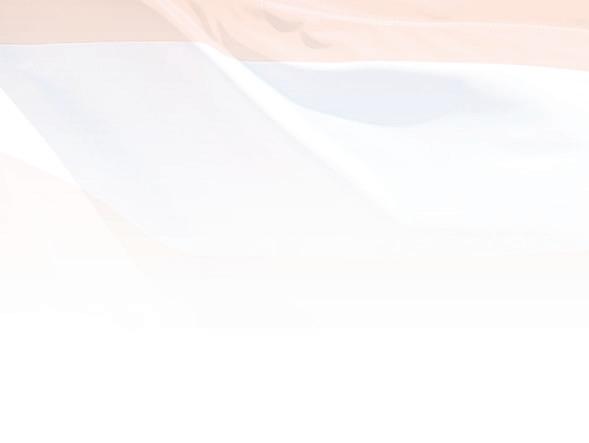

“This plan will act as a framework to guide NOAA’s Aquaculture Programme, set priorities to achieve our mission, and support NOAA’s vision of healthy and resilient ecosystems, communities, and economies.”
The Strategic Plan articulates a vision for an industry that “supports jobs, expands access to nutritious domestically produced seafood, and reinforces healthy coastal and ocean ecosystems in a changing environment”.
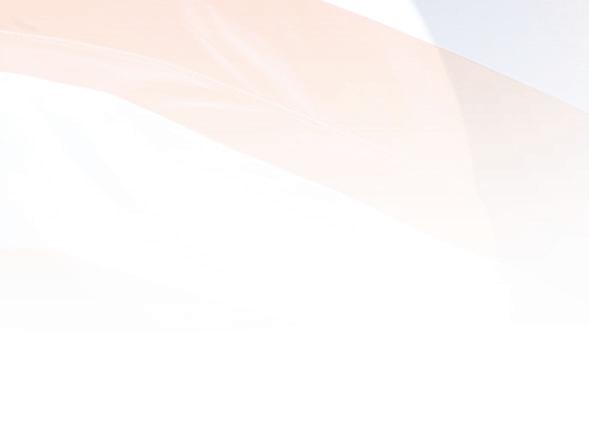
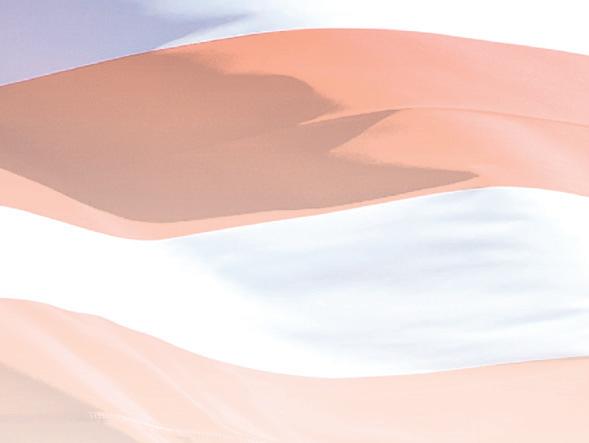
The plan is supported by the programme’s mission of providing science, services and policies that create conditions for the growth of sustainable US aquaculture.
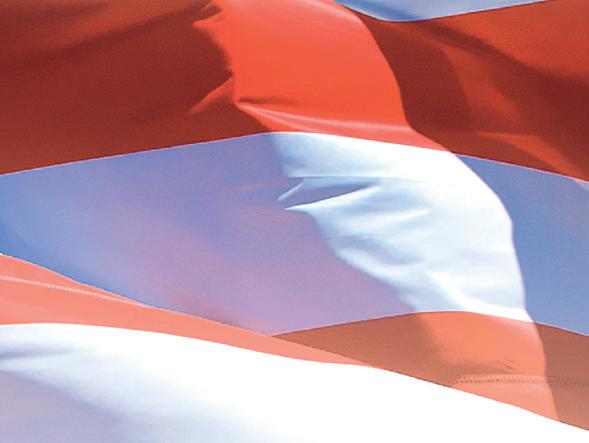
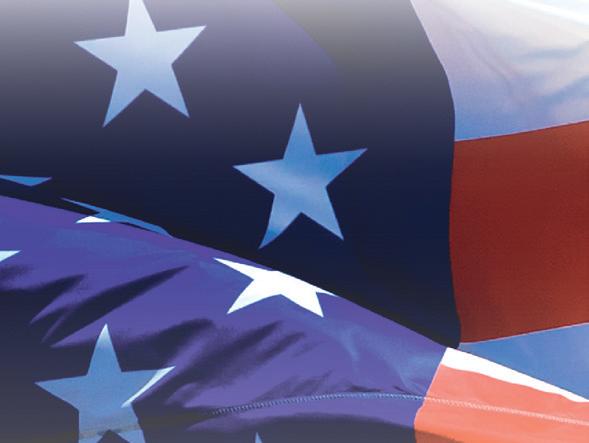
This page from top: Fish hatchery by the Nimbus Dam, Folsom, California; Janet Coit
Opposite, clockwise from top left: Salmon fish ladder at the Macaulay Salmon Hatchery in Juneau, Alaska; Salmon eggs extracted from salmon caught at Solomon Fish Hatchery; Tourists at the Macaulay Salmon Hatchery in Juneau; Rainbow trout at Hot Creek Fish Hatcher, California; NOAA Headquarters in Silver Spring, Maryland; Tomales Bay, in California, is home to world-famous oyster farms
NOAA will support a thriving, resilient and inclusive US aquaculture industry
The report says a compelling case can be made for growing more seafood domestically as the country is a leading global importer of fish and fishery products, as well as a key provider of technology, feed, equipment and investment capital to other producers around the world.
These qualities can also help the US as it expands its own sustainable aquaculture industry to meet the public’s growing demand for fresh seafood.
NOAA argues that sustainable aquaculture practices also serve an important function in supporting commercial and recreational fisheries.

For example, aquaculture contributes millions of hatchlings to wild fish populations. Nearly one quarter of the salmon caught in Alaska and an estimated 70% to 80% of those caught in the Pacific Northwest start their lives in hatcheries.
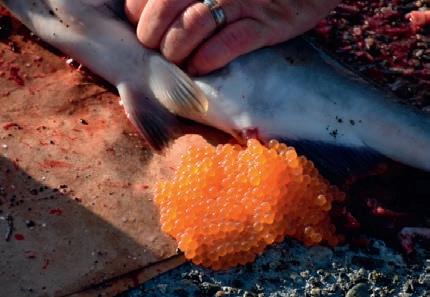
The plan contains four main goals, which are:
• improving the regulatory processes for sustainable coastal and marine aquaculture
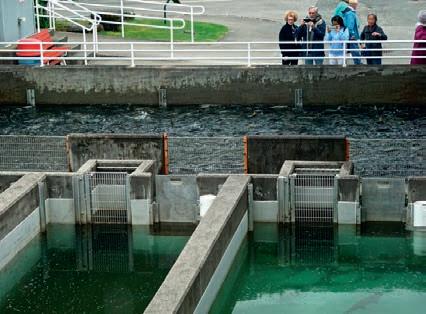

• using world-class science expertise, through collaboration with partners, to meet management and industry needs for a thriving seafood production sector and share this knowledge broadly;
• building awareness and support for coastal, marine, and Great Lakes aquaculture through two-way communication with diverse stakeholders and partners; and




• facilitating a robust aquaculture industry that thrives as a key component of a resilient seafood sector.
David O’Brien, Acting Director of the Office of Aquaculture, explains: “Sustainableaquaculture encompasses the ‘triple bottom line’ of economic viability, environmental stewardship and social responsibility.
“As the demand for seafood continues to increase, and climate change continues to pose a threat to food security, NOAA will continue supporting efforts to grow seafood on land, in coastal waters, and the open ocean in harmony with a healthy and resilient environment.”
He adds: “Our aquaculture team strives to advance sustainable aquaculture development in the US through science, service and stewardship. We will seek to provide ongoing opportunities for public input to ensure results

Globally, the US is a relatively minor aquaculture player. It currently ranks 18th worldwide, despite once been among the top five worldwide producers. The US imports 70–85% of its seafood, of which more than half is from overseas aquaculture. Driven by imports, its seafood trade deficit had grown to $17bn by 2020.
Based on value, more than 80% of US marine aquaculture production consists of bivalve molluscs such as oysters, clams and mussels. Salmon and shrimp make up most of the rest, but advances in technology, aquaculture feeds and management techniques are making more species available to the American public.
that are community-driven.”
NOAA says the Strategic Plan was developed collaboratively by its Aquaculture Programme, with listening sessions to sound out the views of the public.
Feedback was incorporated to ensure the plan reflected the needs of a diverse range of users and stakeholders.
It is the first Strategic Plan developed by all three Line Offices in the NOAA Aquaculture Programme, highlighting the strong shared goal to support resilient US aquaculture.
The NOAA says marine aquaculture is vital for supporting our nation’s seafood production, year-round jobs, rebuilding protected species and habitats, and enhancing coastal resilience: “Aquaculture – the breeding, rearing, and harvesting of animals and plants in all types of water environments – is one of the most resourceefficient ways to produce protein.
“It has helped improve nutrition and food security in many parts of the world. Globally, aquaculture supplies more than 50% of all seafood produced for human consumption –and that percentage will continue to rise.”
The report stresses: “At NOAA Fisheries, we support cutting-edge science and research, as well as federal policymaking and regulation, to grow sustainable aquaculture in the United States while supporting commercial and recreational fisheries.
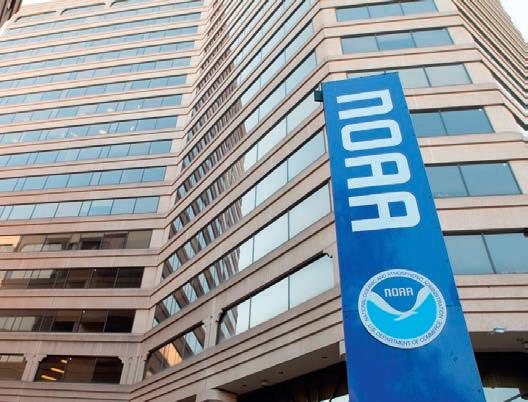
“We also support science, policies and regulations that allow communities to reap the social, economic and environmental benefits of aquaculture.
“We foster responsible aquaculture that provides safe, sustainable seafood; creates employment and business opportunities in coastal communities; and complements NOAA’s comprehensive strategy for maintaining healthy and productive marine populations, ecosystems and vibrant coastal communities.”
Benchmark Genetics is strengthening its innovation activities in gene editing and molecular genetics out of Edinburgh.
The hire of one of the world’s leading aquaculture genetics experts, Dr Ross Houston, in March this year marked the starting point of this strategic journey. In November, Benchmark announced the hire of yet another leading genetics scientist from the University of Edinburgh’s Roslin Institute to be heading the new molecular genetics programme, Dr Carolina Peñaloza (pictured). The programme will support more efficient genomic selection, increased genetic gain for target production traits and genotyping services to external clients.
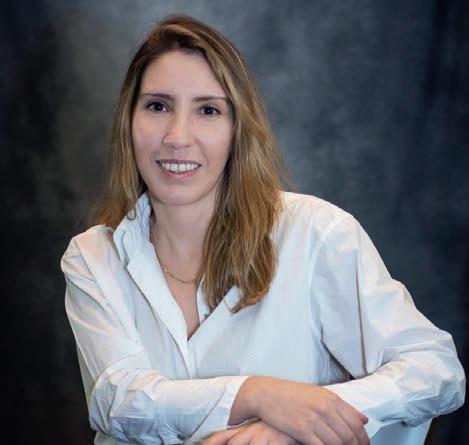
www.bmkgenetics.com
A study of farmed Atlantic salmon in Chile has identified the genes most associated with early maturation. When salmon reach sexual maturity too early, it is a problem for farmers as it affects the health and quality of the fish. The study, of the Lochy strain of salmon at a site run by Salmones Camanchaca, suggests that it is possible to identify individuals likely to mature too soon and avoid breeding those characteristics.

The study was carried out by Jose Gallardo of the Catholic University of Valparaíso, with colleagues from Salmones Camanchaca and the Swedish University of Agricultural Sciences.
Legislation aimed at legalising and regulating gene editing in commercial production in the UK has reached the House of Lords Committee stage. The Genetic Technology (Precision Breeding) Bill had its second reading in the Lords on 21 November, sparking a wide-ranging discussion on issues including the role of science, research and development in the UK’s economic recovery, greener options for farmers, the capacity for more resilient and more productive farming in the face of climate change, and a regulatory system for the marketing of precision-bred animals to ensure that animal welfare is safeguarded. The Committee stage – which will involve a line-by-line examination of the bill – was scheduled to start on 12 December as this issue went to press.

The Center for Aquaculture Technologies (CAT), based in the US and Canada, has appointed Dr Marcos De Donato (pictured) as a breeding scientist. De Donato brings over 20 years of expertise in animal breeding, genomics and molecular diagnostics, with commercial organisations, and prominent institutions academic such as Universidad de Oriente, Cornell University and Tecnológico de Monterrey.

De Donato said: “I believe CAT is a game-changer for aquaculture – the in-house team can develop custom tools for any wild or cultured species, and they deliver innovative solutions accessible to companies at any level, big or small.”
Nearly US $1m in funding (£820,000) from a National Oceanic and Atmospheric Administration (NOAA) Sea Grant will address the key barriers of kampachi (aka longfin yellowtail or almaco jack) production by focusing on improving egg quality, fecundity and juvenile development. Nearly $250,000 (£205,000) will fund a second project that will use a genomic approach to improve the reproduction performance of Pacific white shrimp, including laboratory experiments to assess and improve their genetic traits. The recipients are the University of Hawaii at Mãnoa’s College of Tropical Agriculture and Human Resources (CTAHR), UH Sea Grant College Program (Hawaii Sea Grant) and Hawaii Pacific University’s (HPU) Oceanic Institute (OI) research partnership.

James Cook University has officially launched a Research Hub that will use advanced genetic techniques and artificial intelligence to boost northern Australia’s aquaculture industry. The Director of the Hub, Professor Dean Jerry, said AUS $4.9m (£2.7m) of funding from the Australian Research Council through the Industrial Transformation Research Program has helped establish the ARC Research Hub for Supercharging Tropical Aquaculture through Genetic Solutions.
“The hub will apply modern genetic, selective breeding and artificial intelligence approaches to dramatically improve the productivity of farming four important northern Australian aquaculture species, namely barramundi, pearl oyster, grouper and marine red algae,” said Professor Jerry.

Anew video tool will be used to help pick out the traits that will enable farmers to breed better cleaner fish.

Researchers are looking to distinguish the “bold and brave” cleaner fish from the bashful specimens, and to find the genetic traits that drive fish behaviour.
The project, led by the University of Stirling’s Institute of Aquaculture, Swansea University and Otter Ferry Seafish, will look at the best ways to identify high-performing ballan wrasse and lumpfish using artificial intelligence (AI) and imaging technology. The consortium has received funding from the Sustainable Aquaculture Innovation Centre (SAIC) and will be supported by Loch Duart, Bakkafrost Scotland, Ocean Matters and Visifish, a machine vision company.
A previous SAIC-funded study proved that bolder ballan wrasse were likely to be a better fit for the job of picking sea lice from salmon. The bolder fish showed no hesitation when presented with foreign objects in their tanks and the research team is now exploring how to use this type of test at a commercial scale.
The first stage of the project involves categorising the different traits – such as boldness, shyness, social interaction and even aggression – and seeing how the range of personalities perform



at picking sea lice from salmon. Insights will then be integrated with imaging technology, which could be widely used by seafood producers to routinely monitor behaviour and welfare of cleaner fish.
Like some job interviews, there will also be a group challenge, with researchers monitoring how ballan wrasse and lumpfish with different personalities respond in social groups.
Dr Adam Brooker, research fellow in aquatic animal behaviour at the University of Stirling’s Institute of Aquaculture, says: “We produce cleaner fish for a specific job, so it makes sense to develop an appropriate selection process based on the different personality traits we know can influence delousing. With this new information, we can modify the rearing environment to encourage delousing behaviour and select good delousers for
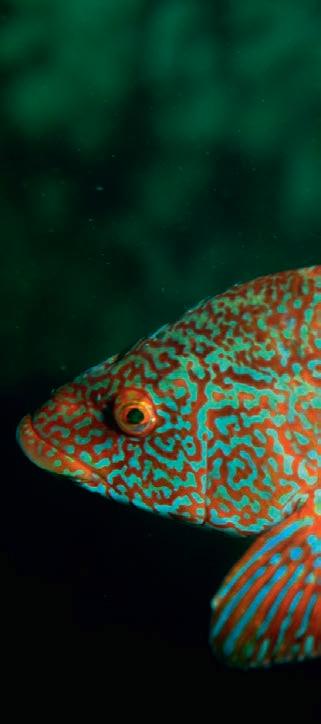

breeding future generations.
“Being able to identify the best delousers, based on behaviour, could lead to significant improvements in the health and welfare of salmon and a reduction in the number of cleaner fish used. Seeing how cleaner fish behave when cohabiting will also help us understand how these fish interact with each other so we can account for this once they are integrated into producers’ sites.”
With a new standardised personality test, the fish most likely to be the best at removing sea lice from salmon can be identified for future breeding programmes. The results of the project will also be used to adapt hatchery procedures and the rearing environment to encourage juvenile cleaner fish to develop the desired traits.
Field trials are expected to take place next year, with the camera system tested on current cleaner fish populations at Loch Duart and Bakkafrost Scotland sites.
Dr Eduardo Jimenez Fernandez, R&D Manager at Otter Ferry Seafish, says: “So far, the research points towards bold cleaner fish being better delousers. However, the data is limited and a more robust model is needed for categorising and identifying such personality traits. This project combines global behavioural expertise and will provide valuable information that could guide future selective breeding programmes.”
RESEARCH scientists in Norway have made important progress in their efforts to solve the problem of farmed salmon mating with wild salmon when they escape.
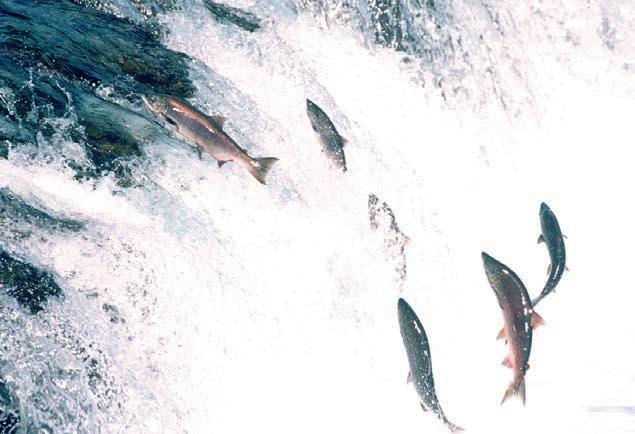
By turning off a special gene with the CRISPR gene editing technique, a team at the Norwegian Institute of Marine Research have created the world’s first salmon that creates no gametes (eggs or sperm cells).
The eventual purpose is to create a salmon that cannot mate with the wild variety in rivers.

Now the researchers have followed such salmon throughout their entire lives (a so-called production cycle) to compare growth, signs of welfare and omega-3 content with normal farmed salmon.
Researcher Lene Kleppe (pictured) says: “We found no differences in body size, smoltification, stress markers, heart size or the occurrence of skeletal malformations.

“The sterile salmon also had the same amount of healthy omega-3 fatty acids as the normal farmed salmon.”
The researchers found towards the end of the experiment that normal salmon began to grow faster than sterile salmon. They also developed a larger liver.
Kleppe explains: “These are early signs of sexual maturation. You generally want to avoid that in farming, not only because sexually mature fish on the run can mate with wild fish.
“Fish that reach sexual maturity become more susceptible to disease and can thus experience poorer welfare.
“They also had poorer meat quality because they use more energy on sexual maturation. In farming, sexual maturation means that the salmon must be slaughtered, even if it was ahead of schedule.
“Especially in closed breeding facilities on land, early sexual maturation is a problem. But there the breeders can to some extent use light and temperature to prevent that.
She says the easiest thing would be to exclude sexual maturation completely in farmed salmon: “We have now shown that gametefree salmon is largely similar to normal salmon, but has the clear advantage that it never reaches sexual maturity.”



produced for research in the laboratory. In Norway, the process is


The Institute points out that the gene-edited salmon have only been produced for research in the laboratory. In Norway, the process is defined as genetic modification, which is strictly regulated by the Genetic Engineering Act.
Top: Wild salmon need to be protected against gene�c mixing with their farmed cousins
Above: Lene Kleppe
Opposite: LumpfishThis page from top: Krucial Connected Seafarm; Krucial webinar presenters
Opposite from top: Krucial Webinar intro screen; Biggest challenge poll
Reliable, timely data in aquaculture is increasingly being recognised as critical for ensuring fish health and improving efficiency.
Getting that data to where it is needed can be a challenge, however. Connectivity is the key – and that can be a problem for sites where mobile data networks are patchy or non-existent.
Fish Farmer magazine and communications technology business Krucial co-hosted a webinar last month on the role of data in fish farming and the connectivity issue.

The discussion was facilitated by Fish Farmer editor Robert Outram and the panellists were:
• Kevin Quillien, Chief Technology Officer and co-founder at Krucial;
• Dr Lynne Falconer, UKRI Future Leaders Fellow at the University of Stirling; and


• Asbjørn Husby, Senior Engineer at the Aquaculture Centre of Excellence, Xylem Inc.
The webinar started with an online poll – did the attendees already have a “digital solution” in place? The answer was, on balance, “no”, with 41% saying they do, but 59% saying they do not.
Lynne Falconer addressed the issue of what we mean by “digitisation” – and why it matters. As she explained, her research focuses on how fish farmers can make better, information-based decisions . As she put it: “Data is really key to everything that I do.”
Digital data, she said, is more accessible, easier to access remotely and much more useful than handwritten records when it comes to searchability and analysis.

It also allows for greater understanding of complex biological issues. Dr Falconer explained: “In an ideal, simple world, there would be one cause, one effect. However, that’s not how reality works. In reality, fish health is complicated and it’s multifactorial… All of these factors combine, interact and lead to different effects. Without adequate data, it’s very hard to manage anything.
“We can use data to move to more proactive decision-making and preventive measures that can help to minimise potential risks in future.”
Asbjørn Husby took up the discussion, focusing on how data acquisition could be used to help support: fish welfare and health; disease prevention and biosecurity; sustainable and competitive protein production; and waste management and the
It’s exciting to see so much fantastic technology being developedKrucial and Fish Farmer magazine teamed up for an event on the digital future of aquaculture
circular economy.
Husby said that, for farm sites at sea or recirculating aquaculture systems (RAS) facilities on land, parameters such as dissolved oxygen and CO2 levels, temperature or turbidity can provide valuable information. That can be used, he explained, to control and fine-tune a process, to monitor water quality, to identify trend curves and to gather information that can be used to help predict future events.
Another example was Xylem’s MAS 801 system, which can monitor and analyse pump performance, and detect problems before the machinery fails.
He said: “The dream for the future is that we can use the data from an incident to prevent another from happening. We hope that it will be possible to use data to analyse, predict and act.”

Kevin Quillien, Chief Technology Officer at Krucial, talked about connectivity and how Krucial’s “Connected Seafarm” system was addressing the issue.

He explained: “So many fish farms are located in remote parts of the world, and therefore far from the supporting infrastructure that can enable data collection and data transmission to decision-makers and to where value can be extracted.
“We can measure all the data that we want but if it cannot be communicated and transmitted to where it can be made useful, it doesn’t add much, if any, value.”
The problem is not going to get better either, he said, since more operators are looking at placing farms in exposed, highenergy sites offshore where communications are even more of a challenge, and getting staff to a site during bad weather can be a challenge.
He added: “Another issue is that once a business starts to rely on data to run operations, not having that data is a real problem… so that’s why we say resilient connectivity is absolutely crucial for digitisation.”
Krucial’s Connected Seafarm provides drop-in communications infrastructure that allows farms to digitise at scale. Operators can deploy sensors to measure parameters

such as dissolved oxygen, temperature and salinity across different locations on their site, and turn the data collected into actionable business insights.
Quillien explained: “The system is centred around a physical gateway deployed on site, typically on the barge. The gateway communicates wirelessly to smart devices such as sensors, probes, controllers – up to hundreds on a single site – over a standardised protocol with no vendor lock-in. The gateway in turn sends the site data securely back to the cloud using 4G if it’s available or satellite if it isn’t.”
The cloud server delivers the data – which is encrypted at all times – to the Connected Seafarms application, which is effectively a dashboard on which the operator can see all the data presented.
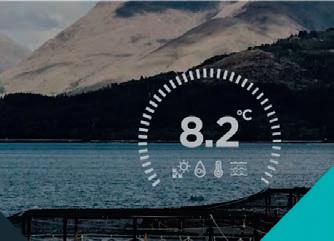
Quillien added: “The Connected Seafarm also enables actuation – turning equipment on or off remotely, for example – because knowing is only half the battle. If a producer is warned about an issue, then the next step is being able to act on that.”


Attendees were asked: “What is your biggest challenge in terms of fish health?”
The results were:

• Environmental factors (increased temperatures, HABs) 26%
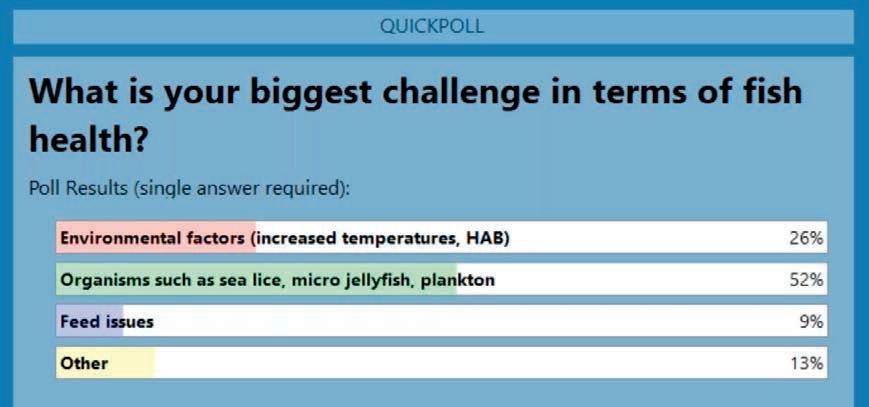
• Organisms such as sea lice, micro-jellyfish and plankton 52%
• Feed issues 9%
• Other 13%
They then had an opportunity to put questions to the panel. These included queries about nitrogen monitoring – which Husby confirmed was a parameter for RAS facilities – and how pump monitors can identify the vibration pattern of a wellrunning or malfunctioning pump.
Another question concerned reliability
and maintenance issues for the sensors themselves when located at sea. As Quillien explained, certain devices such as vibration monitors for the pumps are low maintenance, but some other sensors, such as those that are underwater, can be affected by fouling and need to be cleaned at least weekly. Some also use consumable elements and must be recalibrated when these are replenished.
Which are the parameters that provide the most serious warning signs? The panel agreed that dissolved oxygen is probably number one, as it is an issue that can cause serious problems in a very short space of time.
Another question was: “Could the data collected from farms be used as proxies for localised ocean conditions and environmental states?”
Absolutely, was the answer from Falconer, who said: “The positioning of fish farms along the coastline is indicative of what is happening and what has happened. And that can give some quite powerful insights into what might happen in future, both short term and long term.”
Finally, what is the near future tech that we don’t have yet that the panellists see as most exciting?
Husby said: “There are always some new features, but the challenge is collecting these data and combining them – we are probably close to entering that phase, quite soon.”
Falconer said: “We’ll see more farms with more sensors, and making use of them – and storing the data. The technology is there, but it will take a few more steps to make it operational at more sites.”
Quillien agreed that widespread adoption of the new technology is the first step.
He said: “There is no single silver bullet to solve all the challenges in aquaculture. It’s going to take a lot of different technologies and a lot of progress in different areas, which is why it’s exciting to see so much fantastic technology being developed. I hope we can get to play an important role in enabling the spread of technology!”
The Connectivity for Good webinar is available to view online at www.krucial.com/ connectivity-for-good-webinar
ALGAEUROPE 2022 algaeurope.org Conference about Science, Technology and business in the Algae Biomass Sector. Rome, Italy December 13-15, 2022
SEAGRICULTURE ASIAPACIFIC 2023 seagriculture-asiapacific.com 1st International Seaweed Conference AsiaPacific. Online February 8-9, 2023
2023
www.was.org
New Orleans, Louisiana, USA February 23-26, 2023
AQUAFUTURE SPAIN en.aquafuturespain.com Santiago de Compostela, Recinto FIG-Silleda, Spain March 28-30, 2023
LACQUA23 www.was.org Panama City, Panama April 18-21, 2023
OCEAN BUSINESS
www.oceanbusiness.com
The hands-on Ocean Technology Exhibition and Training Forum. Southampton, United Kingdom April 18-20, 2023
WORLD
2023
www.was.org
Darwin, Northern Territories, Australia May 29-June 1, 2023
www.seawork.com
Seawork is a “one stop shop” providing access to the commercial marine and workboat business. Southampton, United Kingdom June 13-15, 2023

SEAGRICULTURE USA 2023 seagriculture-usa.com
2nd International Seaweed Conference USA. Portland, Maine, USA (TBC) September 2023 (TBC)
AFRAQ 2023
Lusaka, Zambia November 13-16, 2023
FEBRUARY 24
www.was.org
San Antonio, Texas, USA February 18-21, 2024
SEAGRICULTURE EU 2023
seagriculture.eu
12th International Seaweed Conference EU organised since 2012. Trondheim, Norway June 21-22, 2023
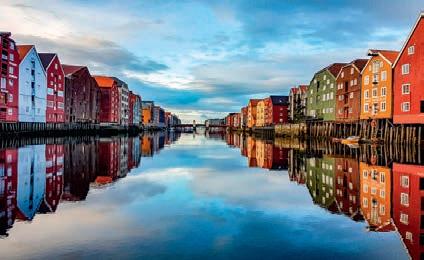
www.aquanor.no/en/ Trondheim, Norway August 22-25, 2023
AQUACULTURE EUROPE 2023
www.aquaeas.org
The European Aquaculture Society’s annual conference focuses on “Innovative Solutions in a Changing World”. Vienna, Austria September 18-21, 2023
AQUACULTURE UK 2024
www.aquacultureuk.com
Aviemore will once again be the venue for this biennial trade fair and conference. It is undoubtedly the most important aquaculture exhibition held in the British Isles. The show has a tremendous following and with increased investment for 2024 it promises to reach even further across the broader aquaculture markets in both the UK and Europe.
Aviemore, United Kingdom May 14-15, 2024
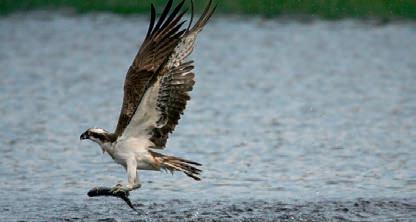
JUNE
www.aquaeas.org - www.was.org Stavanger, Norway June 24-28, 2024
WORLD AQUACULTURE 2024 Oman November 2024
VÓNIN and Crosby work together on aquaculture mooring hardware. The result is an aquaculture product line of mooring plates, shackles, chains and master links, for which Vónin is the exclusive supplier.
The complete Crosby Trawlex® range is enhanced with super-strength capabilities due to the special steels and heat treatment used. The heat treatment also ensures that ductility is retained, ensuring that the range is highly resistant to the effects of shock loading and wear.
These products are currently used throughout the fish farming industry in Norway, the UK, Iceland and the Faroe Islands.
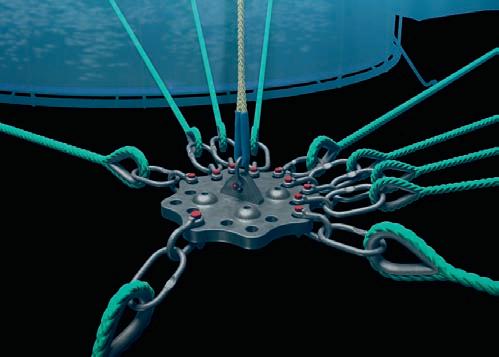
www.vonin.com
US manufacturer Caterpillar and Netherlands-based Damen Shipyards Group have signed a Memorandum of Understanding (MOU) aiming to develop methanol-powered vessels that enable the decarbonisation of marine operations.
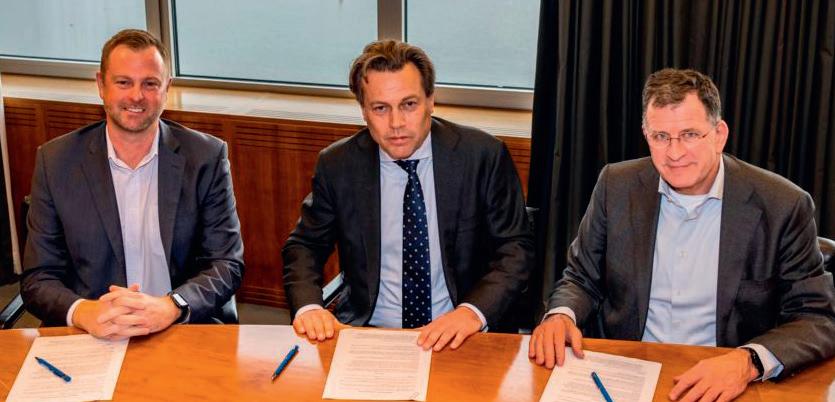
Damen Shipyards Group builds more than 150 vessels annually, including service vessels for the aquaculture sector. Under the MOU, Damen will collaborate with a team of experts from Caterpillar and the Cat® Dealer, Pon Power, to learn how to adopt methanol as a fuel in marine applications, including aspects related to bunkering, storage, management and conversion. Caterpillar will develop and provide the methanol power train to be integrated into a Damen-designed and -built vessel. Pictured below, from left, are: Derrick York, Senior Vice-President of Caterpillar Oil & Gas and Marine Division; Arnout Damen, CEO of Damen Shipyards; and Kees-Jan Mes, Managing Director of Pon Power. www.damen.com
SPECIALIST lighting business Signify has helped a salmon farmer to improve fish welfare and quality. Light – mimicking summer conditions – helps prevent salmon from reaching sexual maturity too early and the recirculating aquaculture system (RAS) farm operated by Havlandet in Florø, Norway, has been fitted with underwater lighting in the tanks. Signify is part of the multinational Phillips group. Steinar Grønnerud, Sales Manager, Aquaculture, said: “It is crucial to avoid dark spots in the tank and so reduce stress for the salmon. Based on the customer’s situation, the depth of the tank and the water quality, we will develop a lighting plan in which the light is as uniform as possible.” www.signify.com

CHILEAN fish farmers are finding that the rigid Sapphire X18 seal net from Garware Technical Fibres not only protects against sea lion attacks, but can also save diving man-hours because it is easier to maintain. Garware says the X18 has proved easier to install and uninstall than other seal nets, is more robust and is more adaptable to different farm setups. Also, after uninstallation, it keeps its shape and is more economical to service.
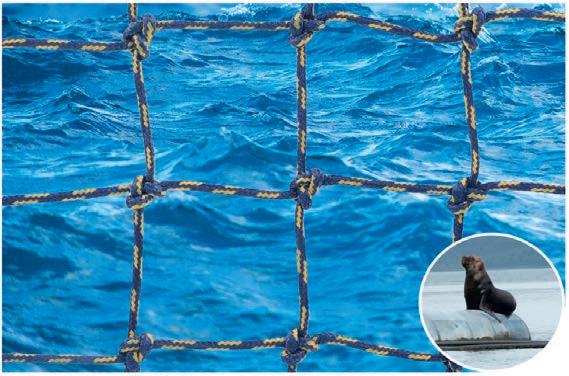
Marcos Jofré, Garware Technical Fibres Chile business associate, said: “Our customers in general are already testing it – it works well, some have even migrated to this rigid wall solution, noting good operational results in the farming centres.”
www.garwarefibres.com












































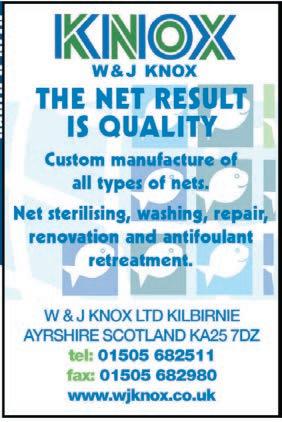





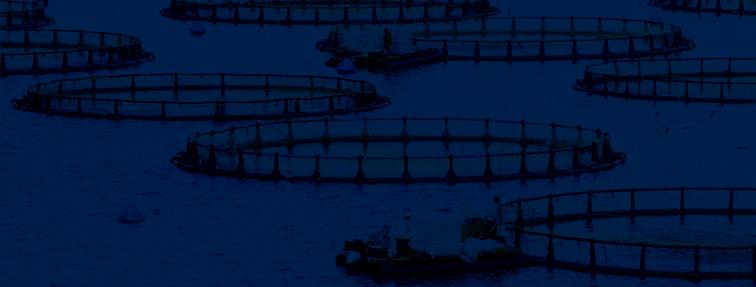
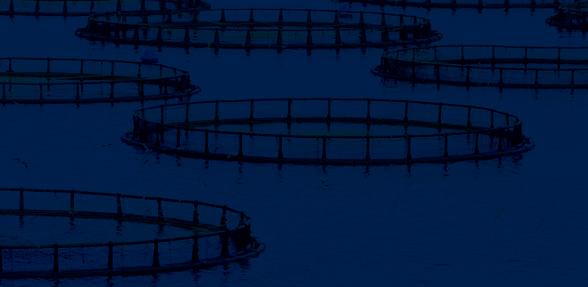





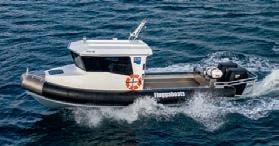











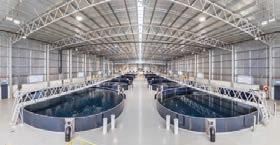













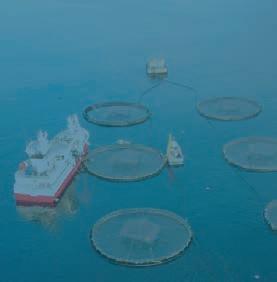





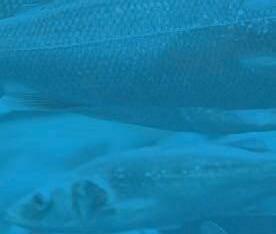
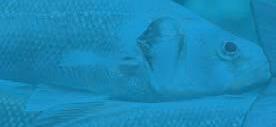
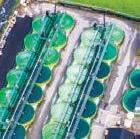
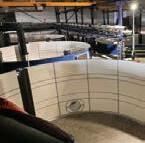
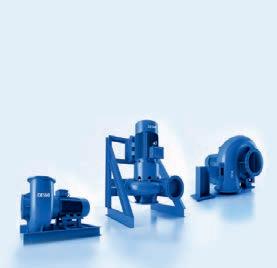


Every now and then, when a fit of madness takes me, I order a couple of boxes of salmon. It is partly masochism, as my partner Nici complains that the house smells of salmon for days afterwards, but I think it’s good for me.
I was always in the production side of the industry and rarely had to do much except gut the odd fish now and then. Of course, in the early days of the industry at Kyles of Bute, operating a small 250-ton farm we had to handle more of the jobs in-house.
We had harvest days twice a week at peak and our eight-man crew, boosted by a couple of part-timers, would harvest and pack in one day. The numbers weren’t huge, but it was still a heck of a job.
The method was a priest (a blunt instrument for stunning the fish) and a sharp knife. The tubs held half a tonne and the landing craft could carry four tubs. We’d bring the fish ashore and take them into the shed, which was also the feed store, offices, staff accommodation and packing station.
The one blessing was that, in those days, customers wanted to buy their fish whole, so there was no cutting required. There was enough hassle, however, just getting the right sizes to the right people in the right quantity, in time for the lorry pick-up.

I can’t remember anything more exhausting in my career than those long days with so little room for error or time. But they didn’t teach me much about handling fish post-harvest.
The truth is I went through the early part of my career blissfully unaware of the incredible skills of a salmon filleter. I would walk through a processing plant and watch people doing it and it looked so simple. Everything does, if you have the right kit and the dexterity to use it.
Then I worked for many years with Andy Bing, my partner in Loch Duart who had worked on a filleting line in a smokehouse and so he made it look easy. My first attempt, I am glad to say, was witnessed by nobody, especially Andy. He would have howled with laughter. Yes, there were two fillets, but they looked like they had been attacked by a dog rather than cut. The yield was atrocious and I would have sacked myself immediately if I had had that option. I didn’t cut myself, but I think if I had tried I would have missed. I did not have the right knives, but actually I just didn’t have the right level of hand skill.
So now you may see why I think ordering whole salmon is part masochism. The process tortures me because I have seen people who can do it so well and yet I have never really mastered it. The whole event is littered with me cursing and complaining bitterly. Each and every time I ask myself why on Earth I do it, but then that evening, sitting eating a couple of mangled fillet portions, I smile and love every moment of eating it. Yes, I hate the pin-boning, the skinning, the slime and muck everywhere, but isn’t that just the point? If all of the food we eat is fully prepared for us, then we never get to value it. We don’t put any effort in, so we don’t get the same pleasure at the other end.
I have learned to pluck and gut many birds. I can skin and prepare rabbit. I can skin and butcher (badly) sheep and roe deer.
I can prepare most types of fish. Some of these skills were taught by kind friends, some self-taught, but what I’ve only just realised is that the amount of pleasure achieved in eating is, for me, intrinsically linked to the effort I put in to prepare it.
I have two very dear Russian friends, who I used to meet for a long weekend now and then. On one of these, Kolya, asked me if I knew how to shuck an oyster. I had worked on an oyster farm in my youth so I had a vague idea. On arrival at the gîte in France, Kolya said that he had ordered 36 oysters for the following night. I was really looking forward to them. When they arrived, I dutifully started shucking them, but as fast as I shucked, Kolya and Lena ate them, and out of a total of 36 oysters I managed to eat just two. Sometimes it’s best not to admit to a skill.
When you’re just about to stand up and carve your turkey, with all of the trepidation that I usually have, remember it could be so much worse if you have hand skills like mine. Do have a happy Christmas and New Year!
My first attempt, I am glad to say, was witnessed by nobody
”

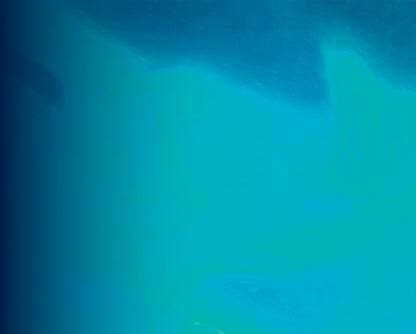

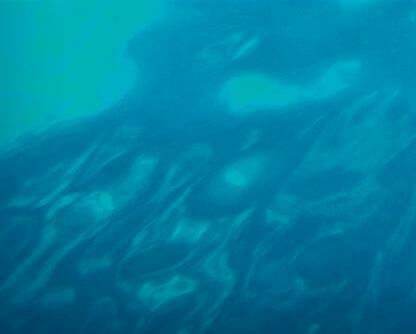














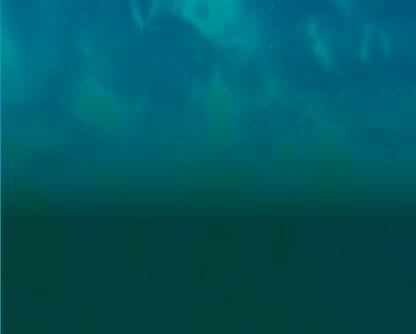






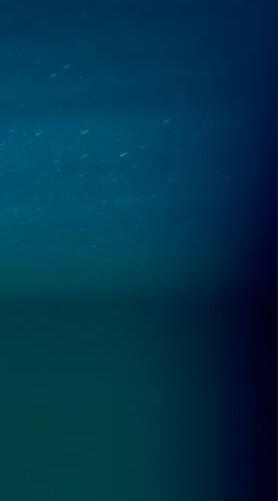

























In Benchmark Genetics our world leading geneticists work continuously to ensure our customers the best possible start to successful aquaculture production. Our innovations have resulted in breakthroughs and continued improvements on both survivability, disease resistance and growth.
With secure ova supply every week of the year, on the ground technical support and new projects focused directly on tailoring our genetic traits to local conditions, we are strongly committed to our customers and helping them to achieve their goals


